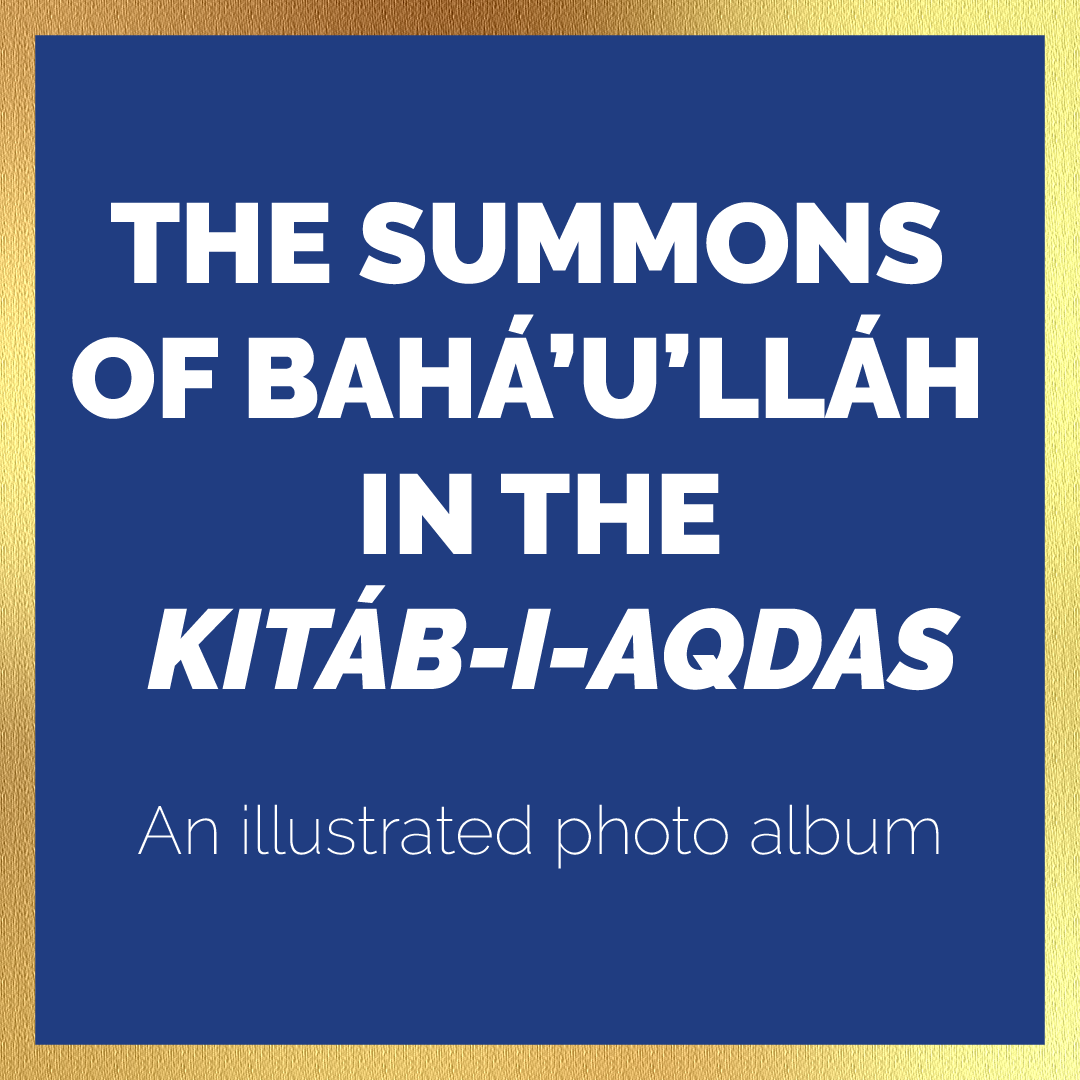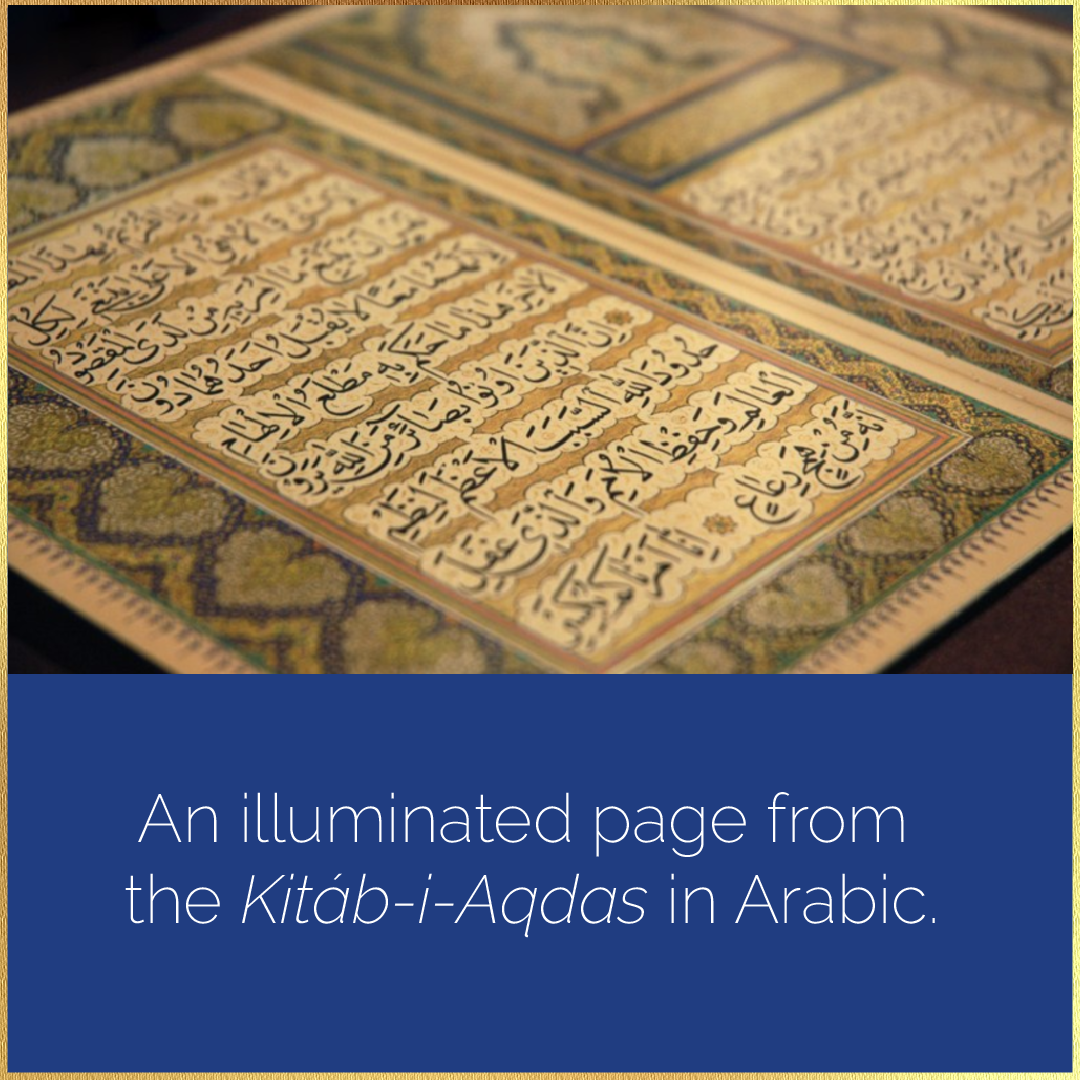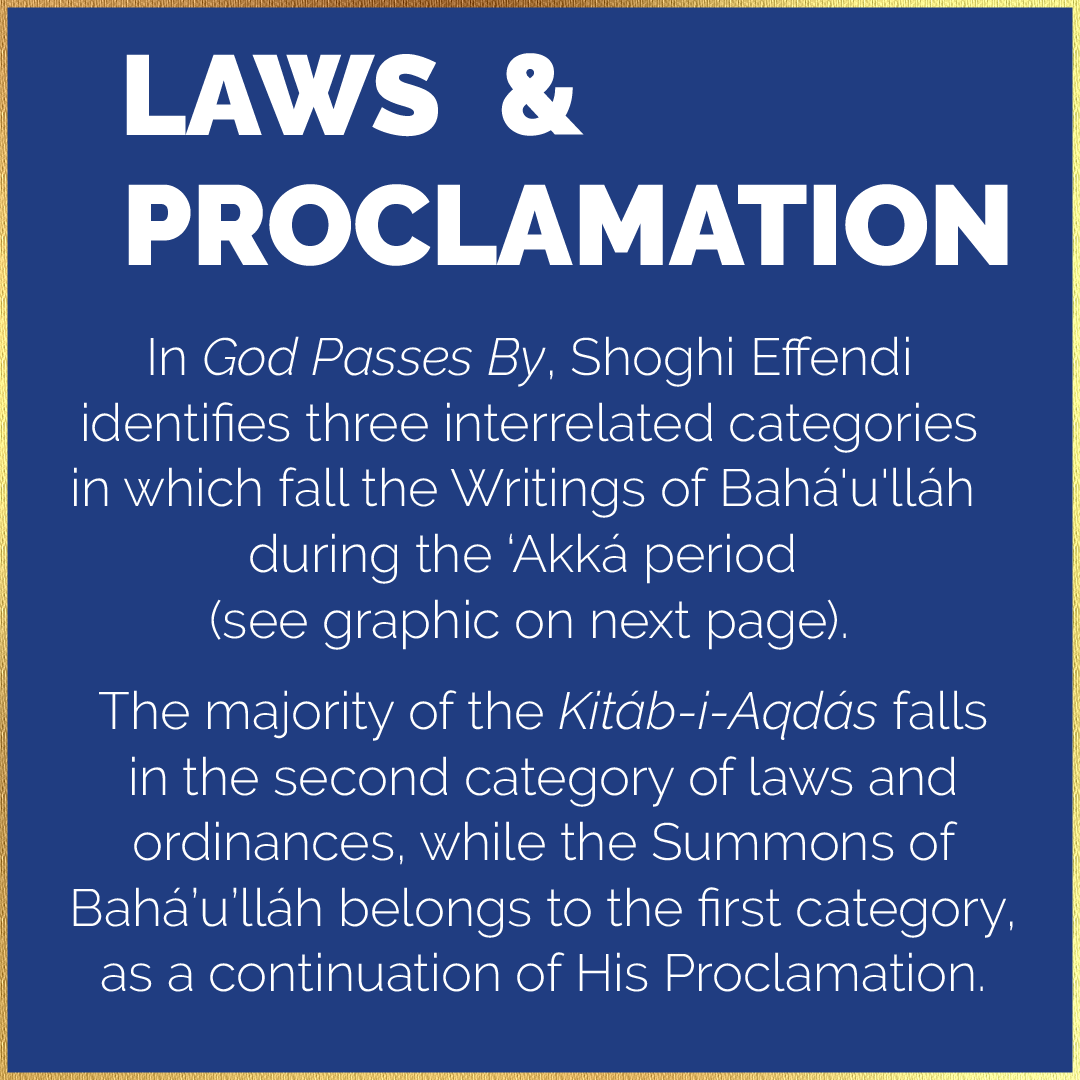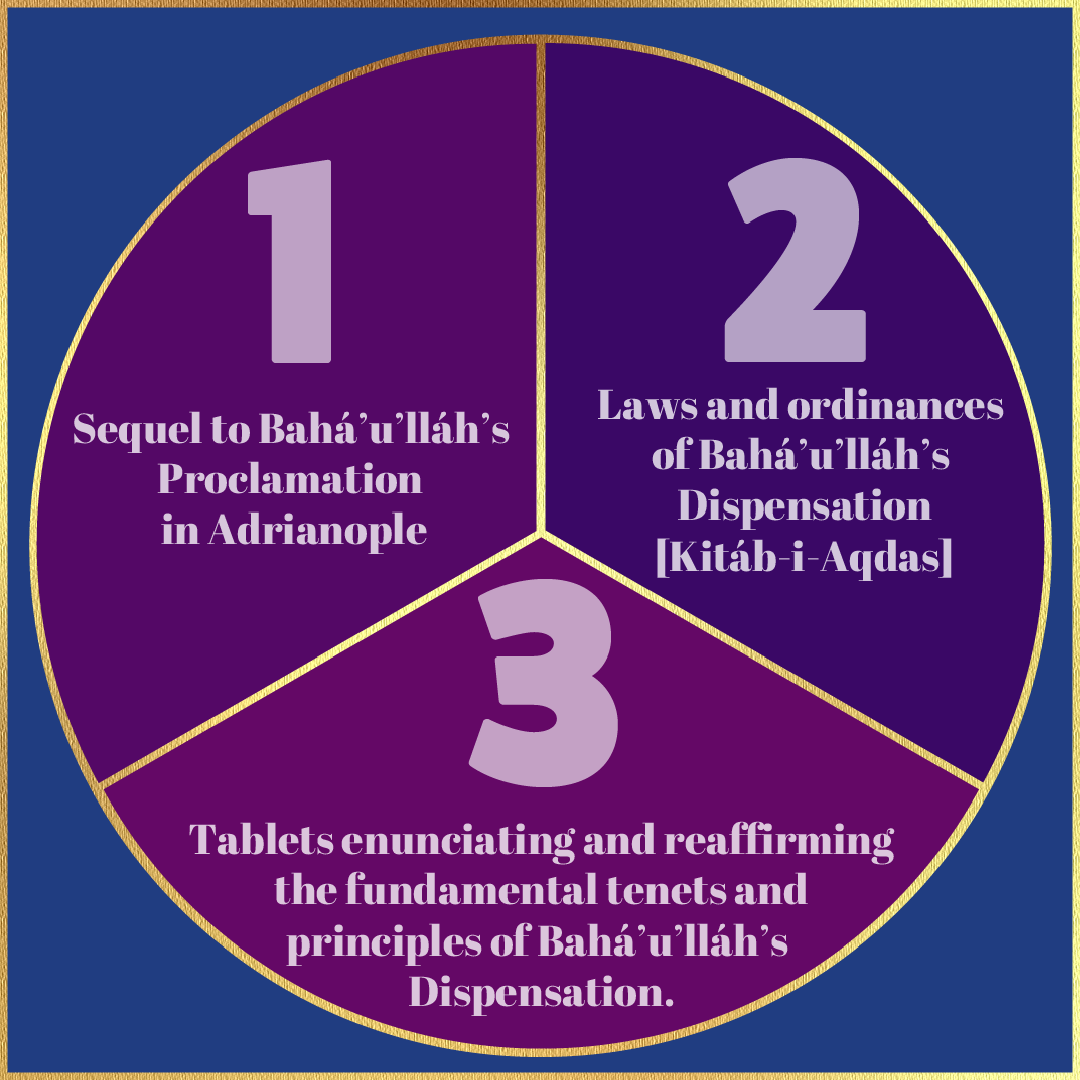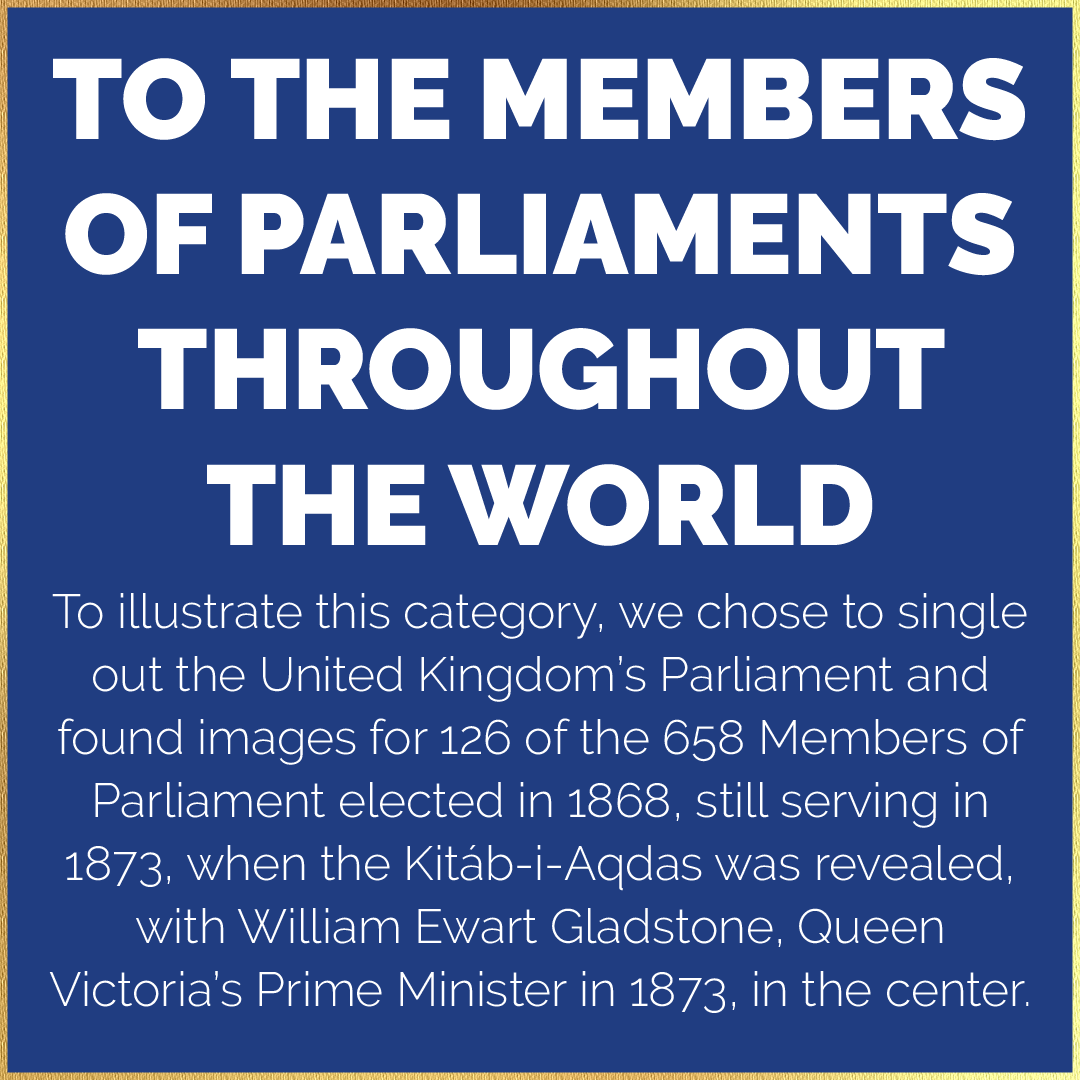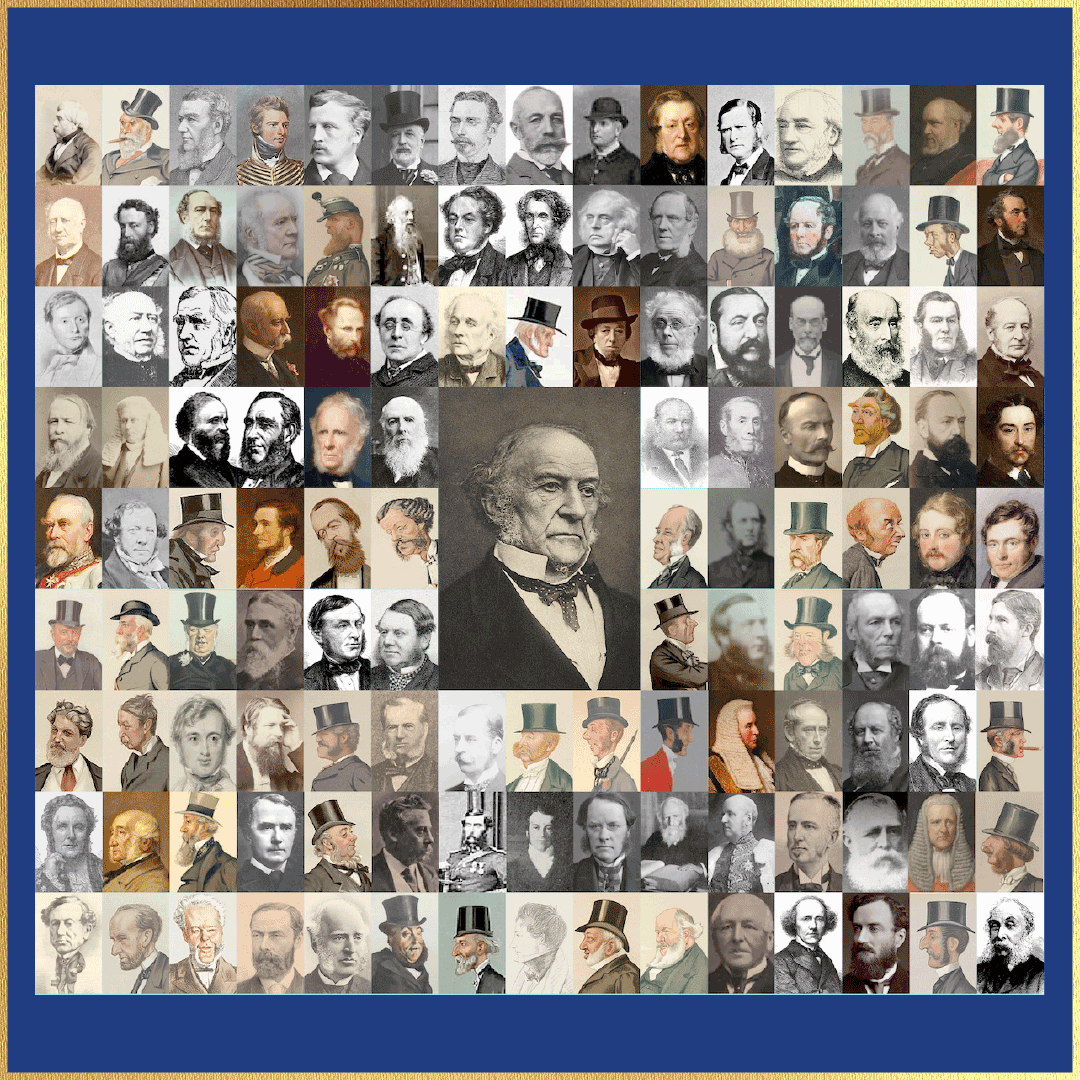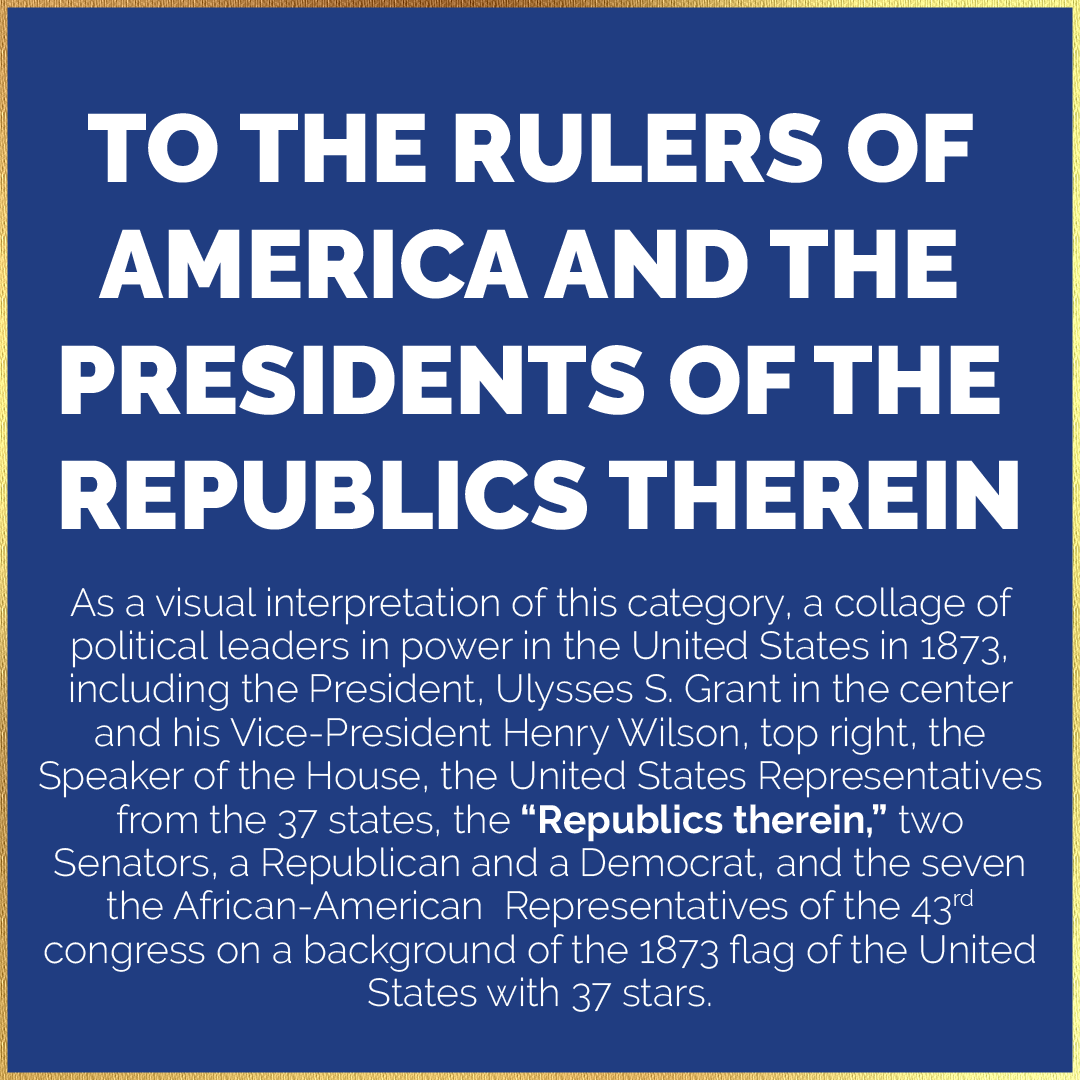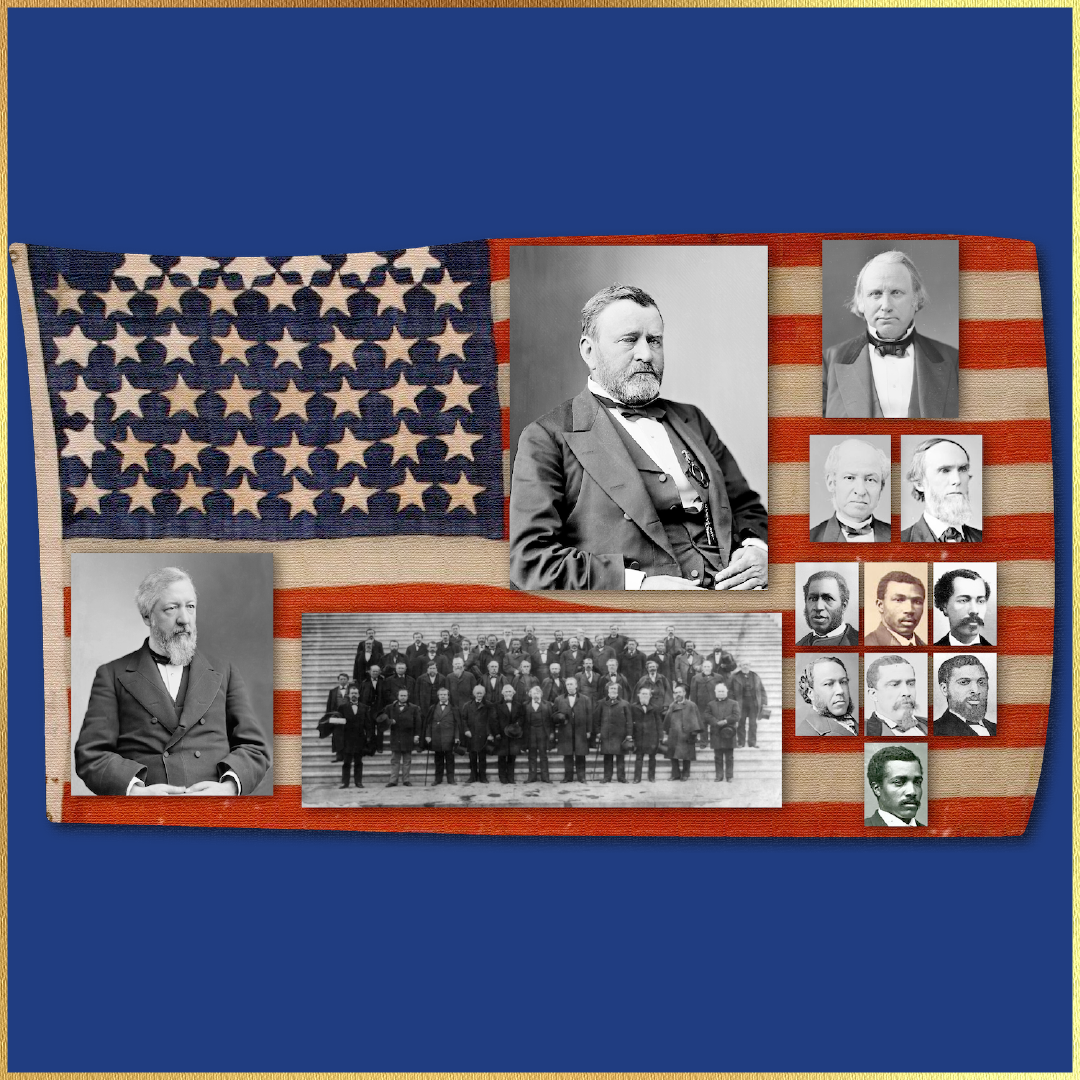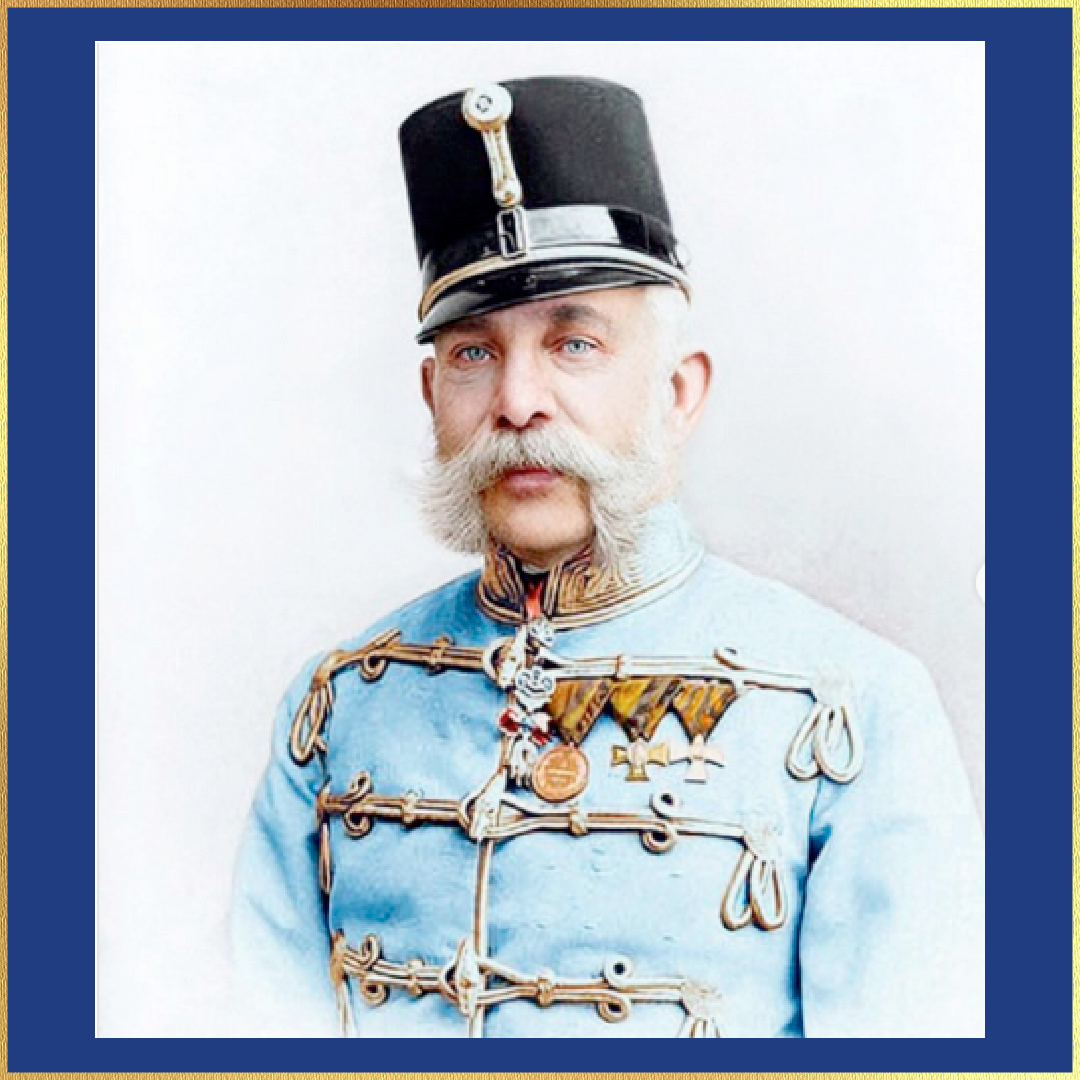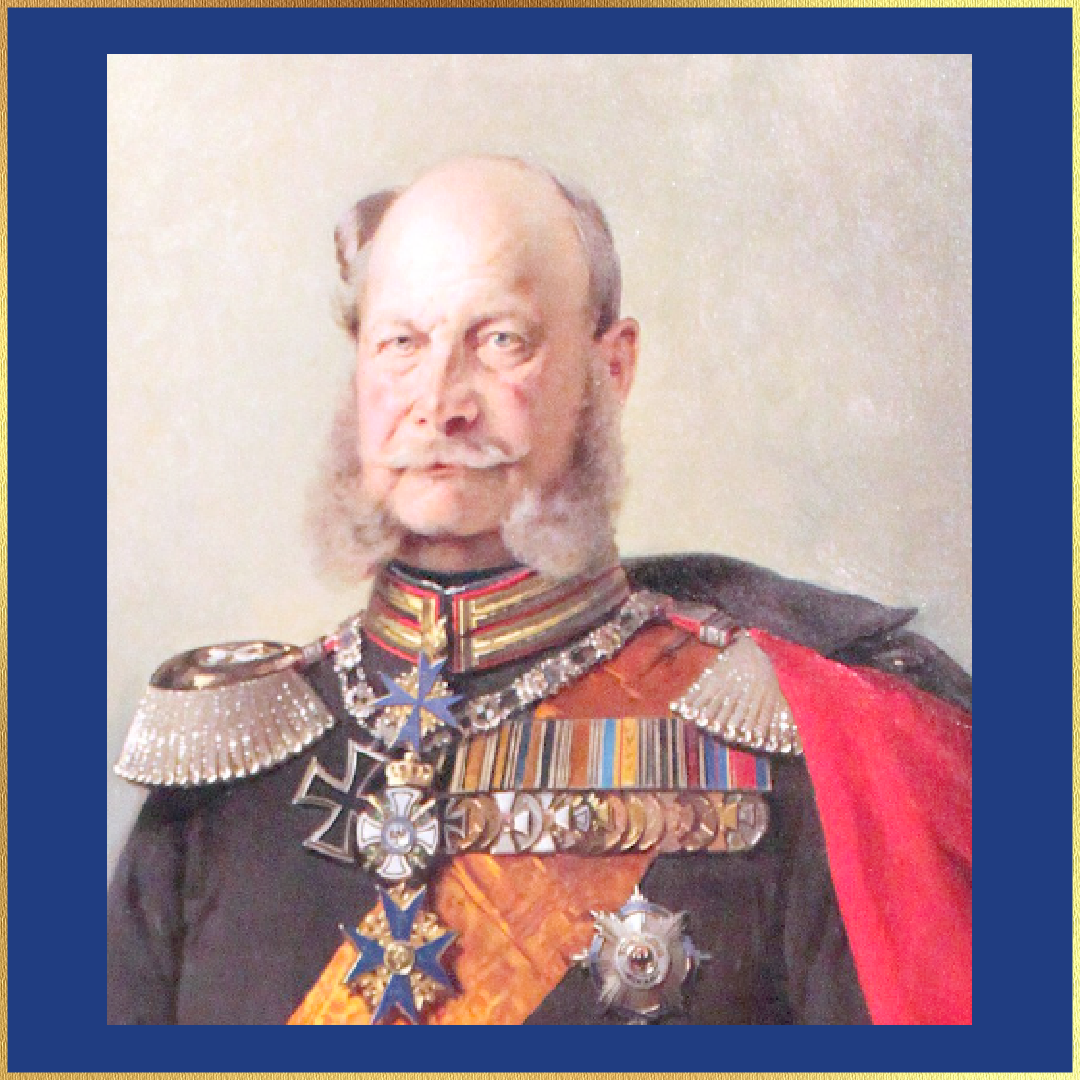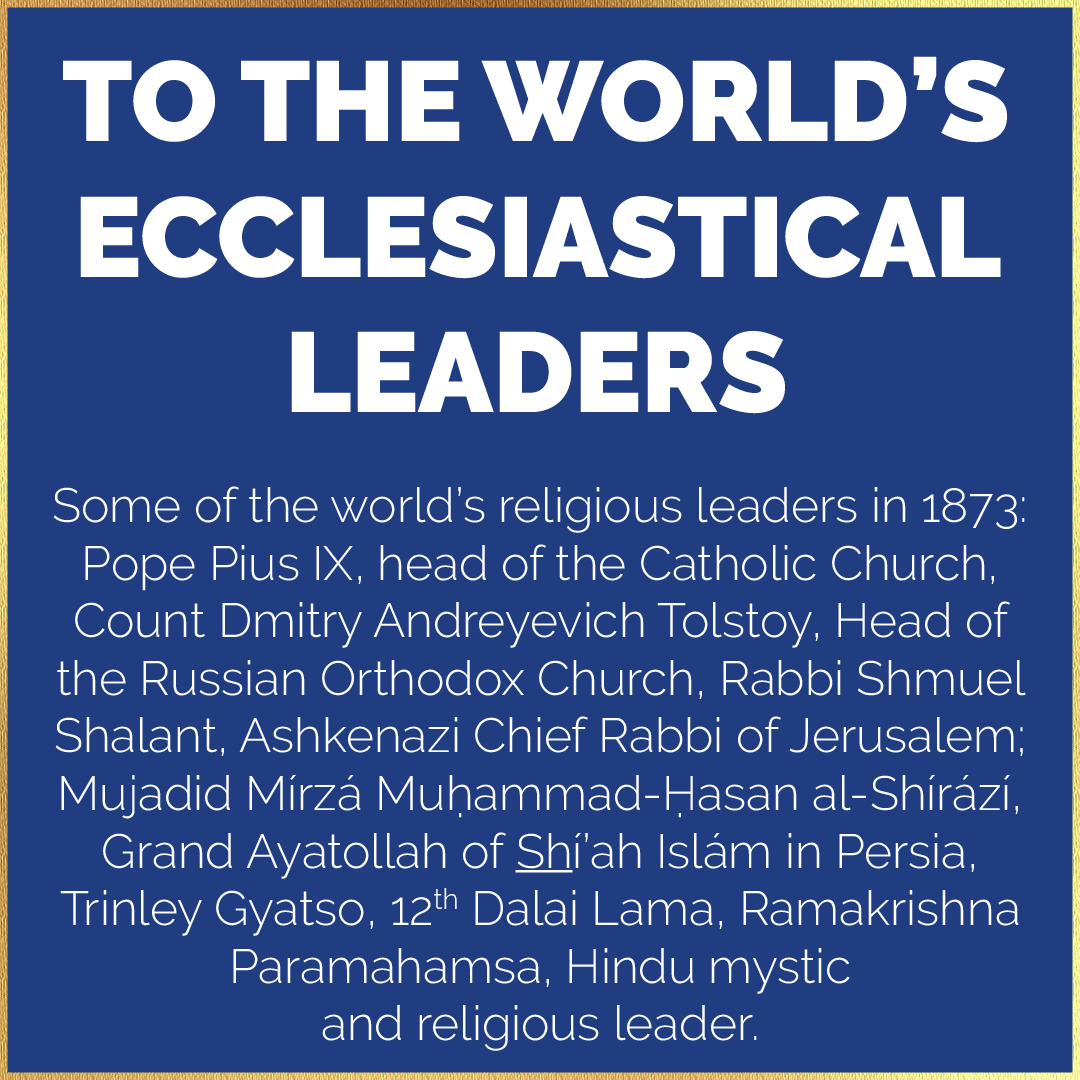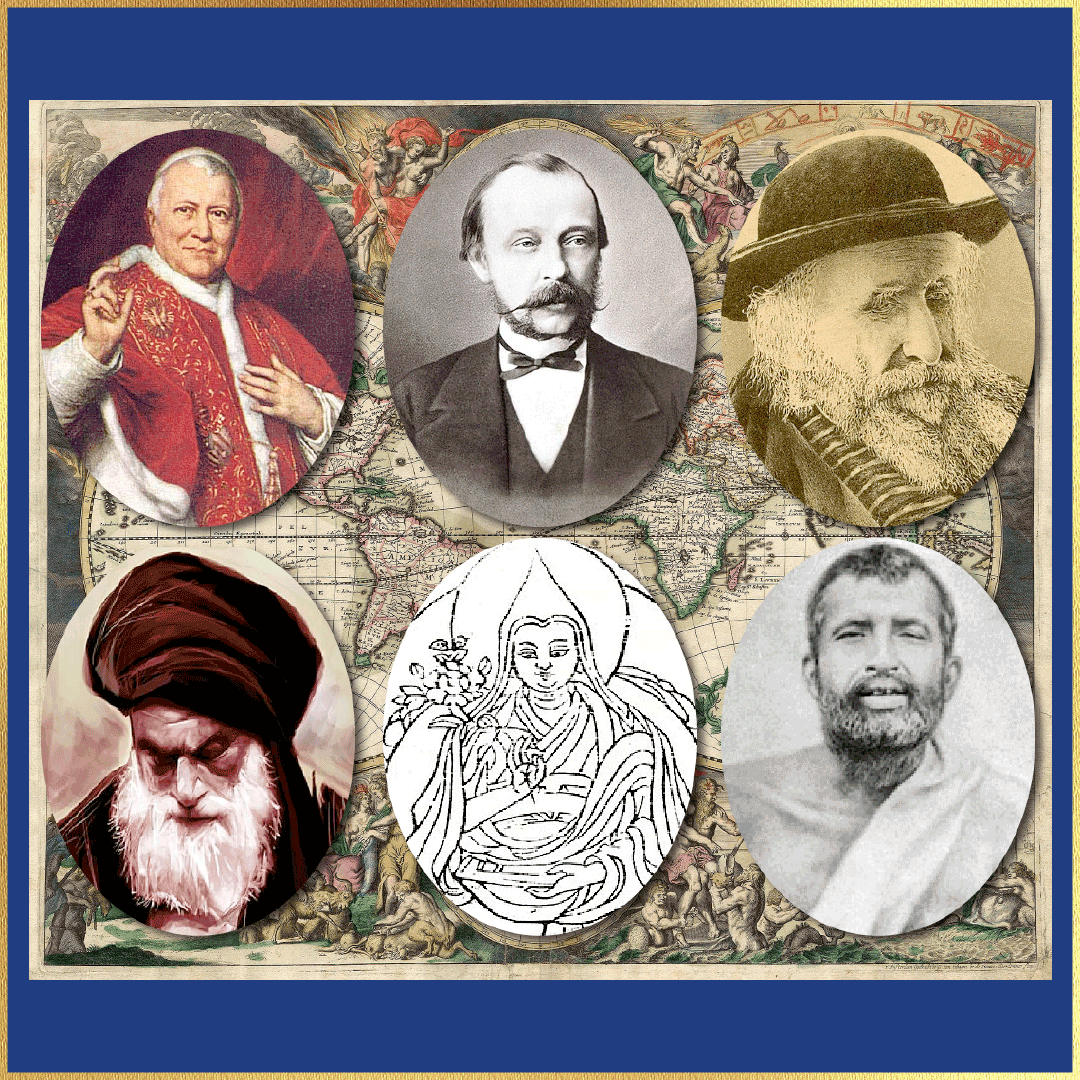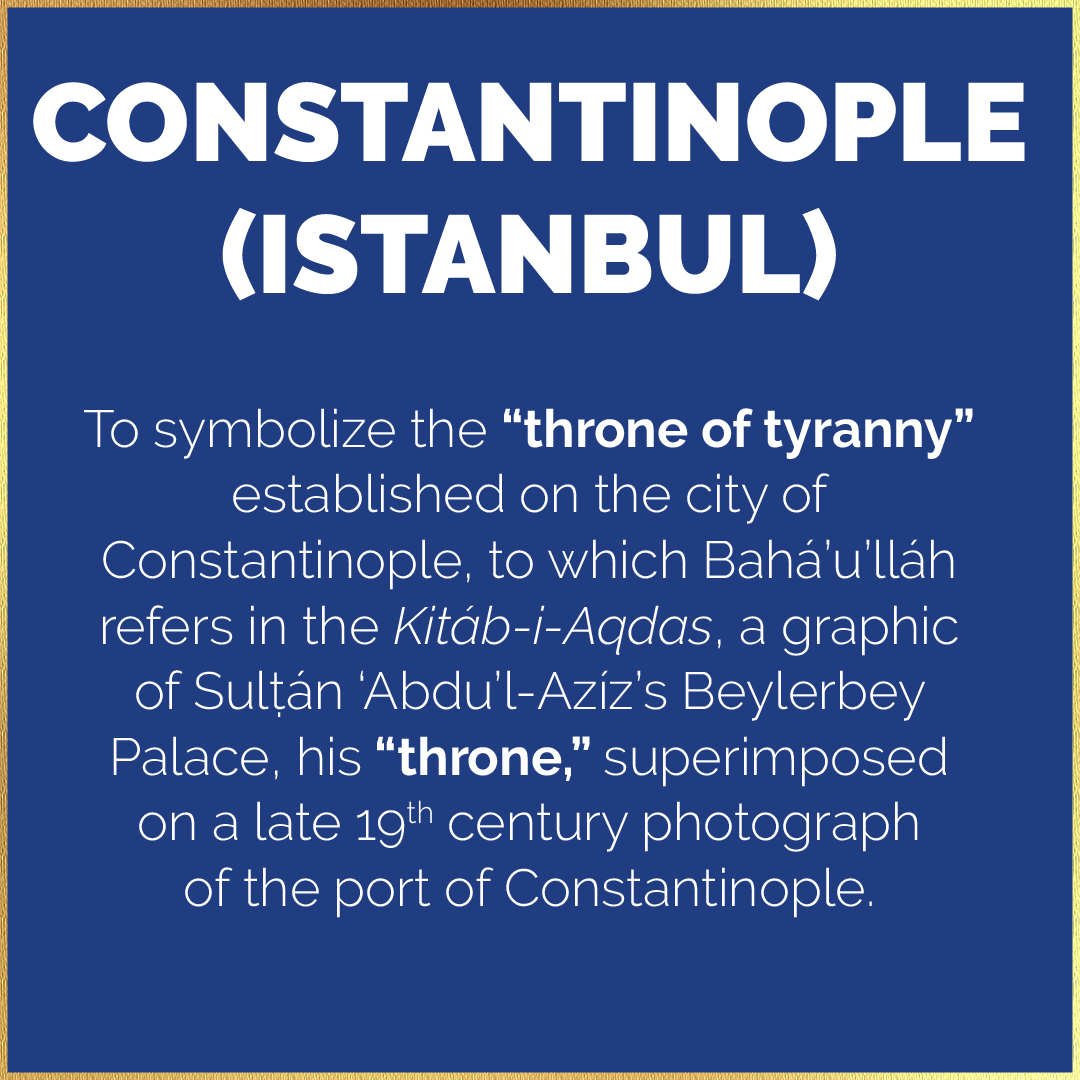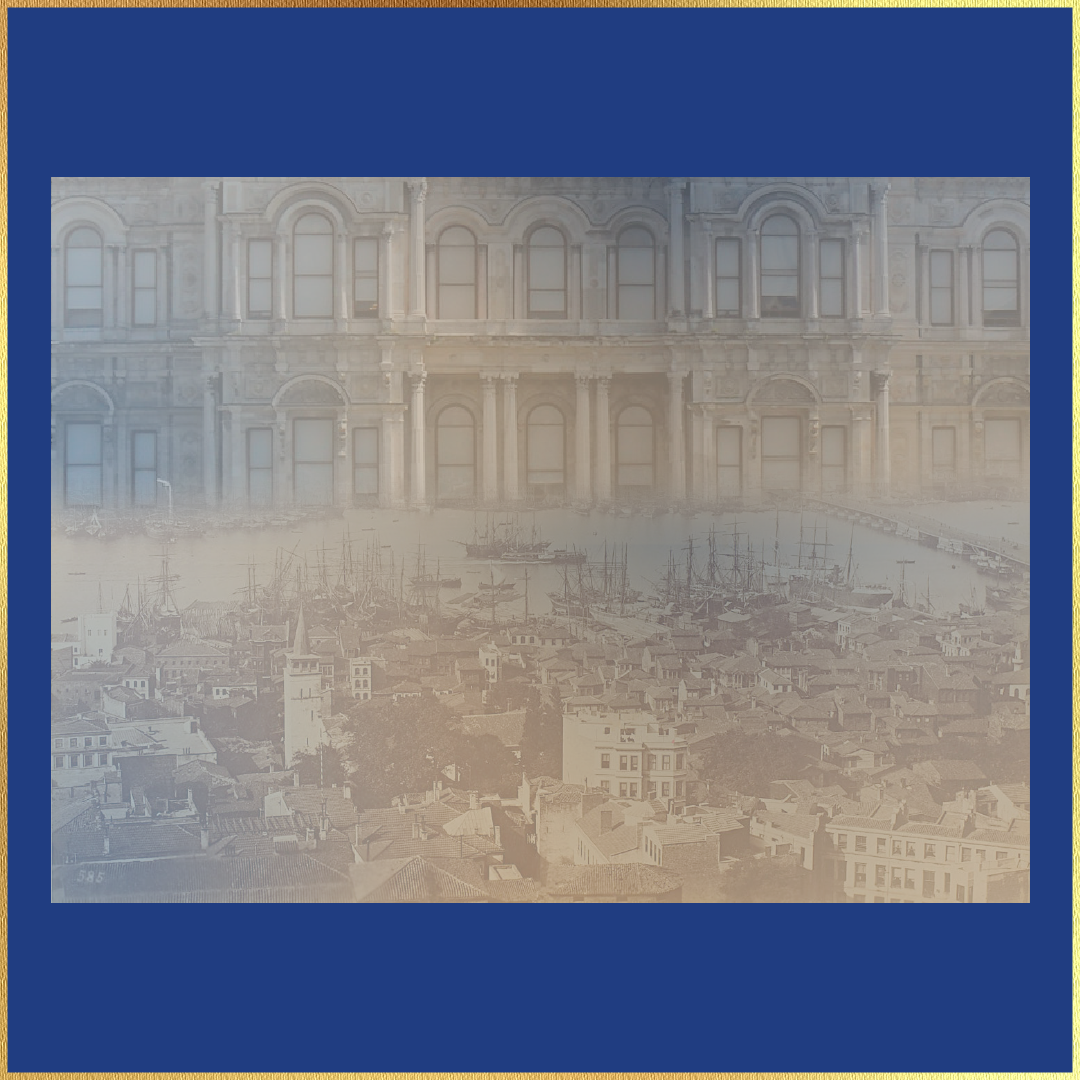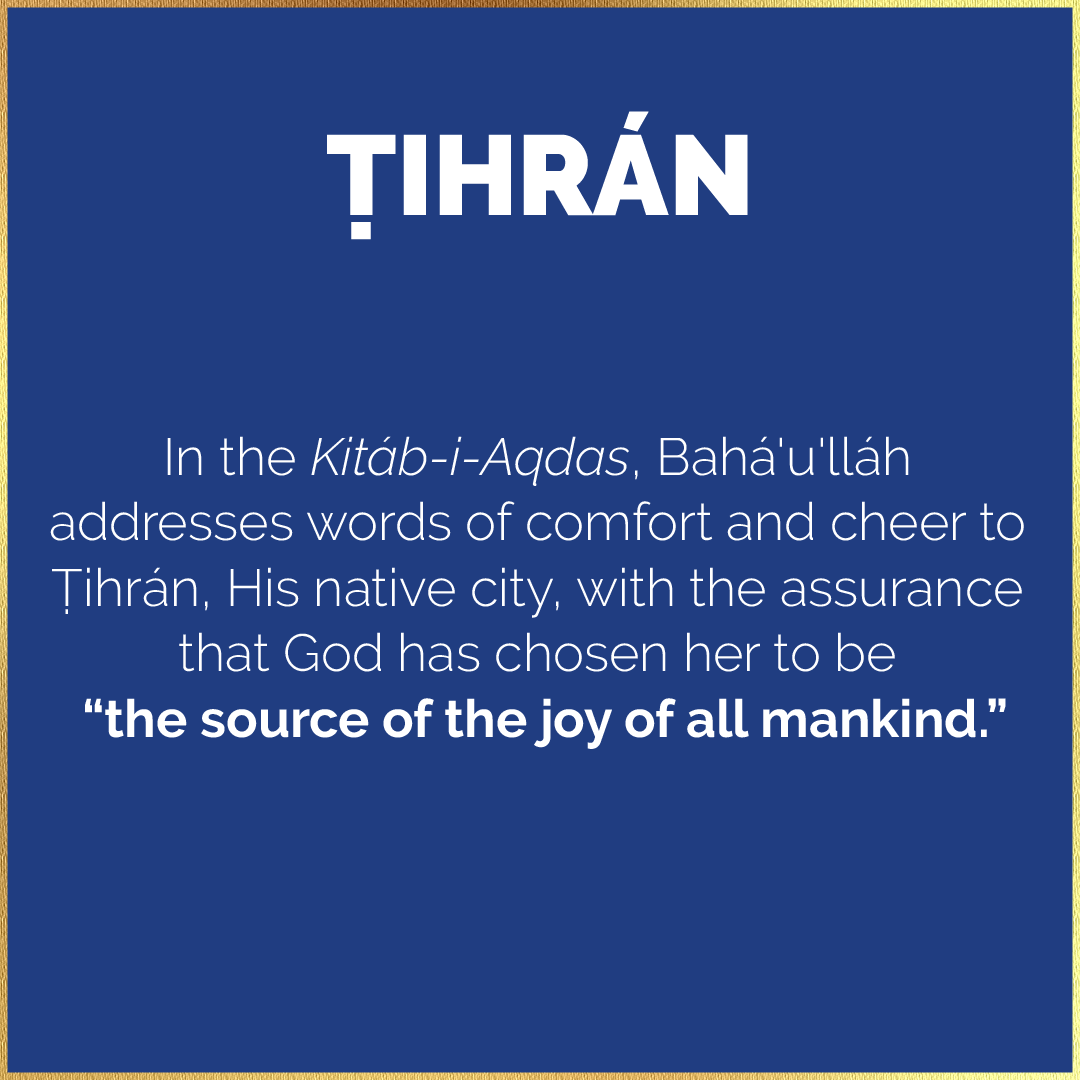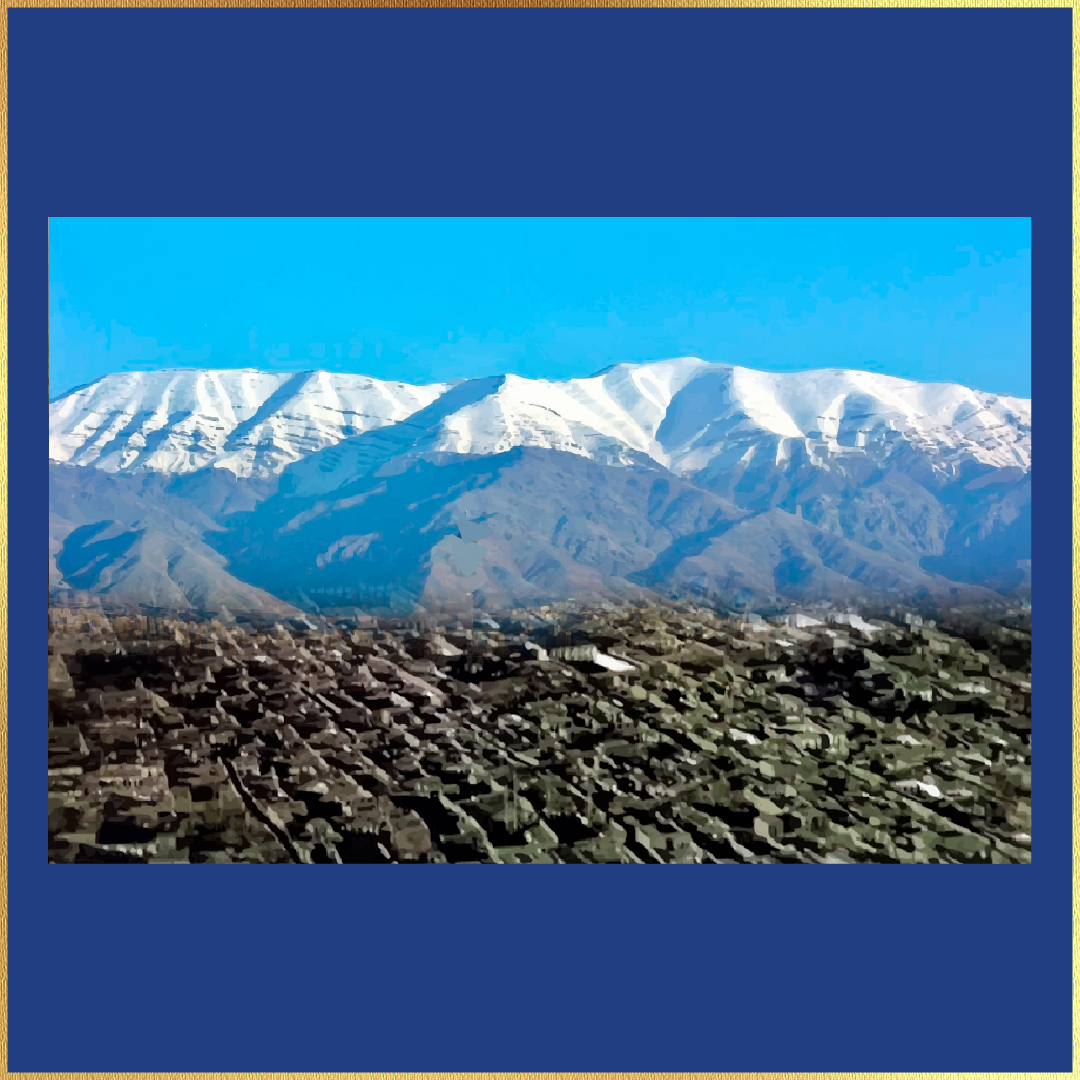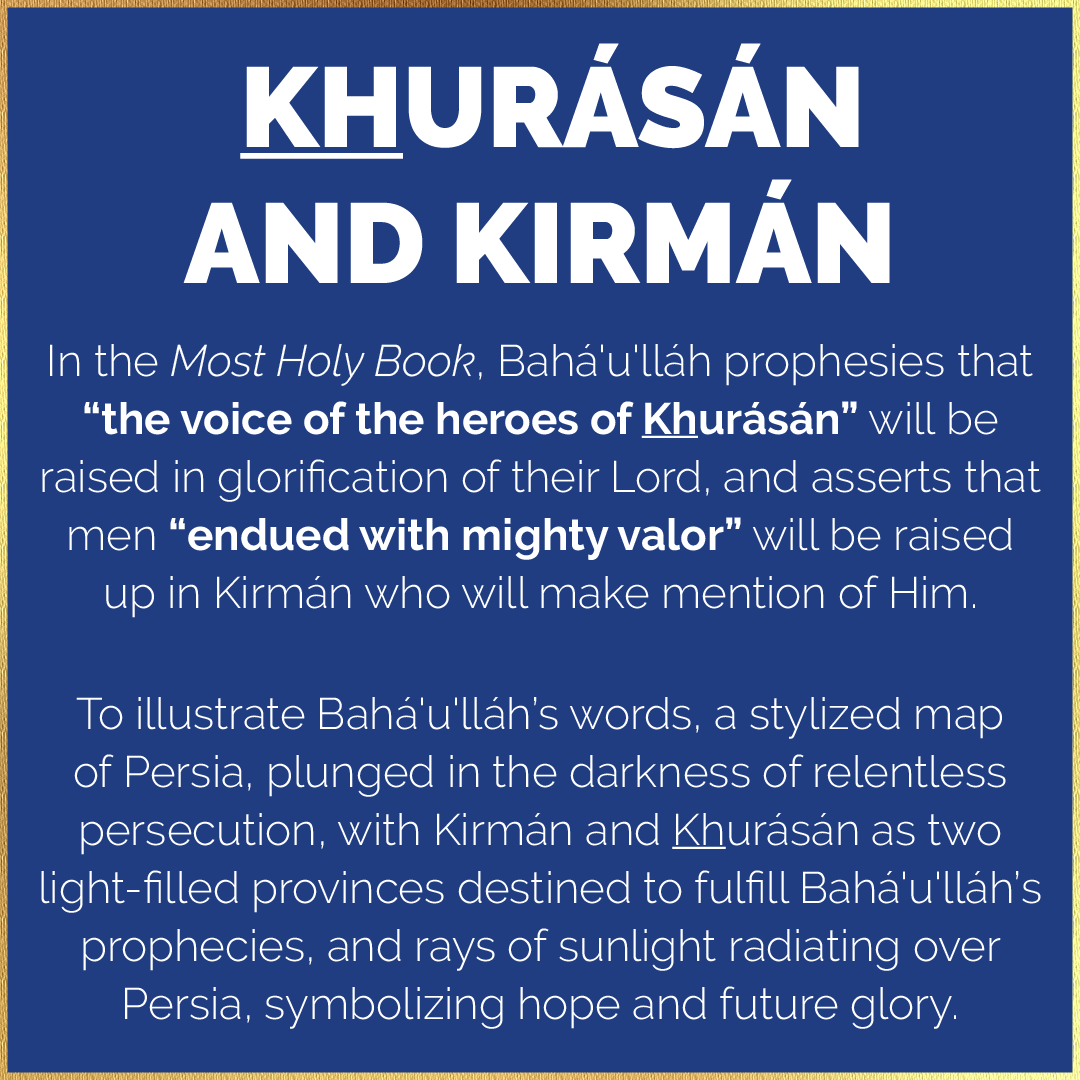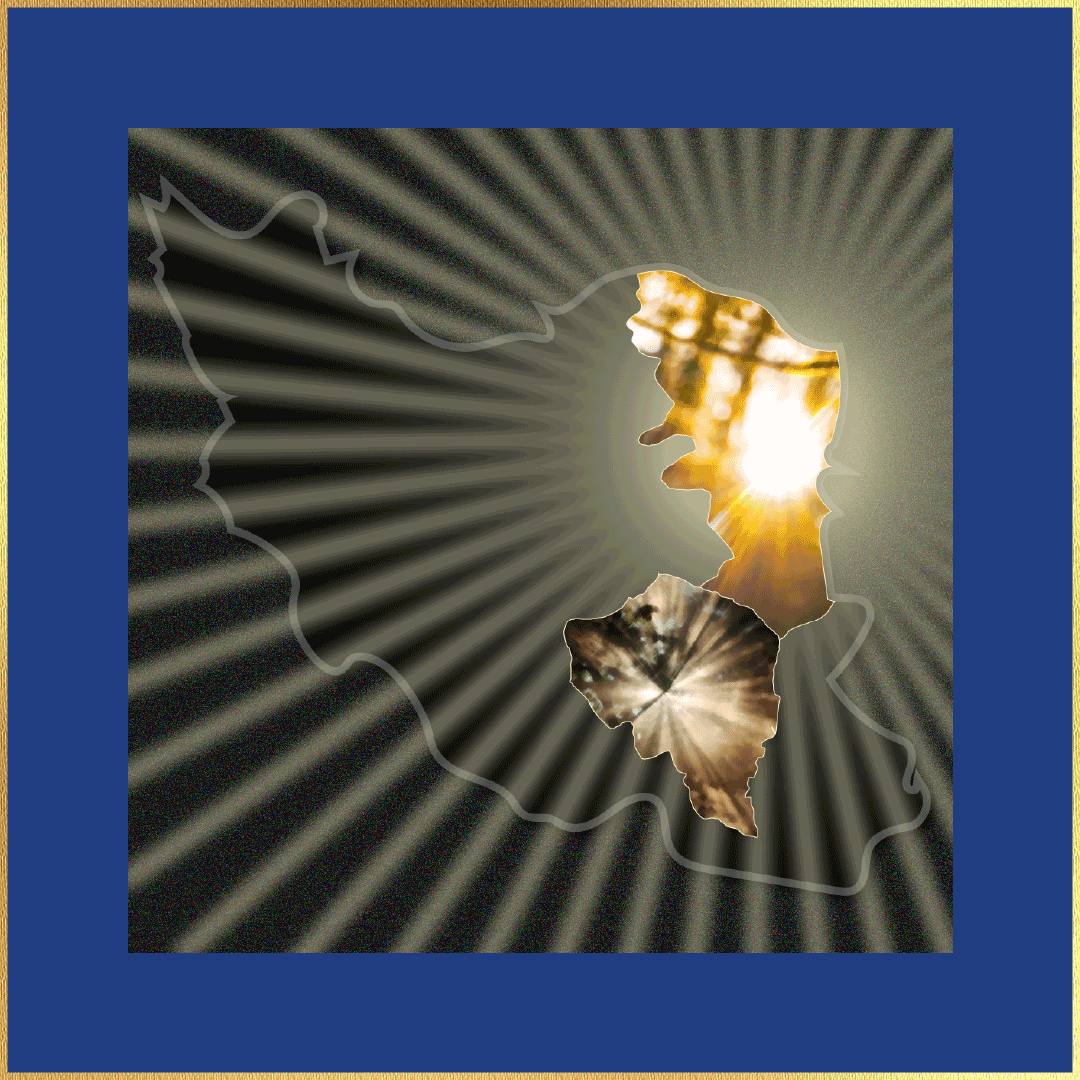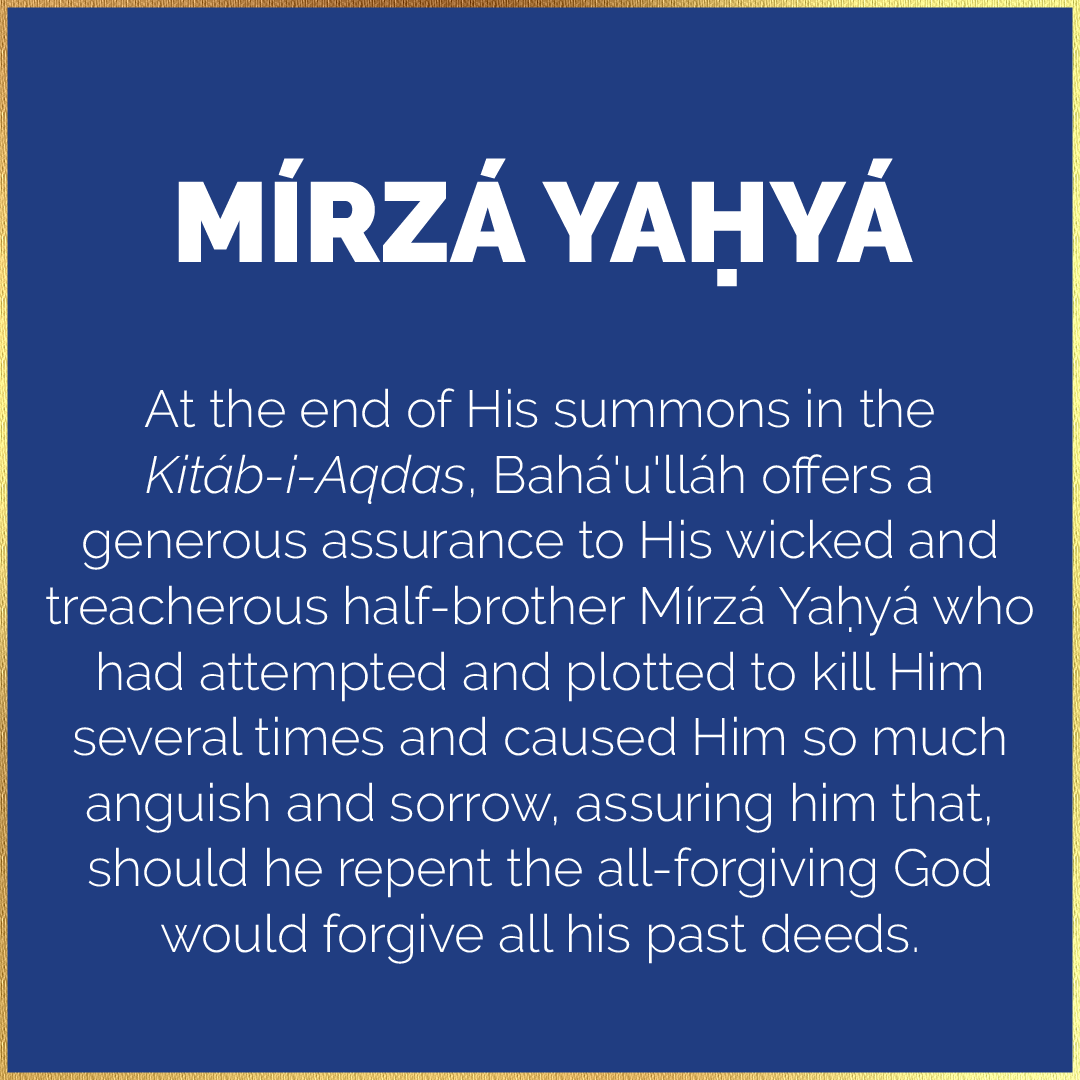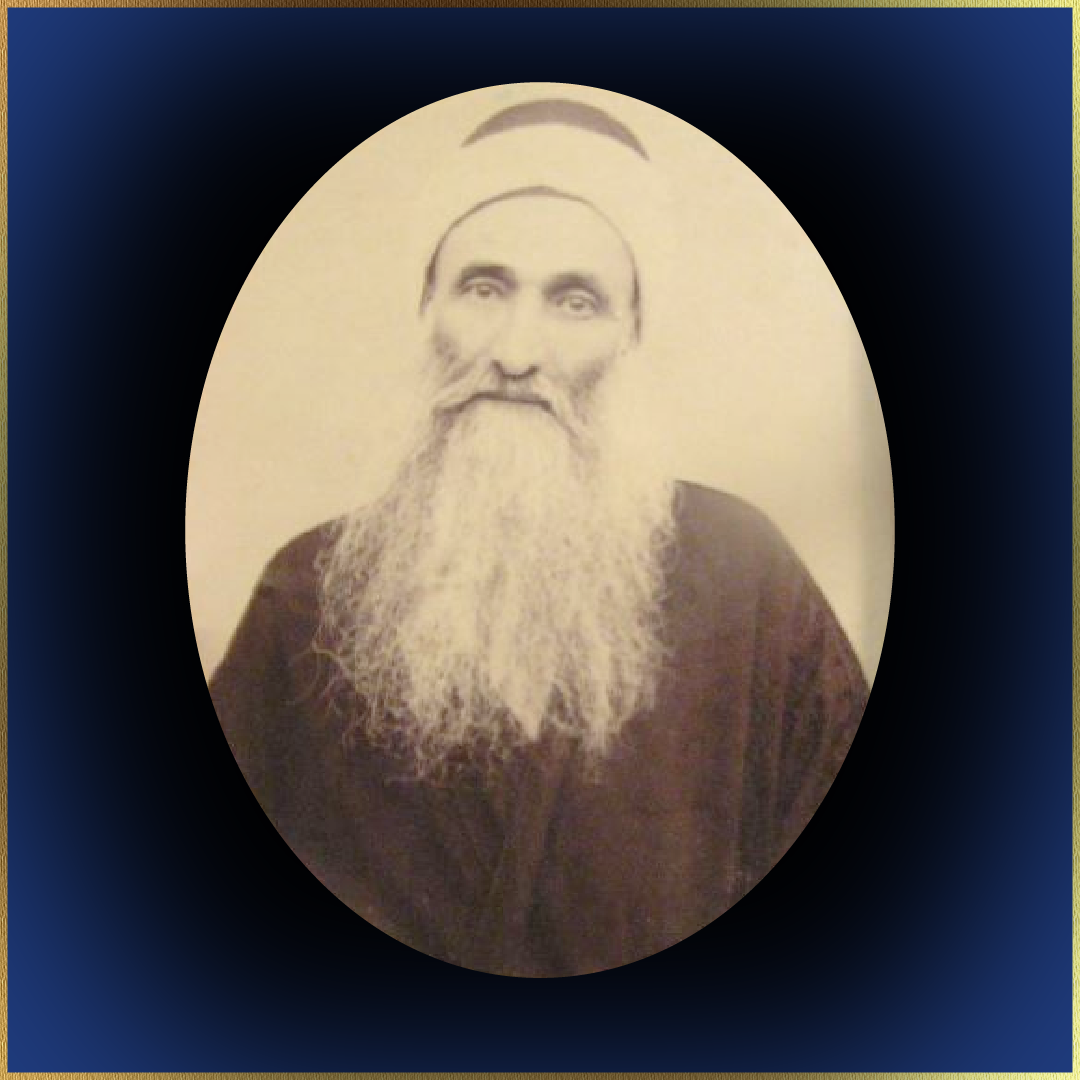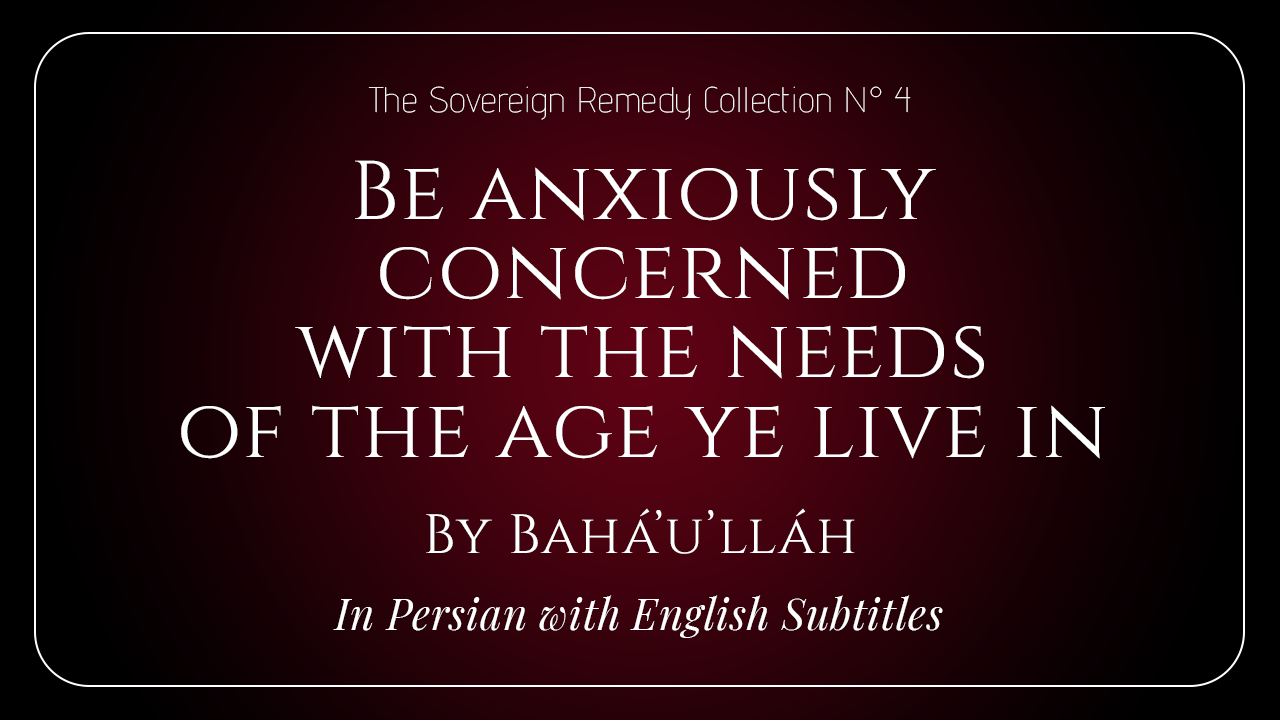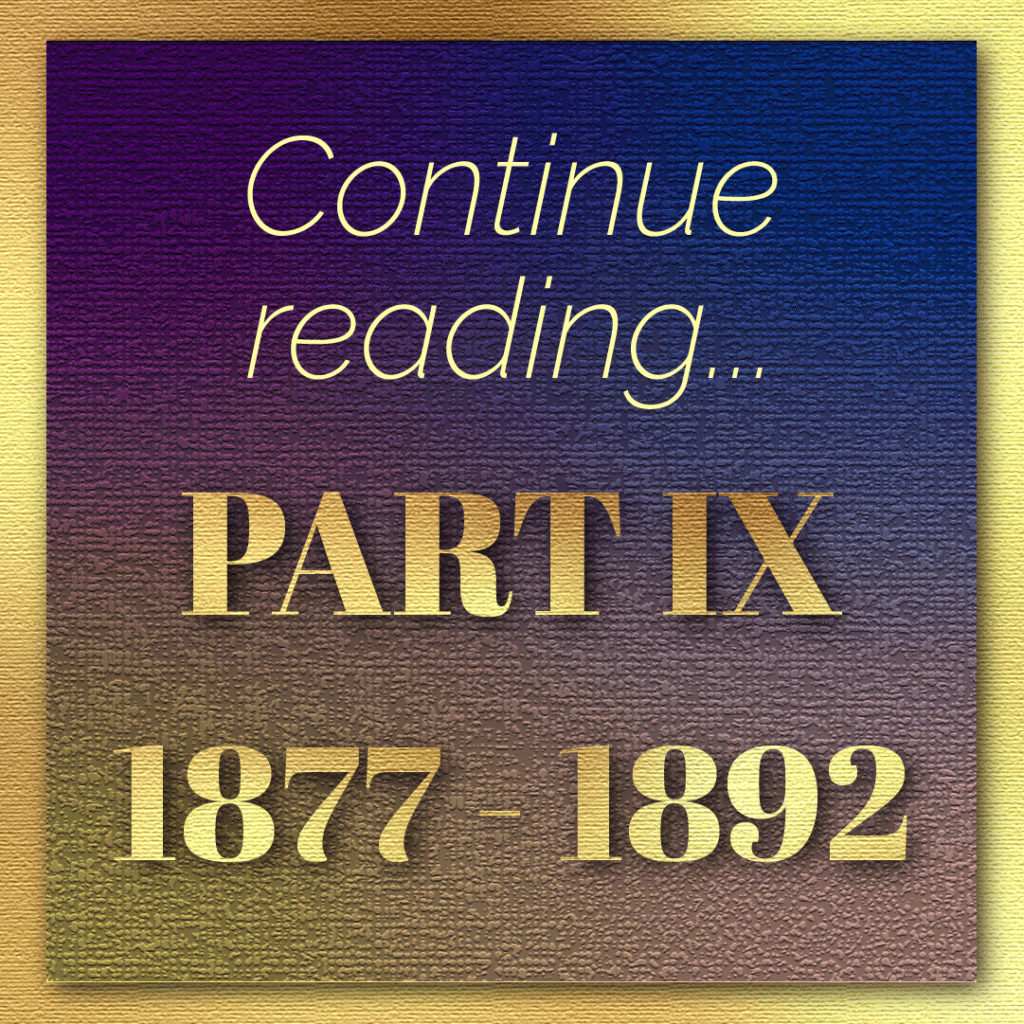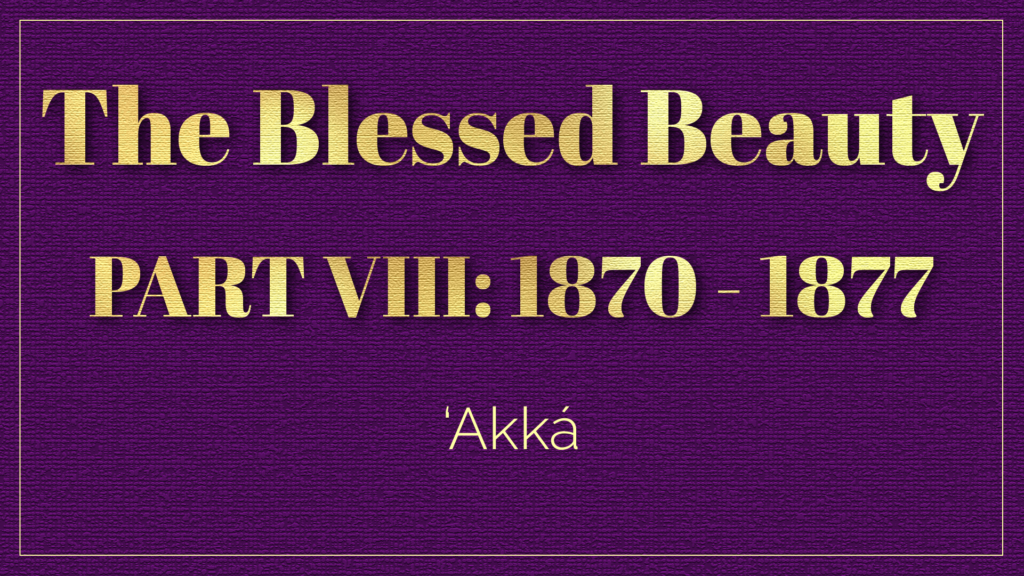
Written and illustrated by Violetta Zein
This part covers the life of Bahá’u’lláh between the age of 53 in 1870 to the age of 60 in 1877.
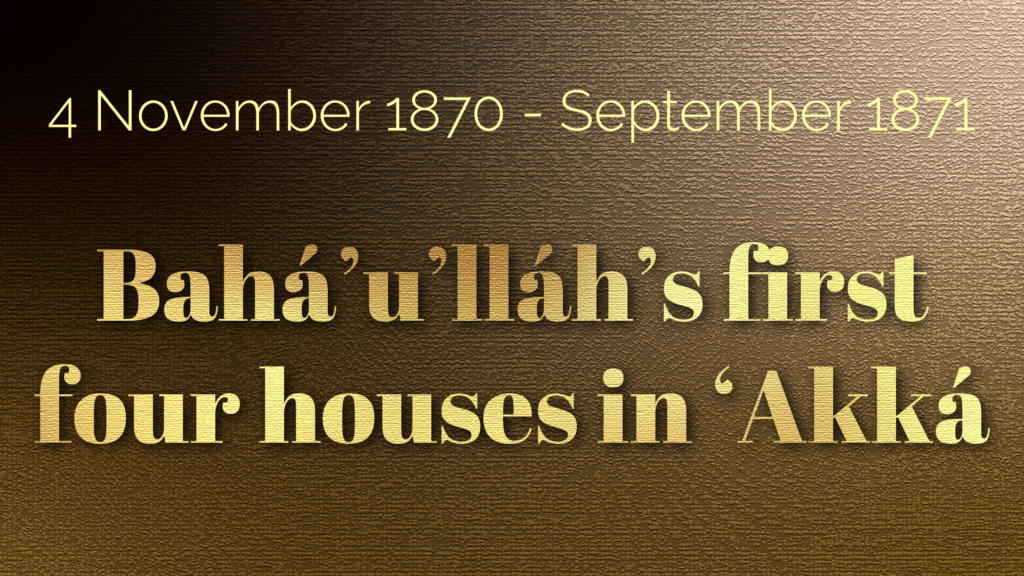
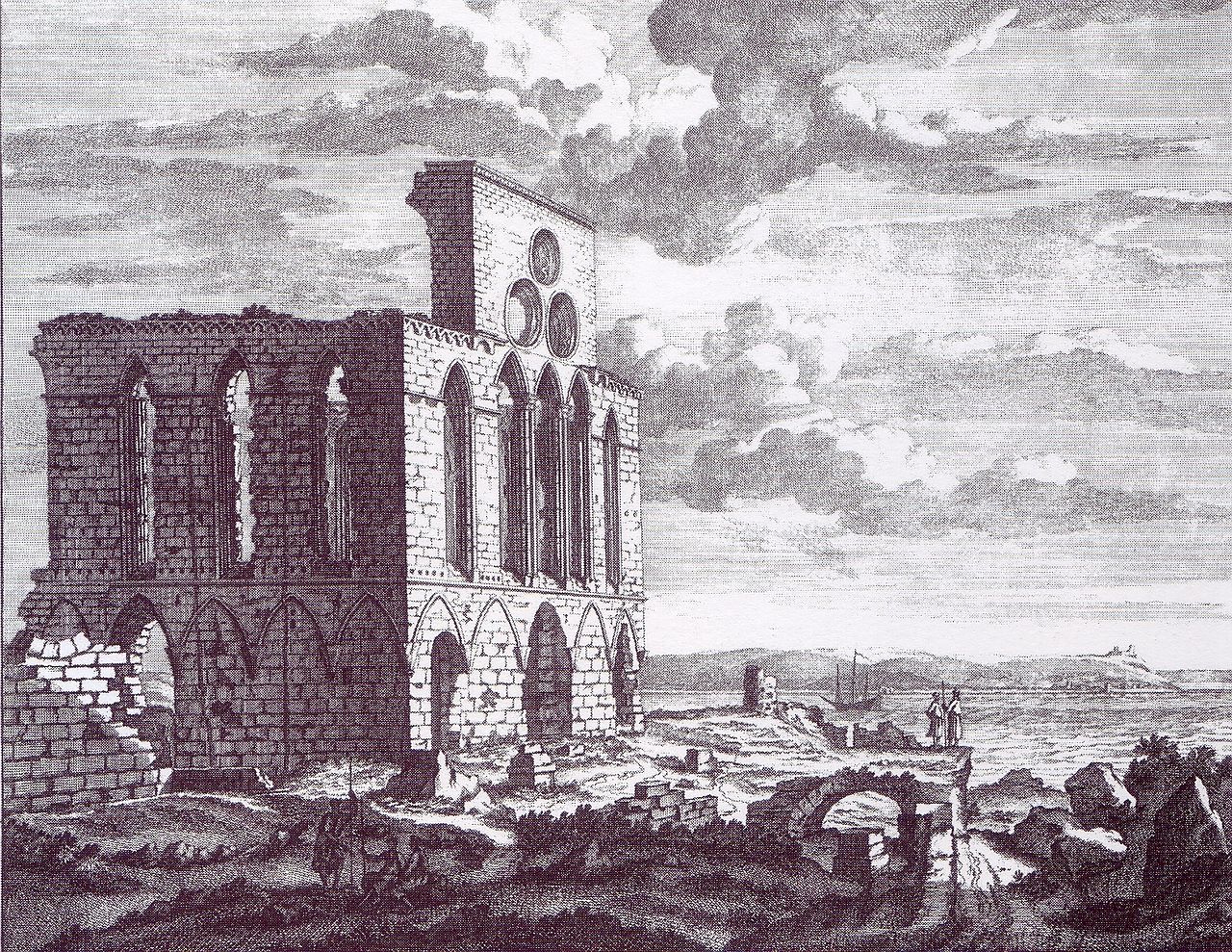
A 1682 engraving of St Andrew's Church in ‘Akká, in the vicinity of both the houses of Malik and the house of Khavvám. Source: Wikimedia Commons.
Four months after the martyrdom of Mírzá Mihdí, the barracks had been requisitioned to house an influx of Ottoman soldiers and Baha'u'llah and His family were moved to the house of Malik, in the Fákhúrah quarter. Fákhúrah was the former German Templer quarter, near the churches of St. George and St. Andrew in the Christian south-western part of 'Akká.
It was a small step toward freedom. The exiles’ strict confinement had been relaxed but guards still watched over them for the first year, during which the Holy Family would be moved from house to house, wherever there was space available.
Shoghi Effendi, God Passes By.
H.M. Balyuzi, Bahá'u'lláh: The King of Glory, page 315.
David S. Ruhe, Door of Hope: The Bahá’í Faith in the Holy Land, pages 34 and 222.
RESEARCH FOR ESTIMATED DATES OF BAHÁ'U'LLÁH’S RESIDENCE IN THE FIVE HOUSES IN ‘AKKÁ
- 4 November 1870 – Est. early February 1871: House of Malik: Bahá'u'lláh and the exiles leave the Most Great Prison: David S. Ruhe, Door of Hope: The Bahá’í Faith in the Holy Land, page 213.
- Early February 1871 – May 1871: House of Manṣúr Khavvám: Bahá'u'lláh resides in this house for three months: H.M. Balyuzi, Bahá'u'lláh: The King of Glory, page 315.
- May – September 1871: House of Rábi’ih: Bahá'u'lláh resides in this house for the four months prior to moving to the house of ‘Údí Khammár: H.M. Balyuzi, Bahá'u'lláh: The King of Glory, page 315.
- September 1871 – Late 1873 : House of ‘Údí Khammár: Bahá'u'lláh moves into the house of ‘Údí Khammár: David S. Ruhe, Door of Hope: The Bahá’í Faith in the Holy Land, page 205. Late 1873: David S. Ruhe, Door of Hope: The Bahá’í Faith in the Holy Land, page 213.
- Late 1873 – Est. 3/10 June 1877: House of ‘Abbúd: 3/10 June from David S. Ruhe, Door of Hope: The Bahá’í Faith in the Holy Land, page 225, Note N° 4.
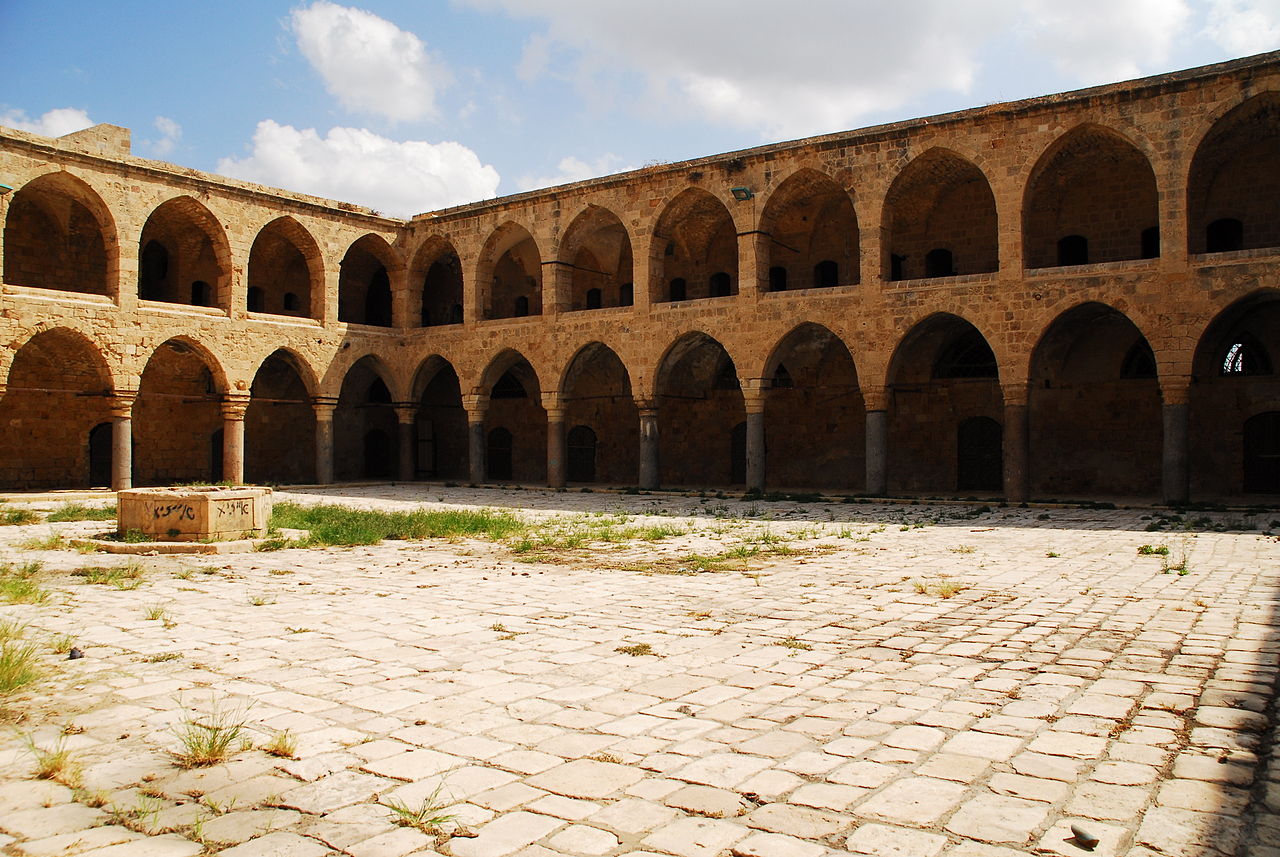
A modern photograph of the Khán-i-Avámíd (Inn of the Pillars), purposefully not showing the distinctive clocktower that did not exist at the time when the Bahá'ís resided in the Khán. Source: Wikimedia Commons.
In November 1870, the majority of the Bahá'í exiles in the Most Great Prison were relocated to a caravanserai called the Khán-i-'Avámíd, built at the harbor edge, north of the sea-gate in the south-eastern quarter of ‘Akká. Jazzár Páshá had built the Khán-i-'Avámíd in 1875, and the caravanserai was also known as the “Inn of the Pillars,” for the impressive colonnade of granite pillars, taken from the Roman ruins at Caesarea, surrounding its courtyard.
The Bahá'ís occupied the eastern and southern wings of the upper floor of the caravanserai, but the damp and filthy rooms were unfit for living. When they first arrived, food was so hard to come by that a loaf normally meant for a single person’s meal had to be cut in four to last a whole day. All other food was carefully allocated and beans were counted when they were served, to make sure everyone would get food.
Mírzá Músá and his family lived in the Khán-i-'Avámíd for a time, in a small house set inside the courtyard before moving to the house of Malik after it was vacated by Bahá'u'lláh. 'Abdu'l-Bahá lived in the caravanserai and helped the exiles settle in, refurbishing the most degraded rooms with proceeds from the sale of a valuable gift He had received in Baghdád.
'Abdu'l-Bahá welcomed, housed, and prepared arriving pilgrims, both spiritually, and practically, to enter the presence of Bahá'u'lláh, finding them befitting clothes if theirs were torn or stained. His own room was a nightmare, grass growing on the walls, and so infested with fleas, He had developed a system of flipping His sheepskin blanket inside out 8 to 10 times a night to avoid getting stung. For a time, His room was also where He entertained visitors.
Several years later, when conditions in the Khán-i-'Avámíd had improved, 'Abdu'l-Bahá instituted Bahá'í children’s classes every morning and afternoon, which His children also attended. When Bahá'u'lláh was living in Bahjí, He would sometimes visit the Khán-i-‘Avámíd on His visits to ‘Akká.
As the Bahá'ís moved out of the caravanserai into ‘Akká, the Khán-i-'Avámíd became the first Bahá'í pilgrim house, and would welcome some of Bahá'u'lláh’s most outstanding disciples such as Apstles of Bahá'u'lláh Zaynu’l-Muqarrabín and Mishkín-Qalam and Ḥájí Mírzá Ḥaydar-‘Alí, the celebrated teacher of the Faith and spiritual giant immortalized by the title “The Angel of Carmel.”
H.M. Balyuzi, Bahá'u'lláh: The King of Glory, page 315.
Shoghi Effendi, God Passes By.
Adib Taherzadeh, The Revelation of Bahá'u'lláh Volume 3: ‘Akká, the Early Years 1868-1877, pages 222-223.
David S. Ruhe, Door of Hope: The Bahá’í Faith in the Holy Land, pages 72-73.
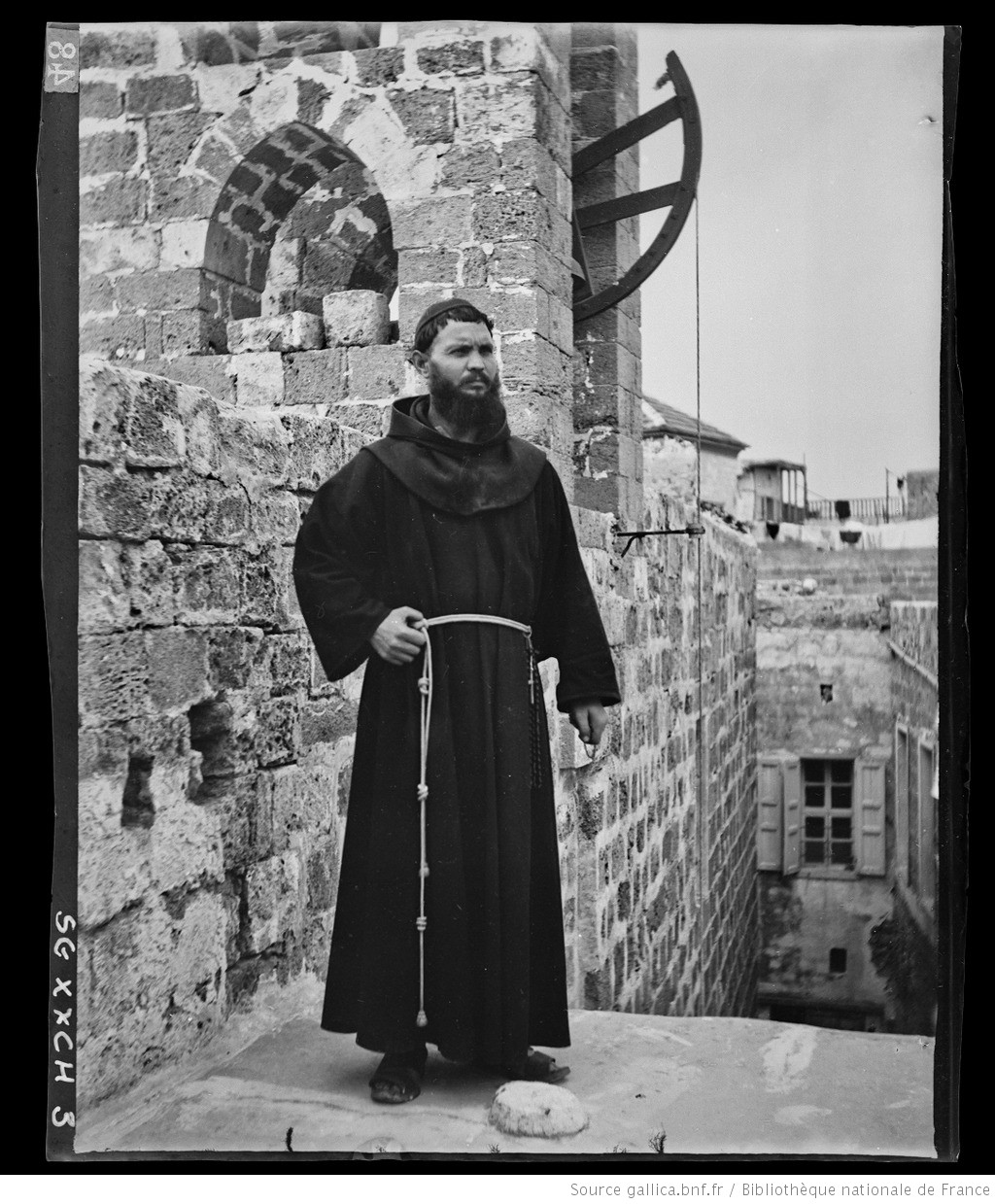
In an homage to the Christian neighborhood of ‘Akká in which the Holy Family lived almost the entire duration of their residence in the city (except for a few months in the Muslim quarter in the house of Rabi’ih), a 19th century photograph of a Franciscan father in ‘Akká. Source: Wikimedia Commons.
In February 1871, after three months in the house of Malik, the Ottoman authorities relocated Bahá’u’lláh and the Holy Family across the narrow lane to the house of Khavvám, still in the Christian neighborhood, where they would live for about three months.
H.M. Balyuzi, Bahá’u’lláh: The King of Glory, page 315.
David S. Ruhe, Door of Hope: The Bahá’í Faith in the Holy Land, page 205.
Shoghi Effendi, God Passes By.

The English Mission Hospital in Jerusalem in 1897. This is the same British Hospital for Jews in Jerusalem which Dr. Thomas Chaplin headed for 25 years. Source: JSTOR: A Dangerous Legacy: Welfare in British Palestine, 1930-1939. Source: Jordanian Tamar on Wikimedia Commons.

Article obtained from Newspapers.com.
For 25 years, Dr. Thomas Chaplin was the director of the British Hospital for the Jews in Jerusalem while simultaneously advancing scientific research in a variety of fields. He was so well-regarded that the Jewish people of Jerusalem called him “The Great English Doctor.” In April 1871, Dr. Chaplin decided to visit Bahá'u'lláh in ‘Akká, but met for two hours with 'Abdu'l-Bahá instead.
The result of Dr. Chaplin’s meeting with 'Abdu'l-Bahá was, according to Dr. Moojan Momen, the first extended commentary on Bahá'u'lláh and the Bahá'í doctrine in western newspapers, though Dr. Chaplin calls the Bahá'í Faith "the Babs.” The article, published on page 8 of the Times of London, on 5 October 1871, was titled The Babs of Persia. This article is also valuable for what is perhaps the very first western pen-portrait of 'Abdu'l-Bahá at the age of 27, two years before His marriage, seen through the eyes of a 19th century Londoner.
A long section follows describing Dr. Thomas Chaplin’s interview with 'Abdu'l-Bahá, which is covered in the illustrated chronology of the life of ‘Abdu'l-Bahá, also found on the website of The Utterance Project: The Extraordinary Life of 'Abdu'l-Bahá Part II, section1.
Dr. Chaplin states several significant misconceptions about the Faith, but describes the 20,000 martyred Bábís in Persia, and all of Bahá'u'lláh’s exiles, and His current house arrest in 'Akká. Dr. Chaplin’s conclusion is that “This remarkable movement and its history are suggestive of many reflections. In its religious, social, and political aspects it is full of interest, and it seems surprising that public attention has not been earlier drawn to it … From all that I could learn, these people lead pure and harmless lives, and hold no political opinion which could render them dangerous."
Bahaipedia: Travelers and Scholars on the Bábí/Bahá’ís Faiths.
Efraim Lev and Yaron Perry, Dr Thomas Chaplin, Scientist and Scholar in Nineteenth-Century Palestine, published in Palestine Exploration Quarterly (2004), pages 151-162.
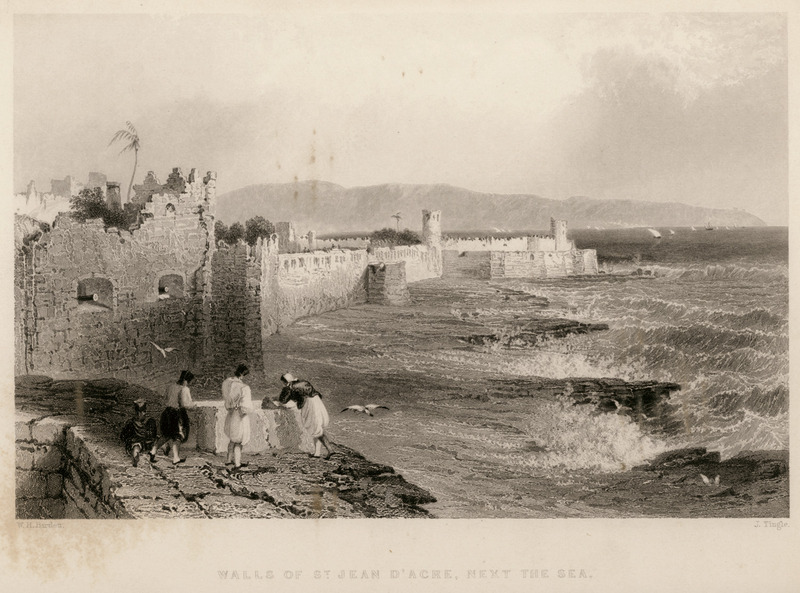
David S. Ruhe in Door of Hope says that the house of Rábi'ih was adjacent to the Shrine of Shaykh Ghánim, which is is a location immediately behind the sea walls of ‘Akká. The illustration for the location of this house, which is unknown, is a 1836 engraving of the sea walls of ‘Akká, behind which lies the Muslim neighborhood in which the house of Rábi’ih is located, from the book Syria, The Holy Land, Asia Minor, &c. Illustrated by John Carne. Source: Wikimedia Commons.
After six months in the Christian neighborhood of 'Akká, the Ottoman authorities moved Bahá'u'lláh and His family to the Muslim quarter, which had once been the quarter of the merchants of Pisa during the Crusades in the 11th to the 13th centuries. The Holy Family moved in with Rábi’ih, a charcoal-maker, and his family for the next four months. The house of Rábi’ih was adjacent to the tiny Shrine of Shaykh Ghánim ben Ali ben Hussein al-Ansari al-Khazrajy, one of Saladin’s army commanders.
Shoghi Effendi, God Passes By.
H.M. Balyuzi, Bahá'u'lláh: The King of Glory, page 315.
David S. Ruhe, Door of Hope: The Bahá’í Faith in the Holy Land, page 35.
Wikipedia: Crusades.
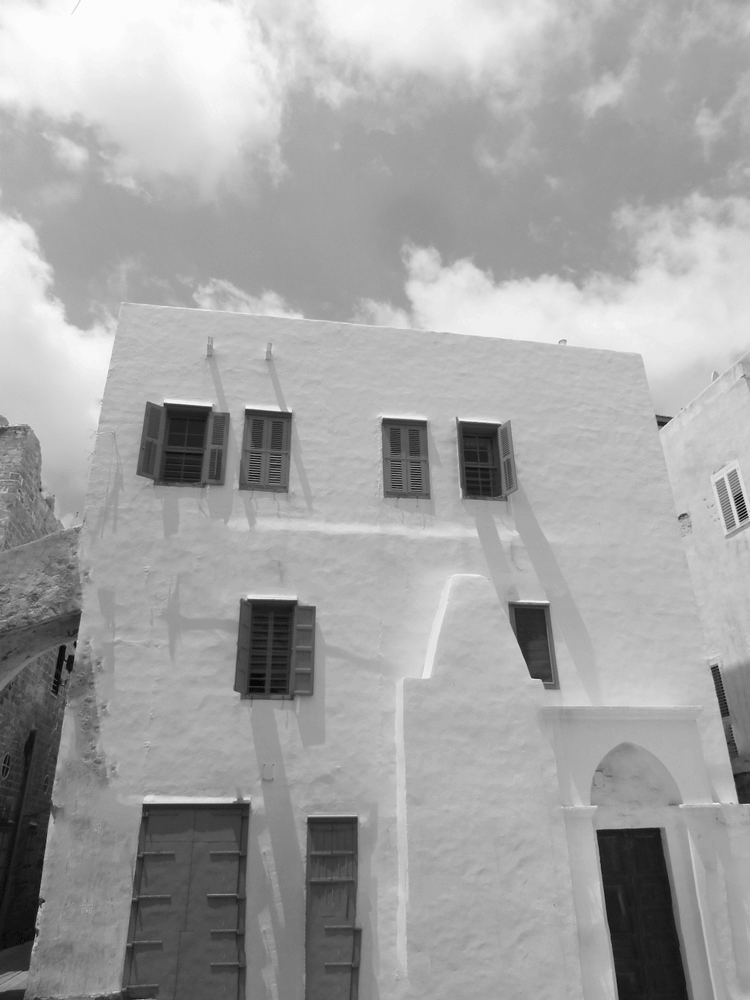
This image of the façade of the house of ‘Údí Khammár is a modern photograph from Wikimedia Commons, but was heavily photoshopped to remove the parked cars, street signs and numerous electrical lamps and cables, in an attempt to artificially recreate the 19th century house Bahá'u'lláh moved in. Original unedited image: Wikimedia Commons.
After four months in the house of Rábi’ih, the Bahá'ís found a much more promising accommodation in the house vacated by ‘Údí Khammár, a wealthy Maronite Christian named Údí Khammár. He was an important figure in ‘Akká, and he and his family were patrons of the Greek Orthodox Church of St. George, located close to Bahá'u'lláh’s first two houses in the city.
‘Údí Khammár was a wealthy merchant who had gone into business with his nephew Ilyas ‘Abbúd, who lived in the eastern Mediterranean-facing part of his large house, separated by a wall. In September 1871, ‘Údí Khammár moved into his recently-completed mansion named Bahjí (Delight), 2 kilometers (1.5 miles) north of ‘Akká in the countryside and rented his small ‘Akká townhouse on ‘Abbud (now Genoa) Square, in what used to be the Genoese quarter of ‘Akká.
Ilyás 'Abbúd was not happy to share the wall of his home with the Persian exiles and tried to prevent the transaction. He failed, but took steps to avoid all contact with the Bahá'í exiles, whom he considered undesirable neighbors.
Bahá'u'lláh took a room overlooking an open space at the back of the house. Though it was an improvement on the previous three houses, it was still woefully inadequate for Bahá'u'lláh’s large family. The accommodations were so cramped that 13 people, men and women, were forced to sleep in one room, and one night, a person rolled off the shelf where they were sleeping and fell on top of the others.
Shoghi Effendi, God Passes By.
H.M. Balyuzi, Bahá'u'lláh: The King of Glory, pages 315-317.
Adib Taherzadeh, The Revelation of Bahá'u'lláh Volume 3: ‘Akká, the Early Years 1868-1877, pages 221-222.
David S. Ruhe, Door of Hope: The Bahá’í Faith in the Holy Land, pages 35.
Bahaipedia: ‘Údí Khammár.
Wikipedia: Maronites.
DATE
David S. Ruhe, Door of Hope: The Bahá’í Faith in the Holy Land, page 205 states that Bahá'u'lláh and His family moved into the house of ‘Údí Khammár in September 1871.
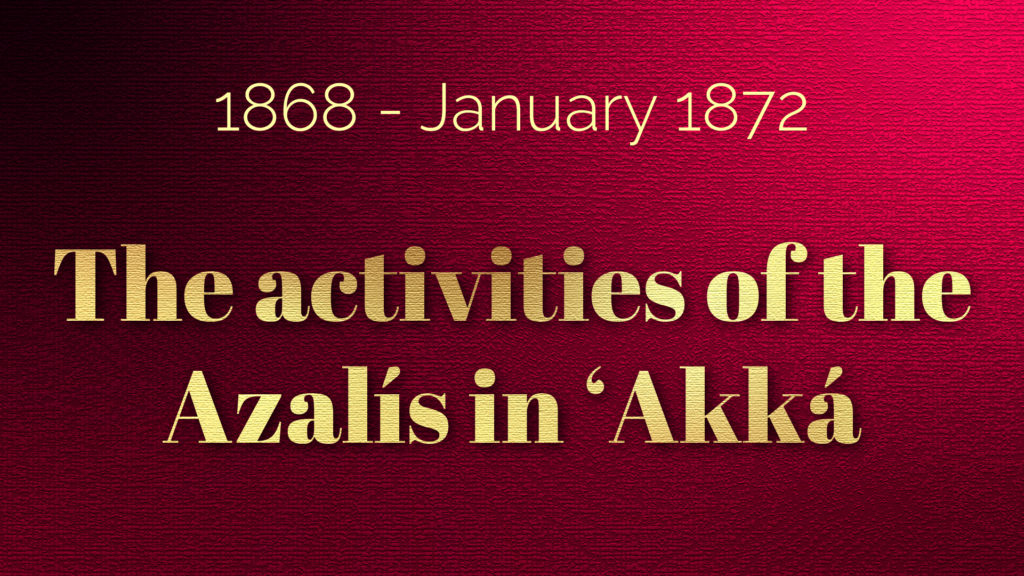
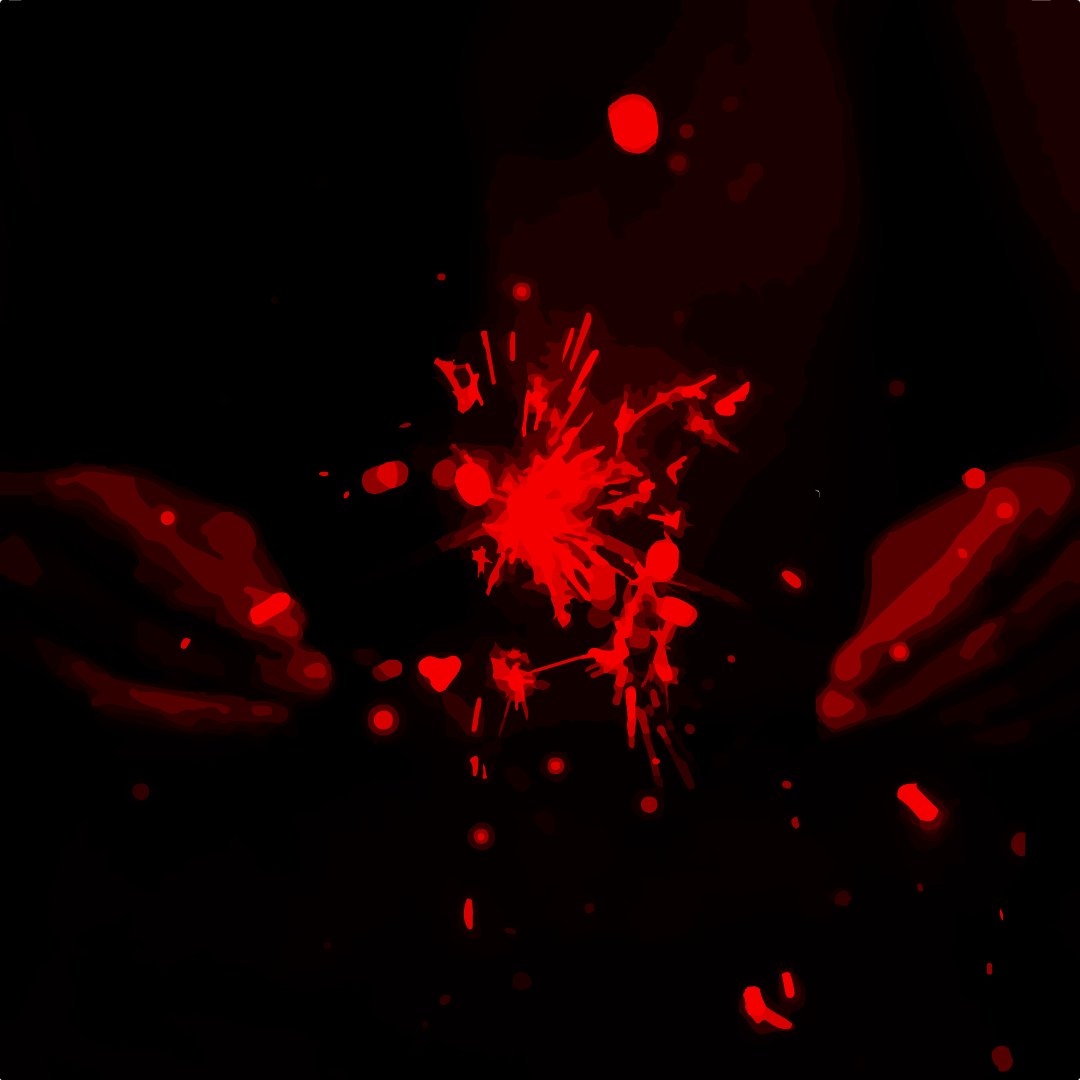
This digital painting over an image showing a man creating sparks out of thin air, is a symbolic illustration of the unrelenting mischief caused by the Azalís in ‘Akká, the spark that became a conflagration. © Violetta Zein.
When the Bahá'í exiles had first arrived in the Most Great Prison, the two Azalís, partisans of Mírzá Yaḥyá, Siyyid Muḥammad-i-Iṣfahání, the Antichrist of the Bahá'í Revelation, and his minion, Kaj-Kuláh, had requested a room above one of the city gates from where they could spy, reporting Bahá'ís trying to enter 'Akká to the Ottoman authorities. Siyyid Muḥammad adopted the name of “Quddús Effendi” (Holy One) and Kaj-Kuláh went by the name Mírzá Yaḥyá had given him, “Sayfu'l-Ḥaqq” (The Sword of Truth). They enrolled a local man to their cause who engineered the expulsion of Áqá ‘Abdu’r-Rasúl-i-Zanjání and his companions.
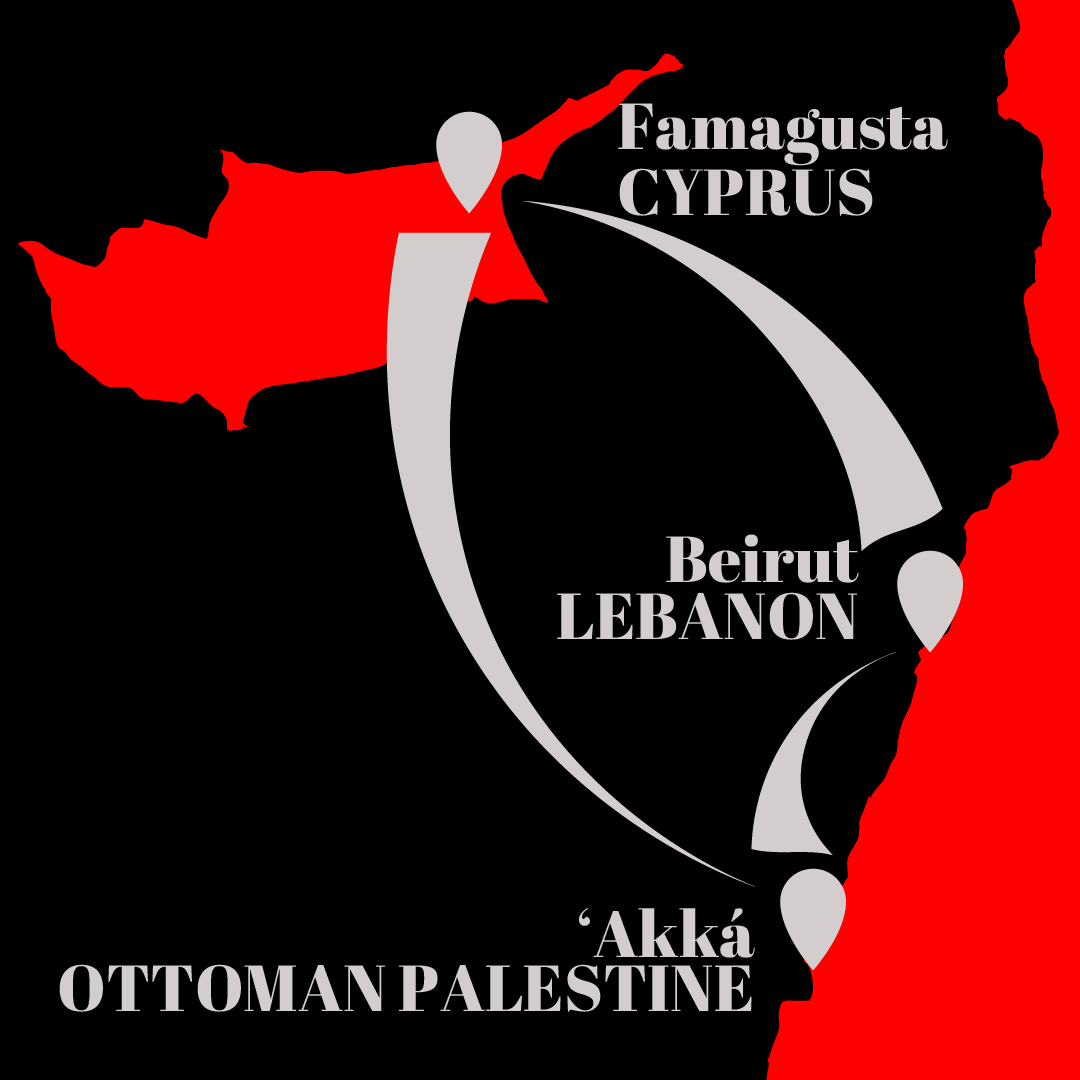
A stylized map of the journey of Na’im Effendi from, and eventually back to, Famagusta, Cyprus described in this section. © Violetta Zein.
After the expulsion of Áqá ‘Abdu’r-Rasúl, a recently-declared Bahá'í named Na'ím Effendi arrived, who had been taught the Faith by Mishkín-Qalám in Cyprus, where he was from. Na’ím Effendi arrived in ‘Akká, entered the presence of Bahá'u'lláh, and 'Abdu'l-Bahá entrusted him with several letters to take back to Cyprus. The Azalís and the Persian consular agent found out, detained Na’ím Effendi and confiscated the letters as he was leaving for Haifa. The Persian consular agent had been blinded by the Azalís and 'Abdu'l-Bahá could not dissuade him: Na’ím Effendi was sent to Beirut where he was imprisoned for six months. After he was released, Na’ím Effendi returned to Cyprus, where he prospered greatly.
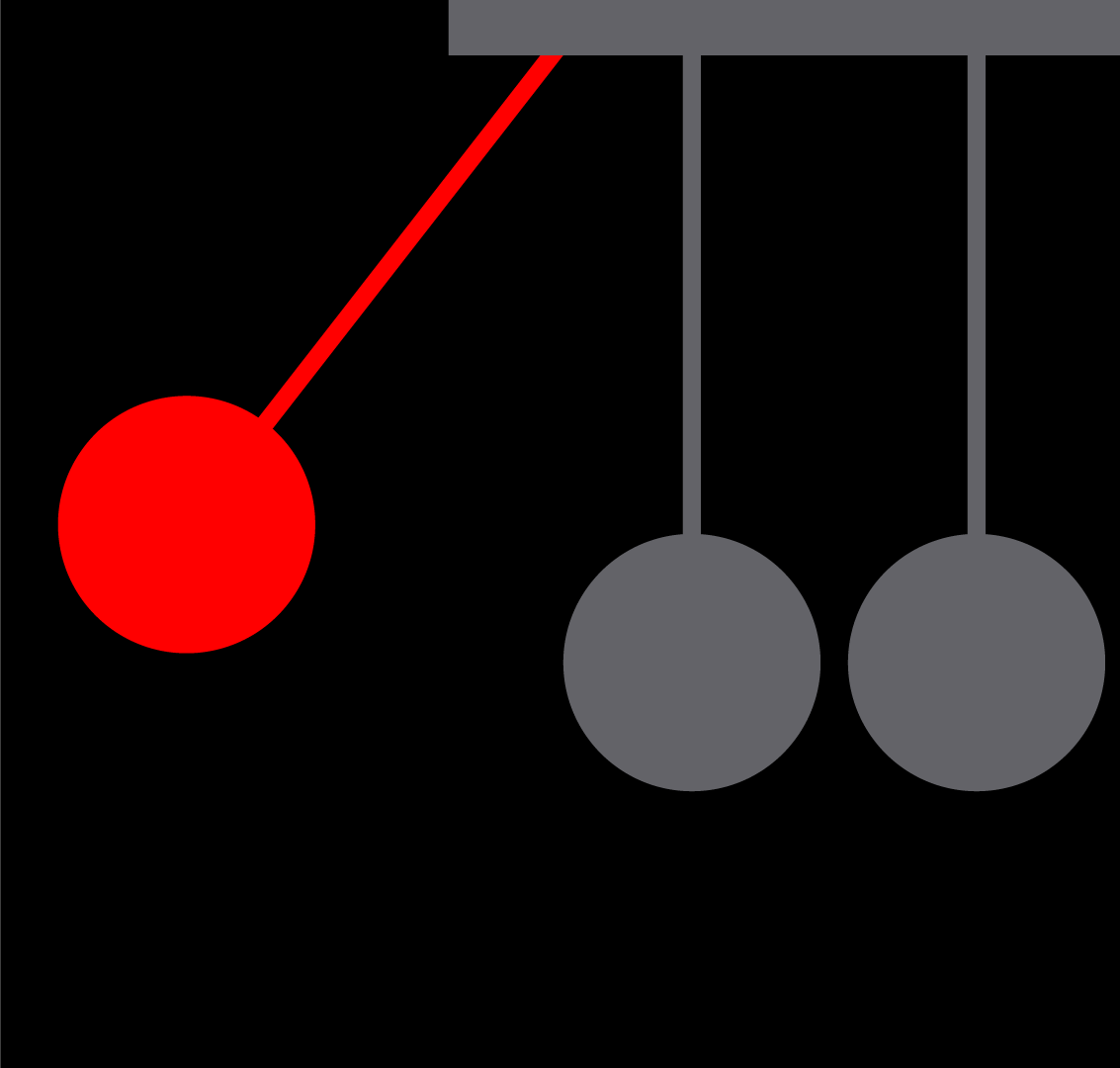
An abstract symbolization of the effect Mírzá Riḍá-Qulíy-Tafrishí had as the new Azalí recruit, on the increased momentum of Siyyid Muḥammad-i-Iṣfahání andÁqá Ján Kaj-Kuláh’s activities. © Violetta Zein.
Mírzá Riḍá-Qulíy-Tafrishí was the brother of Badrí-Ján, Mírzá Yaḥyá’s estranged wife. While in 'Akká, he lived a life contrary to Bahá'í teachings and committed shameful deeds in the company of some Christians, bringing public disgrace on the name of the Faith. Bahá'u'lláh expelled him from the Bahá'í community and he joined the ranks of Siyyid Muḥammad and Kaj-Kuláh, swelling their ranks of the Azalís to three bitter and jealous individuals intent on destroying Bahá'u'lláh’s name by any means.
Emboldened by their new recruit and the increased freedom of living in 'Akká, the three Azalís were infused with a new sordid energy and redoubled their efforts. They embarked on a calculated campaign of abuse, calumny and intrigue, aiming to agitate the already suspicious inhabitants of ‘Akká to higher levels of hostility.
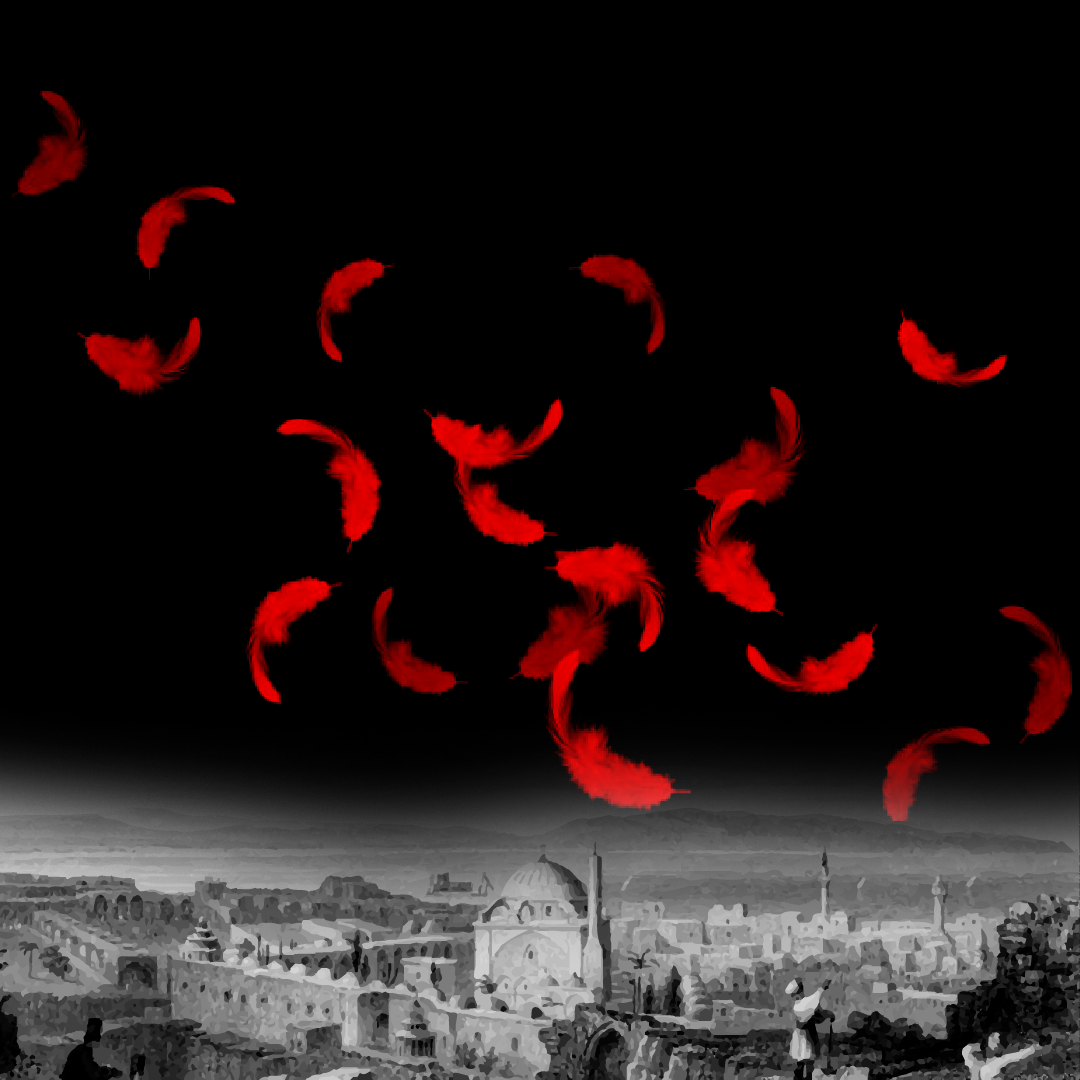
Art piece: The feathers of backbiting floating over 'Akká. One of the main activities that occupied the Azalís’ time was spreading rumors and misrepresentation, essentially backbiting, speaking poisonous words that sink deep into the fabric of society, with a ripple effect that can last years. Backbiting travels and can never be undone, like shaking a feather pillow above a city on a windy day and expecting to pick up every last feather. Source for the metaphor: Catholic Education Resource Center: The Feathers of gossip: How our words can build up or tear down. Source for the panoramic image of ‘Akká: An 1836 engraving of ‘Akká from the book Syria, The Holy Land, Asia Minor, &c. Illustrated by John Carne from Wikimedia Commons. © Violetta Zein.
The Azalís initially succeeded in poisoning the minds of the Ottoman authorities and ‘Akká notables and officials, but their increased contact with Bahá'u'lláh, won them over to Him, which infuriated the Azalís, who became nearly unstoppable in their jealousy-fueled efforts to discredit Bahá'u'lláh and destroy the reputation of the Faith.
SOURCES FOR THE SECTION
Shoghi Effendi, God Passes By.
H.M. Balyuzi, Bahá'u'lláh: The King of Glory, pages 317-321.
Adib Taherzadeh, The Revelation of Bahá'u'lláh Volume 3: ‘Akká, the Early Years 1868-1877, pages 224-226.
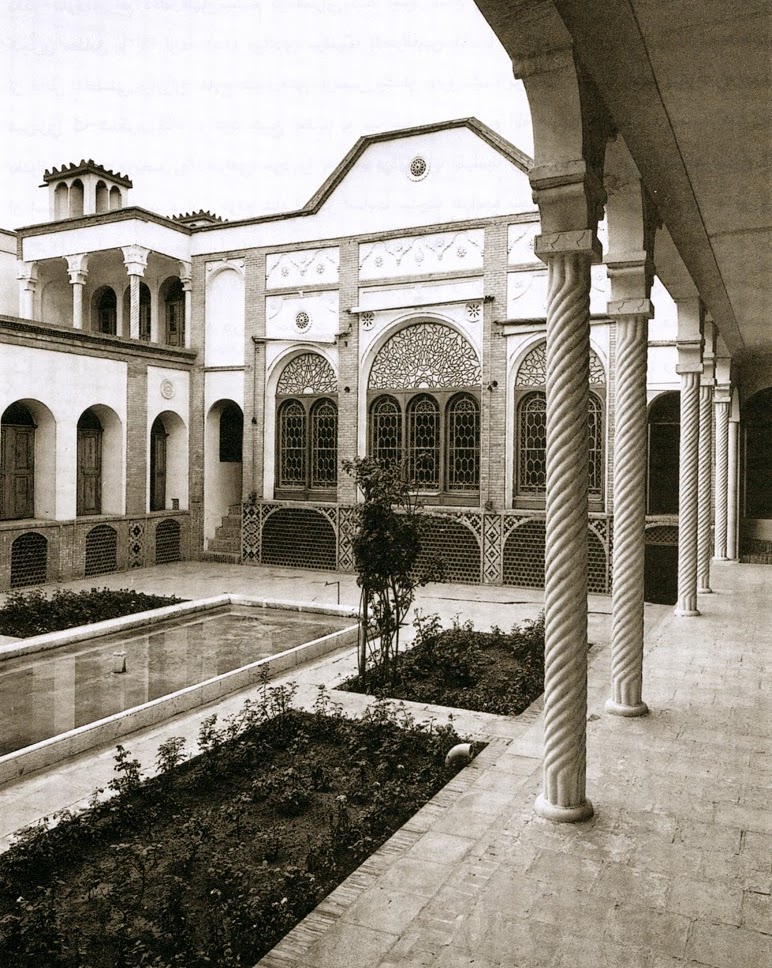
A photograph of the house of Mírzá Buzurg where Khadíjih Khánum gave birth to Bahá'u'lláh and raised her exceptional, divine Son. The family spent many happy years here until 1835 when they were ruined by the Grand Vizir of the Sháh (See Part I). Source: Bahá'u'lláh: The Glory of God.
Bahá'u'lláh's mother passed away in Ṭihrán, sometime after 1872, based on indications found in a Tablet revealed by Bahá'u'lláh. Khadíjih Khánum had borne, raised, loved, and given to the world the Manifestation of God whose advent all past religions, including the Bab's, had promised. In the Tablet of Visitation He revealed for His mother, Bahá'u'lláh calls her “The most honoured, esteemed and respected mother,” and testifies that “This My mother who hath acknowledged Thy oneness, confessed Thy unity, attained the honour of meeting Thy Manifestations in Thy days, reached the station of recognition and entered the tabernacle of Heaven, for she loved Thyself and Thy Servant and held fast to the cord of Thy love through the sanctified Temples of Thy Sovereignty.” Bahá'u'lláh beseeches God to rain down upon His mother spiritual bounties of nearness, mercy, forgiveness, union and everlasting life, before signing the Tablet “’Abdu’lláh Ḥusayn ‘Alí,” a signature not found in any other Tablet, perhaps because the Tablet would be read by relatives unfriendly towards Bahá'u'lláh and the Faith.
Baharieh Rouhani Ma'ani, Leaves of the Twin Divine Trees, pages 80-82.
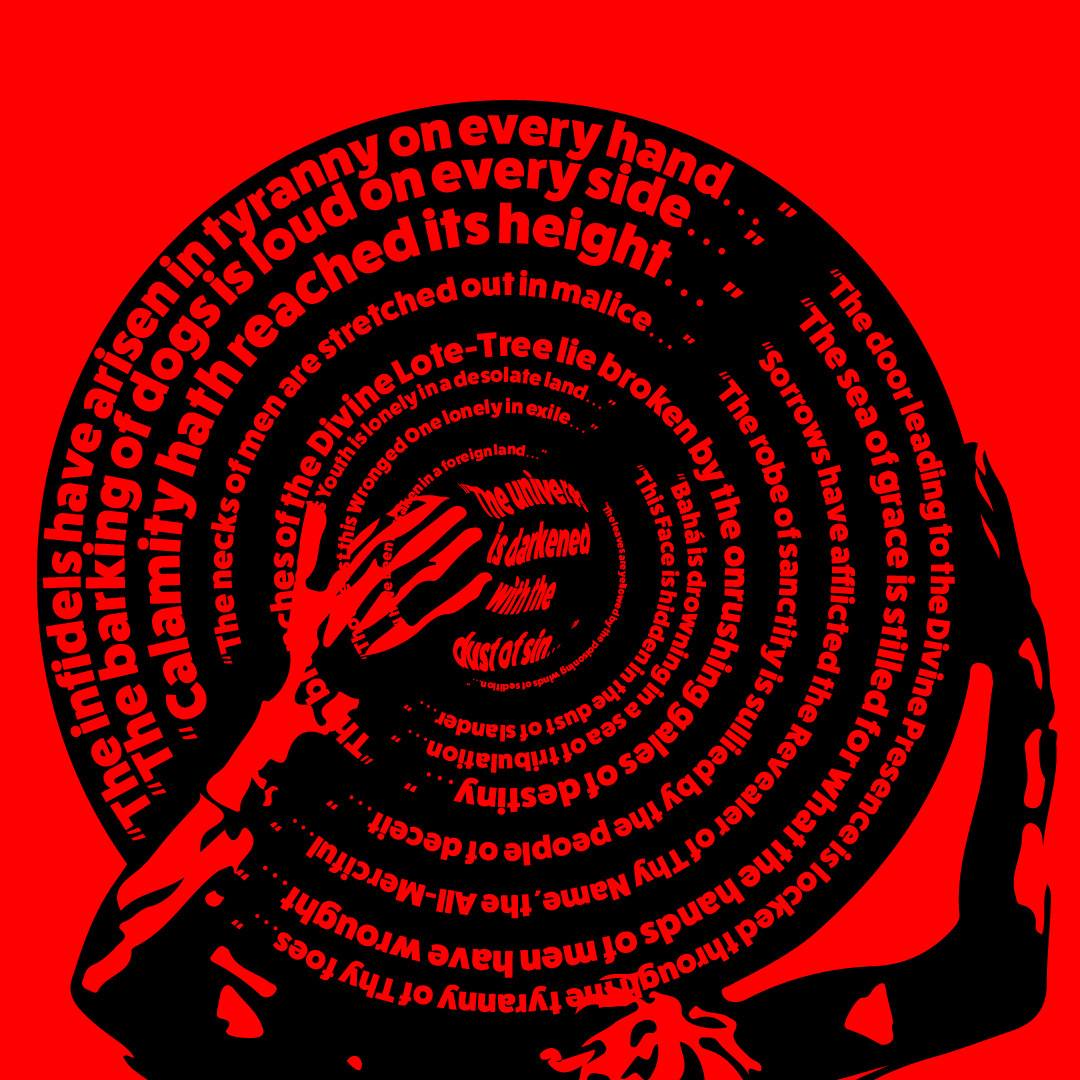
In Pop-Art poster style, an abstract representation of the sufferings which burdened Bahá'u'lláh’s shoulders at the time of the Revelation of the Kitáb-i-Aqdas, illustrating the quoted lines in the section below. The headless figure (out of concern that anyone imagine the artist has tried to represent Bahá'u'lláh) is that of Atlas, the Greek God who carried the literal weight of the world on his shoulders. © Violetta Zein.
Towards the end of 1871 Bahá'u'lláh received a letter from one of His devoted followers in Persia, Ḥájí Siyyid 'Alí-Akbar-i-Dahají and revealed Lawh-i-Qad Iḥtaraqa'l-Mukhliṣún (The Fire Tablet) in response. It is one of Bahá'u'lláh’s most celebrated Tablets, endowed with great spiritual power and deriving its name from its most well-known verse: “Should all the servants read and ponder this, there shall be kindled in their veins a fire that shall set aflame the worlds.”
The Fire Tablet describes the activities of the Azalís’ efforts to destroy Bahá'u'lláh’s reputation through slander and misrepresentation, and speaks clearly to Bahá'u'lláh’s seclusion, isolation, and solitude in this time of turmoil, exiled in a far-off land, with no one but His immediate nuclear family around Him.:
“The infidels have arisen in tyranny on every hand…Calamity hath reached its height…The necks of men are stretched out in malice…Abasement hath reached its lowest depth…Sorrows have afflicted the Revealer of Thy Name, the All-Merciful…Thou seest this Wronged One lonely in exile…I have been forsaken in a foreign land…Bahá is drowning in a sea of tribulation…This Face is hidden in the dust of slander…The robe of sanctity is sullied by the people of deceit…The leaves are yellowed by the poisoning winds of sedition…The universe is darkened with the dust of sin…This Youth is lonely in a desolate land…”
When Bahá'u'lláh revealed the Fire Tablet, it raised awareness of the immensity of His sufferings among the believers in ‘Akká, perhaps resonating so profoundly with the believers because of the fact that part of the Tablet dealing with the tyranny of the Azalís’ and Bahá'u'lláh’s suffering is revealed in the voice of man, giving the impression that it is the “human” Bahá'u'lláh who is speaking to God, a mode of Revelation which allows believers to bond deeply with the sufferings of the Manifestation of God.
Partial Inventory ID: BH00687
Bahá'u'lláh, The Fire Tablet.
Adib Taherzadeh, The Revelation of Bahá'u'lláh Volume 3: ‘Akká, the Early Years 1868-1877, pages 226-231.
H.M. Balyuzi, Bahá'u'lláh: The King of Glory, pages 321-322.
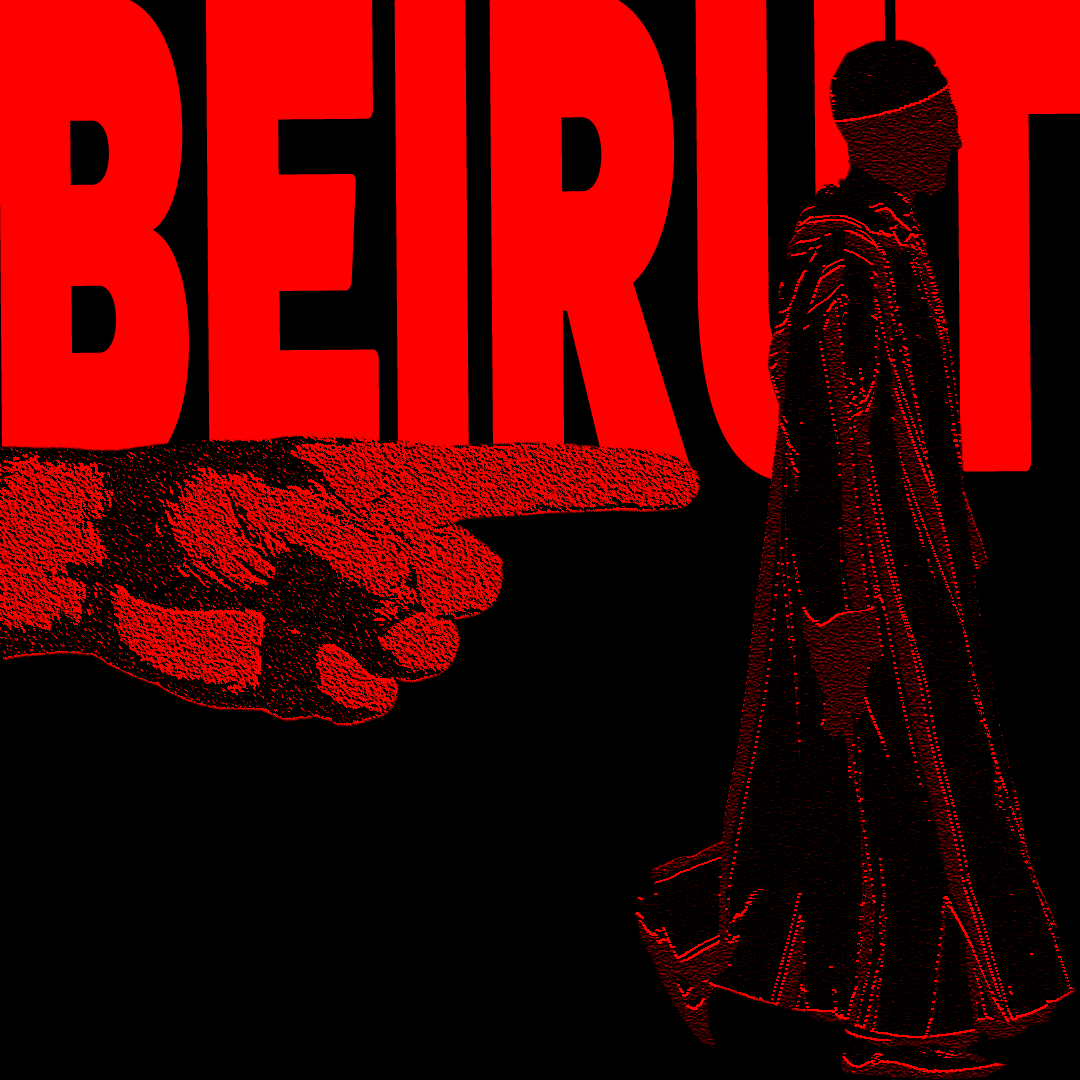
A textured 3D interpretation of Naṣir’s return to Beirut after his visit to ‘Akká. The finger represents Bahá'u'lláh’s command to return, not Bahá'u'lláh’s own finger. © Violetta Zein.
The Azalís had long stepped over the line of decency and the Bahá'ís devoted to Bahá'u'lláh were increasingly unable to tolerate the repeated insults. They began thinking about how to put an end to the Azalí problem, once and for all.
Ḥájí ‘Abbás, also known as Náṣir, was a Bahá'í from Beirut, Lebanon, who arrived in 'Akká determined to silence the Azalís. When Bahá'u'lláh was apprised of his intentions, He immediately sent him back to Beirut before he could add fuel to the flames of an already-tense situation, speaking these words to him in a Tablet: “Go hence and do not perpetrate that wherefrom mischief will result!”
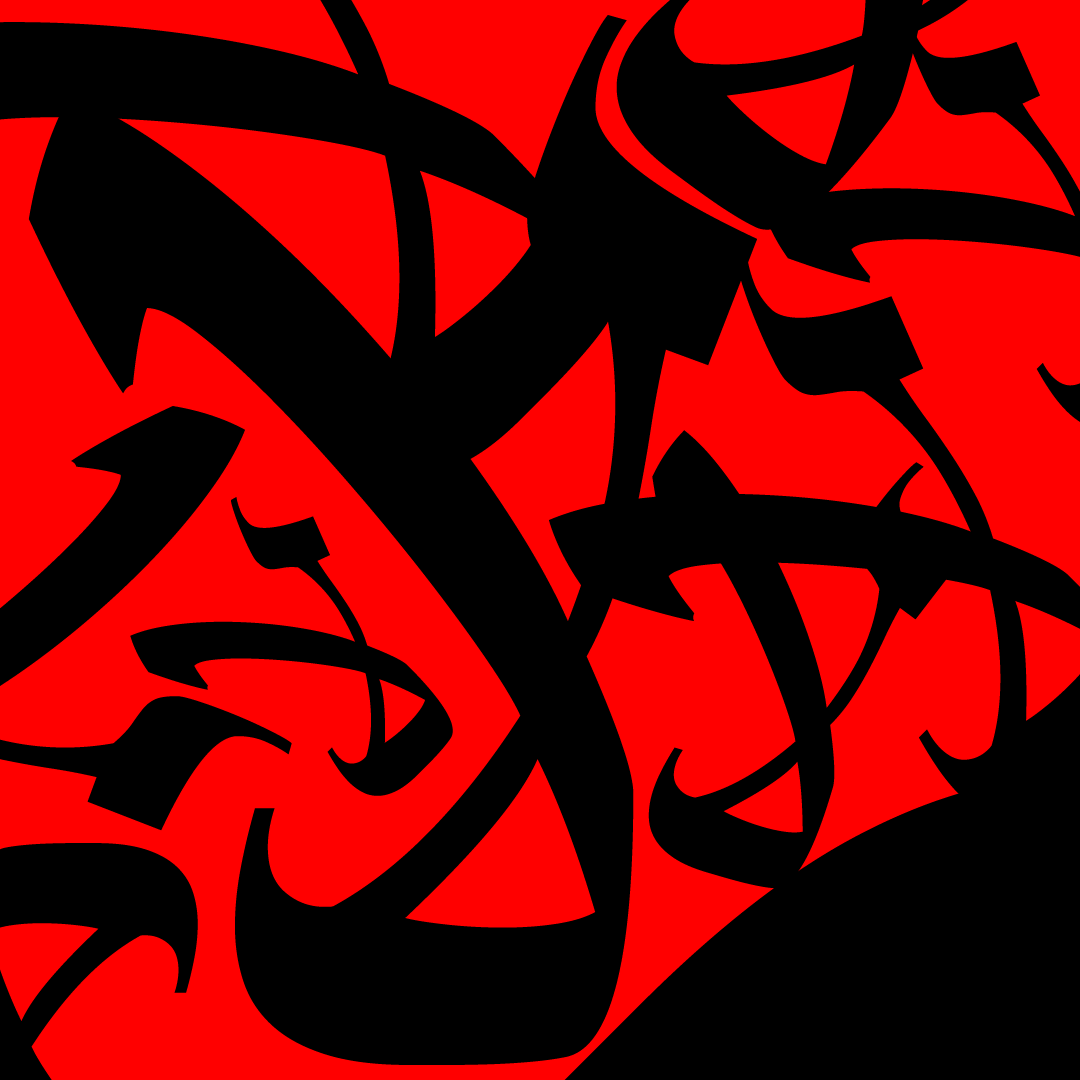
There are several different ways of saying “no” in Arabic, but لا(lá) is the most common, meaning simply “no” without qualifiers. This 3D calligraphic rendering of لا as an abstract representation of Bahá'u'lláh’s emphatic advice to the believers to shun all forms of violence or retribution against the Azalís. Many thanks to Adib Masumian for providing the typescript and caption. This graphic repetition of the word "no" is an attempt to symbolize the many different ways in which Bahá'u'lláh continually dissuaded the believers from taking revenge on the Azalís. © Violetta Zein.
After Náṣir had left, ‘Akká Bahá'ís went to Bahá'u'lláh and begged for permission to deal with the Azalís. One believer, Áqá Muḥammad-Ibráhím-i-Káshání pleaded with Bahá'u'lláh to allow him to assassinate Siyyid Muḥammad and his two associates. Baha'u'llah, emphatically forbade any retribution against the three men, and advised the believers to shun any thought of revenge or violence.
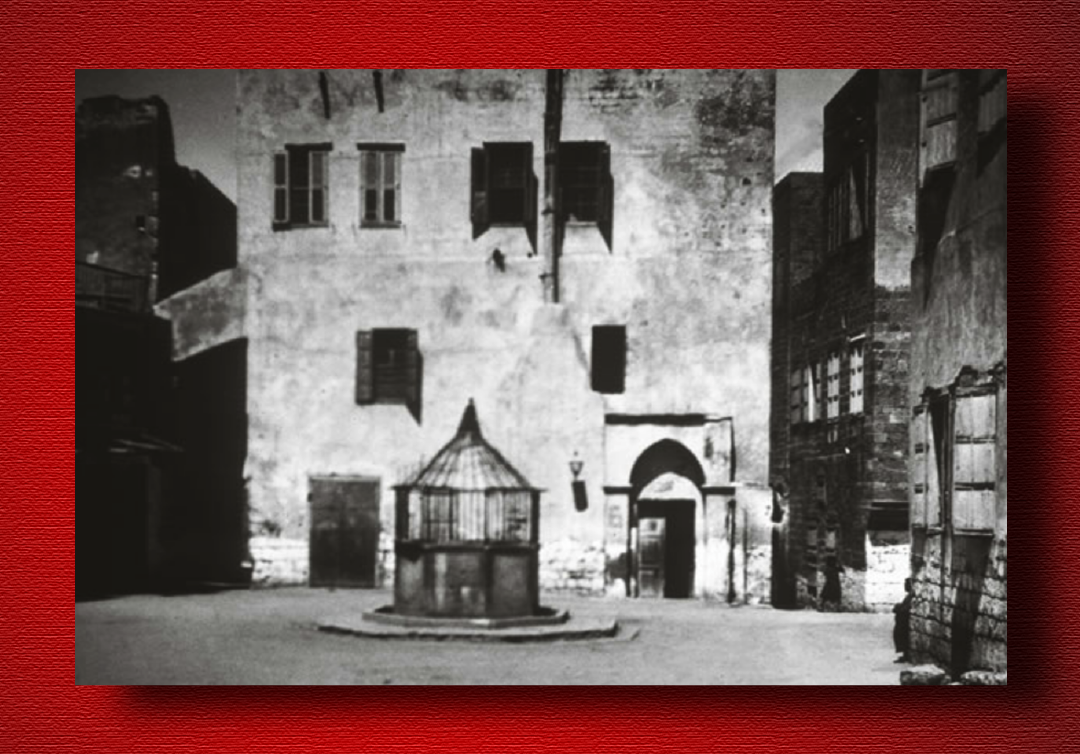
A view of the house of ‘Údí Khammár from Genoa Square, located in the rear of the building now known as the House of ‘Abbúd. The arched doorway on the right opens to the staircase to the second and third floors. Source: The life of Bahá'u'lláh: A photographic Narrative: Bahá'u'lláh leaves the citadel.
The Azalís’ efforts to misrepresent Bahá'u'lláh and the Faith yielded their poisoned fruit: the people of ‘Akká, began to show open hostility and ill-will towards the Bahá'ís, an attitude which caused Bahá'u'lláh to close His doors to both friend and foe. Bahá'u'lláh stopped allowing anyone to enter His presence. The situation became so tense that 'Abdu'l-Bahá left the Khán-i-Avámíd and moved into the house of ‘Údí Khammár, so He could be at hand if Bahá'u'lláh’ needed Him.
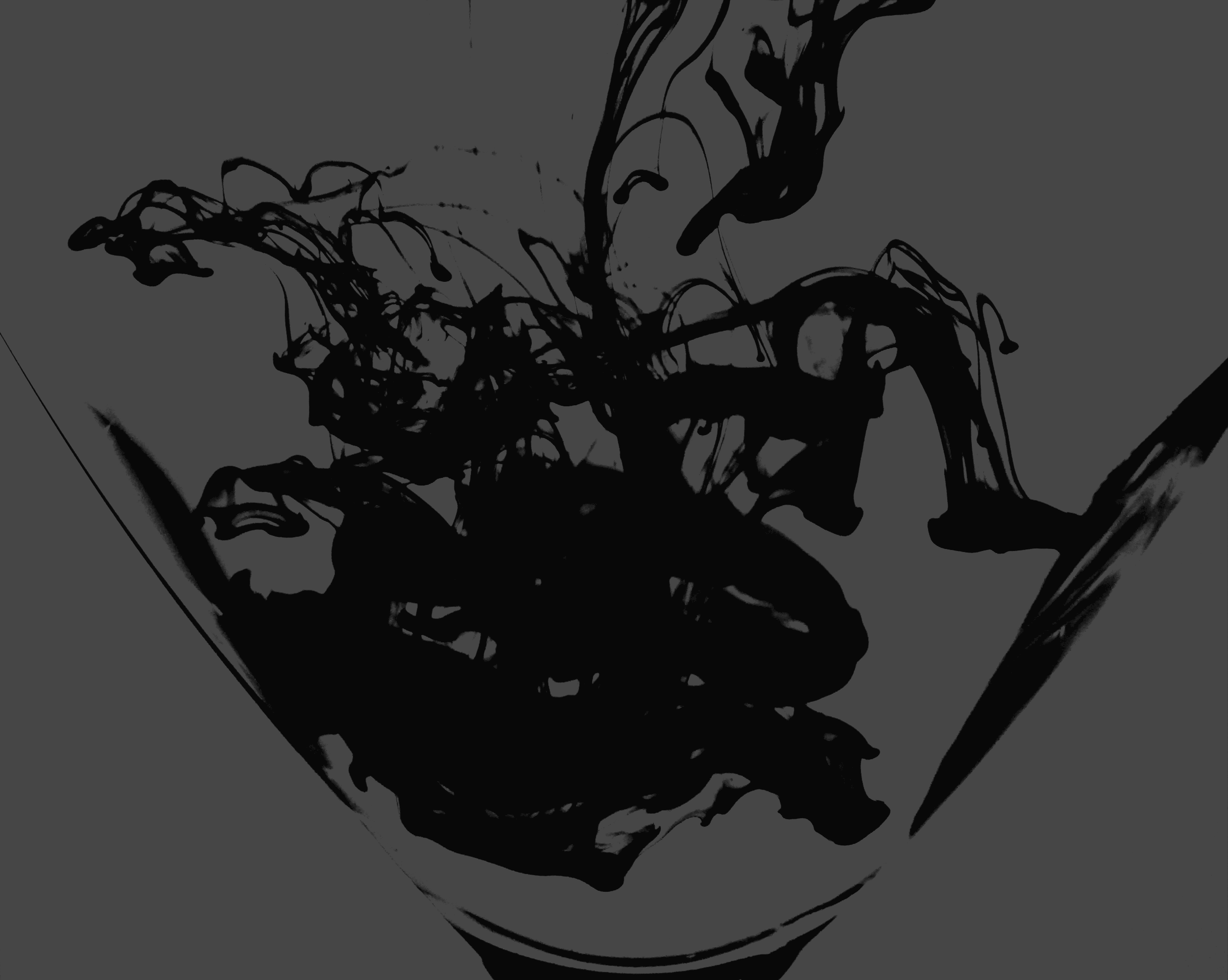
An abstract representation of the creeping in of the Azalís into the Bahá'í community of ‘Akká, symbolized by black ink dropped into a clear glass of water. The Azalís took advantage of Bahá'u'lláh’s seclusion to penetrate the community. © Violetta Zein.
The Azalís immediately exploited Bahá'u'lláh’s seclusion, turning the situation to their wicked advantage. The Bahá'í community was temporarily severed from Bahá'u'lláh’s guiding hand, and the Azalís were able to mix in with the faithful believers as they continued to calumniate Bahá'u'lláh.
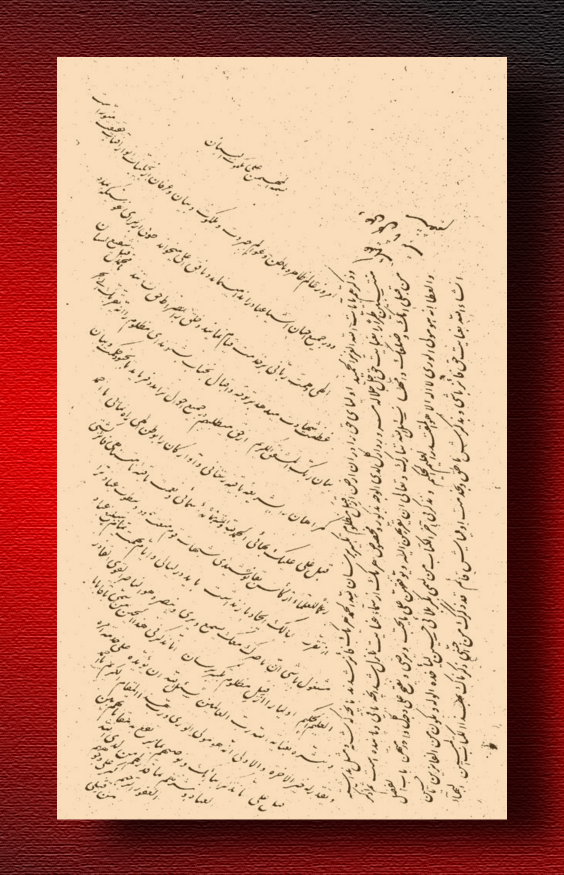
Bahá'u'lláh’s Tablet to Mullá Muḥammad Shafí, as an example of a non-illuminated Tablet. When the Azalís would forge Bahá'u'lláh’s Tablet, they would most likely descend on hand-copied versions of Bahá'u'lláh’s Tablets and modify letters or words to make them state horrifying facts, anathema to Bahá'u'lláh’s Teachings. Their forging of Bahá'u'lláh’s Holy words was one of their most severe violations. Source of the Tablet: Nayriz.org: Tablet 135: Bahá'u'lláh to Mullá Muḥammad Shafí.
Mírzá Riḍá-Qulí had some of Bahá'u'lláh’s Tablets and Siyyid Muḥammad had the experience of forging them, acquired during the Most Great Separation, in Adrianople and Constantinople. Together, they corrupted the text of Bahá'u'lláh’s Writings, making additions that rendered them heretical against Islám, anti-social, and provocative. Siyyid Muḥammad made Bahá'u'lláh sound like a fanatical Shí’ah, the sworn enemy of the Sunnís of ‘Akká, and they distributed their forgeries widely to stir up the Muslims of ‘Akká.
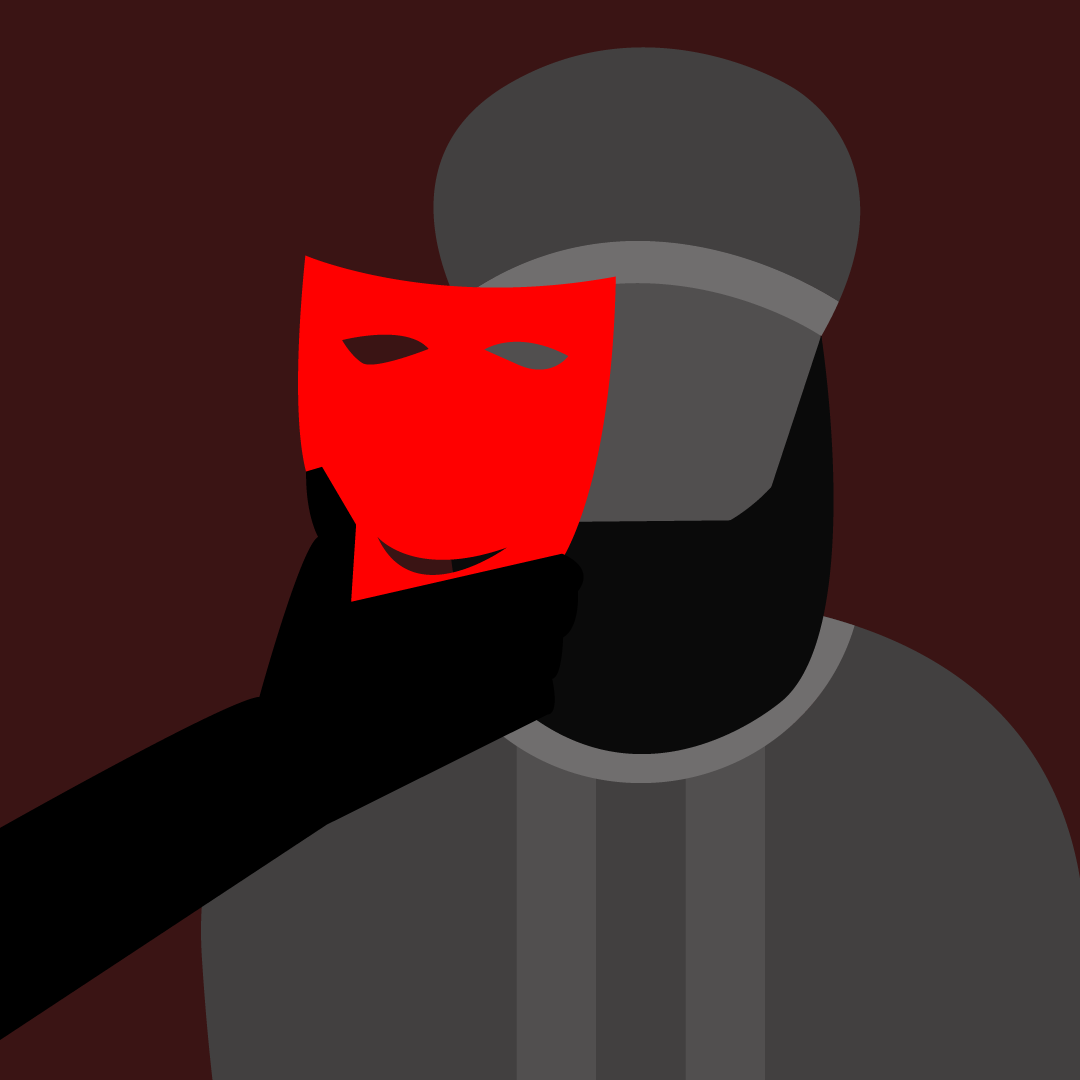
Flat illustration of a turbaned man wearing two faces. Being two-faced, duplicitous, using lies and misrepresentations, being hypocritical and disingenuous, treacherous and false, were but tools that the Azalís continually used, like claiming to be Sunní, as in the story below, if it suited the purpose they needed to accomplish. © Violetta Zein.
At this point, Mírzá Riḍá-Qulí and his sister Badrí Ján, one of Mírzá Yaḥyá’s wives, had both been cast out of the community, and began to claim, along with Siyyid Muḥammad and Kaj-Kuláh, that they had left the Bahá'í Faith voluntarily and were now devoted Sunní Muslims, telling the Mullás of ‘Akká: "We used to be Bábís, but now we are better informed of the truth of religion, we desire to become Sunní Muslims. We are no friends of Bahá'u'lláh, who is your deadly enemy. These Bábís are spies, and are always plotting against the true religion! The pilgrims who come from Persia are in reality fanatic Shí’ah, forever working against the Sunnís."
SOURCES FOR THE SECTION
Shoghi Effendi, God Passes By.
H.M. Balyuzi, Bahá'u'lláh: The King of Glory, pages 322-325.
Adib Taherzadeh, The Revelation of Bahá'u'lláh Volume 3: ‘Akká, the Early Years 1868-1877, pages 234-235.
Lady Blomfield, The Chosen Highway, pages 250-251.
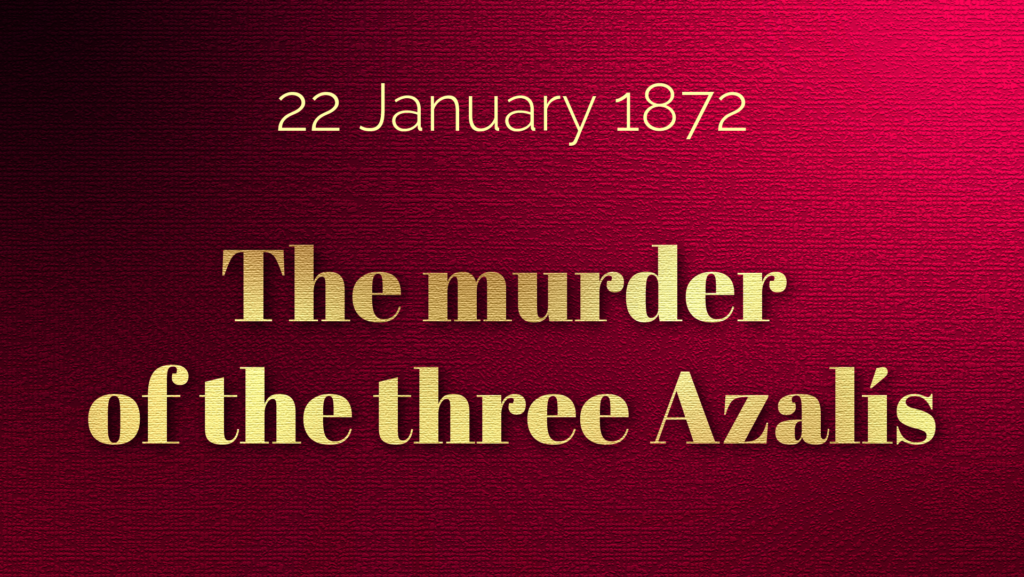
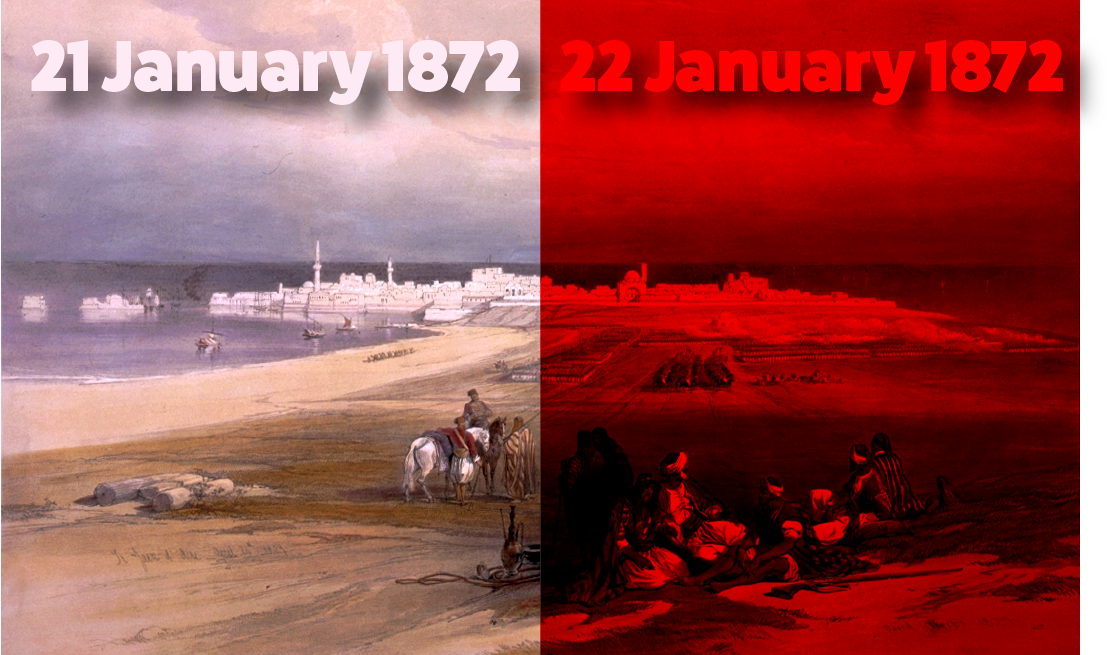
To illustrate the speed with which ‘Akká was overtaken by the crisis, and how quickly Bahá'u'lláh’s prophecy below came true, a before/after split-processed image, ‘Akká on 21 January, and ‘Akká on 22 January 1872. Original image: Color lithograph of a view of St. Jean d'Acre (‘Akká) from land on 24 April 1839 by David Roberts, published in The Holy Land, Syria, Idumea, Arabia, Egypt and Nubia. Source: Wikimedia Commons. © Violetta Zein.
Soon after the Fire Tablet, Bahá'u'lláh revealed a significant unpublished and untranslated Tablet in which He clearly prophecies the appearance of a great affliction, described as an ocean of tribulation surging, with billowing waves engulfing the Ark of the Cause of God. The prophecies in this Tablet were fulfilled less than 24 hours later.
Adib Taherzadeh, The Revelation of Bahá'u'lláh Volume 3: ‘Akká, the Early Years 1868-1877, page 235.
DATE
In David S. Ruhe, Door of Hope: The Bahá’í Faith in the Holy Land, page 37, the date for the murder of the three Azalís is listed as 22 January 1872. Since Adib Taherzadeh says in The Revelation of Bahá'u'lláh Volume 3: ‘Akká, the Early Years 1868-1877, page 235 that “it only took one day” for the revealed prophecy to be fulfilled, the date of Revelation for this Tablet was estimated to be 21 January 1872, which is corroborated byMr. Taherzadeh’s statement that it was revealed shortly after the Fire Tablet, revealed in late 1871.
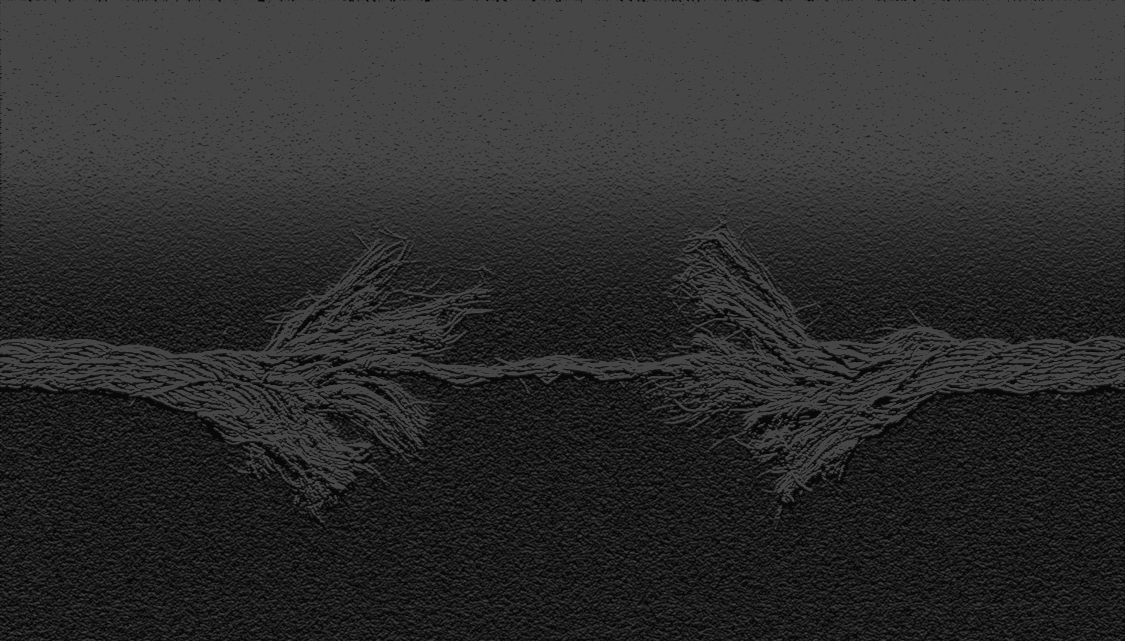
A stylized 3D impression of an extremely frayed rope on the point of breaking, offered as an abstract illustration of the state of mind of the seven Bahá'ís, pushed to the breaking point, immediately before they put an end to the lives of the three Azalís. © Violetta Zein.
After the Most Great Separation, Bahá'ís who followed Bahá'u'lláh, and Azalís who followed Mírzá Yaḥyá, did not associate. When they had been sent into exile, the Ottoman authorities had sent two Azalís with Bahá'u'lláh to 'Akká, His place of banishment, and four Bahá'ís with Mírzá Yaḥyá to be exiled to Famagusta, Cyprus. The mixture was volatile in 'Akká where the Azalís did everything they could to undermine Bahá'u'lláh, to such an extent that seven misguided Bahá'ís decided to kill them, even if it invoke Bahá'u'lláh’s wrath and cause their expulsion from the Bahá'í community.
They knowingly sacrificed their spiritual afterlife in the name of revenge, as one of the murderers told Lady Blomfield, years later: "If these spies and traitors kill us, then we shall have sacrificed our lives to protect the Holy Ones. If we kill them we shall have delivered the Bahá'ís from their most pernicious enemies. Bahá'u'lláh will excommunicate us—that is terrible! We shall then have sacrificed our souls! But this evil shall be destroyed! It shall be destroyed!”
Adib Taherzadeh, The Revelation of Bahá'u'lláh Volume 3: ‘Akká, the Early Years 1868-1877, pages 235-236.
Lady Blomfield, The Chosen Highway, page 251.
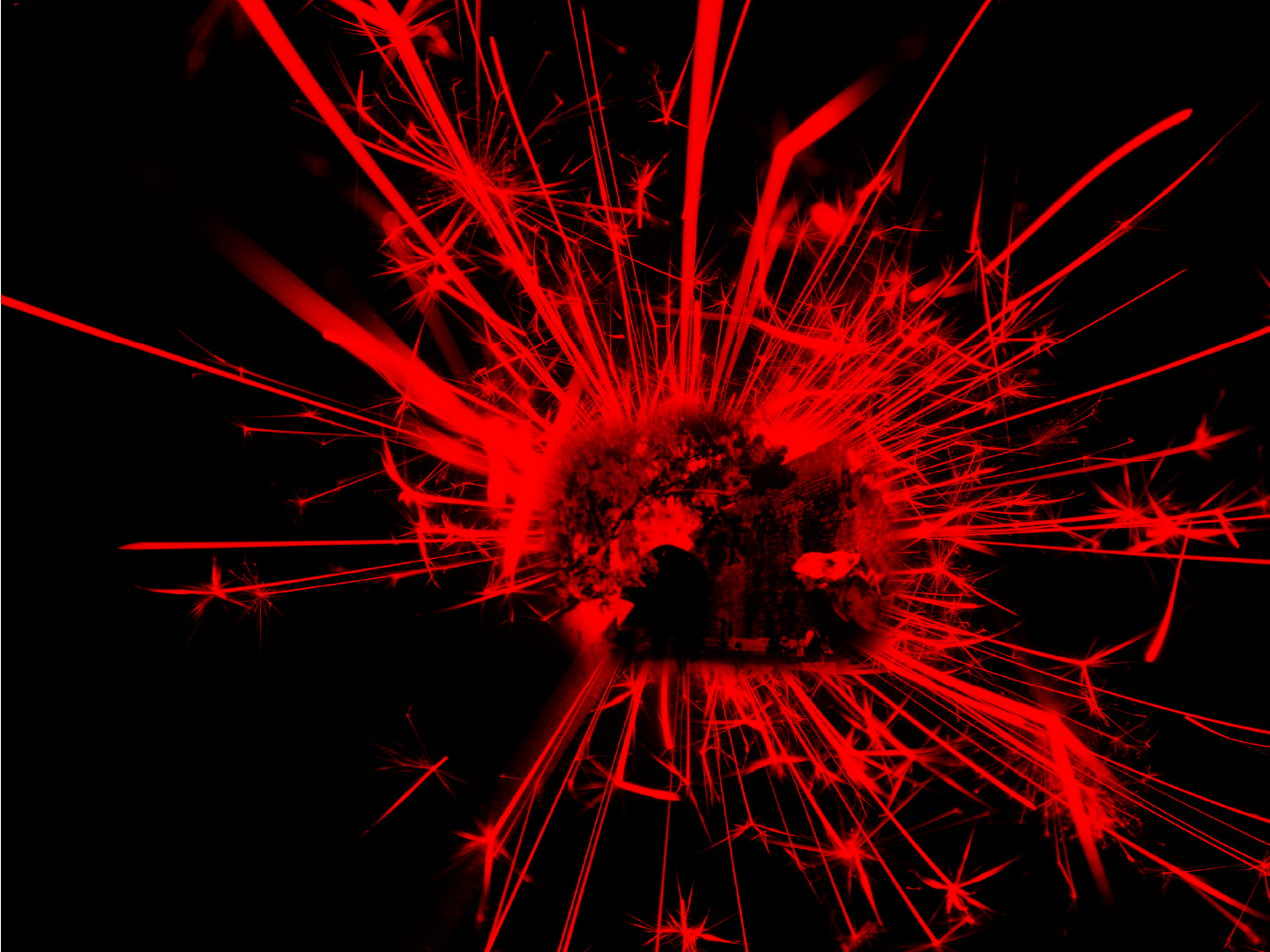
The illustration depicts not the murders, but how the murders acted as a spark that lit a conflagration in ‘Akká. The explosion in the background starts in the vicinity of the neighborhood where the murders took place, the photograph at the center is from Saladin street, near Lion’s gate, where Siyyid Muḥammad and Kaj-Kuláh lived. Original photograph from David S. Rue, Door of Hope page 37. © Violetta Zein.
Siyyid Muḥammad, Kaj-Kuláh, and Mírzá Riḍá-Qulí had run such an effective campaign of misinformation, opposition, and rabble-rousing, that they fell victim to their own success. They were murdered on 22 January 1872, by seven believers, brought to the breaking point by their incessant and vicious intrigues.
The seven Bahá'ís who committed the heinous act were Áqá Muḥammad-Ibrahím-i-Naẓír (who had already expressed this desire to Bahá'u'lláh), Mírzá Ḥusayn-i-Najjár, our beloved, faithful Áqá Ḥusayn-i-Áshchí (for many years the cook of the Holy Family), Mírzá Ja'far, Ustád Aḥmad-i-Najjár, Áqá Muḥammad-'Alíy-i-Salmání and Ustád 'Abdu'l-Karím-i-Kharráṭ.
Shoghi Effendi, God Passes By.
H.M. Balyuzi, Bahá'u'lláh: The King of Glory, pages 325-326.
Adib Taherzadeh, The Revelation of Bahá'u'lláh Volume 3: ‘Akká, the Early Years 1868-1877, pages 224 and 235-236.
DATE
David S. Ruhe, Door of Hope: The Bahá’í Faith in the Holy Land, page 37.
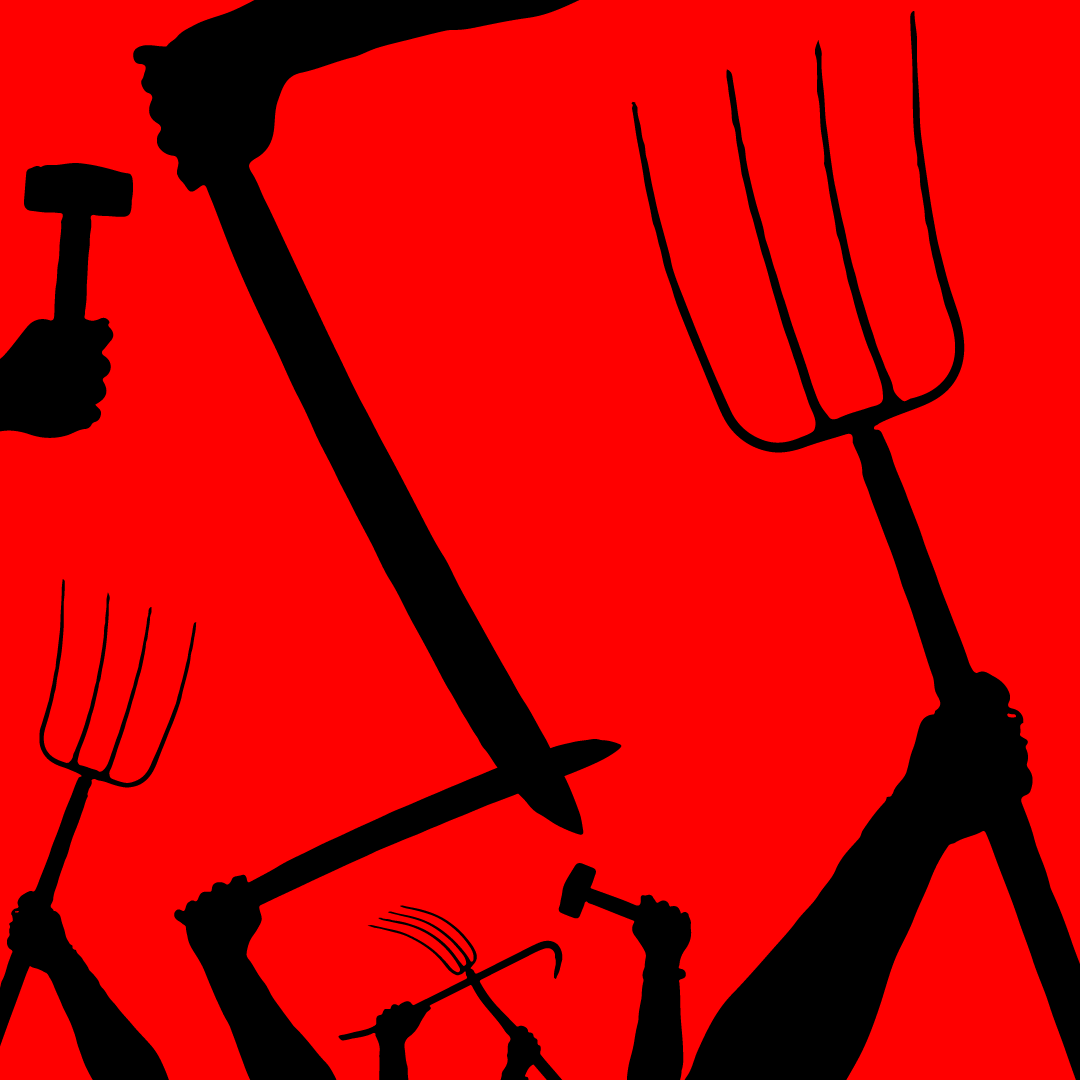
A graphic illustration of mob mentality, when ordinary citizens grab whatever tools are at their reach to turn into weapons and march together in blind anger. © Violetta Zein.
The sound of pistol shots near the Government House, followed shouts and yelling, brought Ṣáliḥ Páshá, the Governor, out of his house. Pandemonium broke out in ‘Akká after the murders, and everyone rose up. The Governor, the Chief of Police, the troops, the population of ‘Akká, young and old, assembled into a mob. 'Akká was in such a state of turmoil, it was as if it had been invaded by another country. Armed with stones, sticks, swords, and rifles, the mob headed straight for Bahá'u'lláh in the house of ‘Údí Khammár, and arrested all the Bahá'ís they could find on the way.
H.M. Balyuzi, Bahá'u'lláh: The King of Glory, page 326.
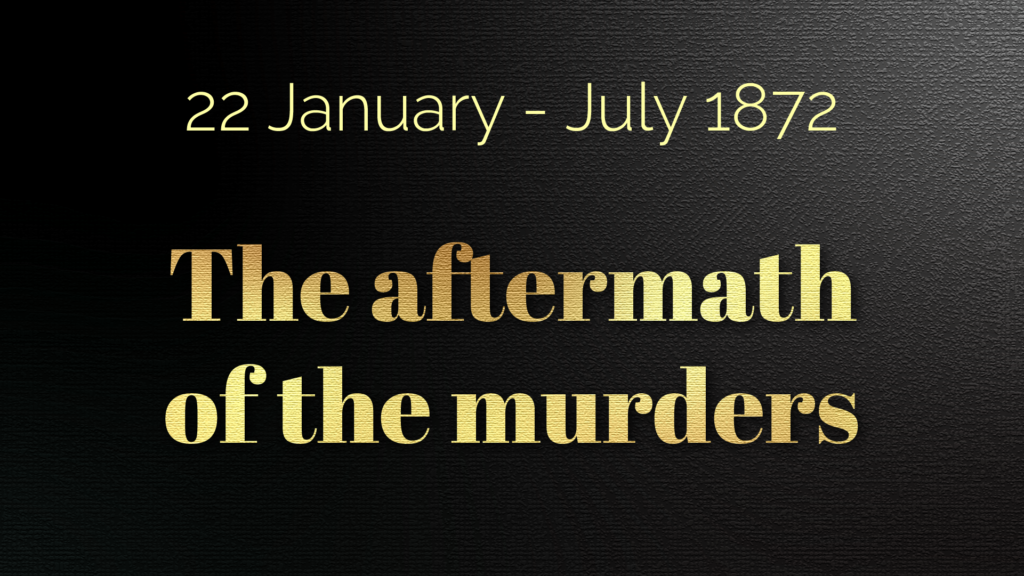
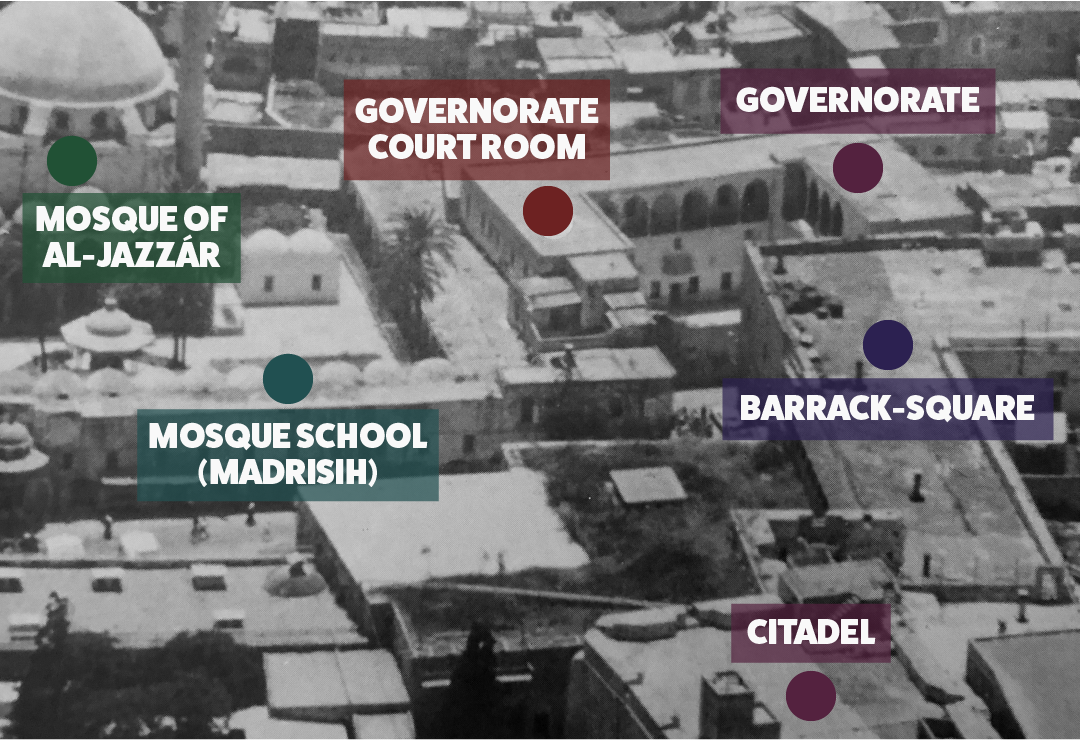
Original aerial photograph and legend from David S. Rue, Door of Hope page 40. © Violetta Zein.
The mob arrived in front of the house of ‘Údí Khammár an hour after sunset on 22 January 1872, on tenterhooks. Bahá'u'lláh was dictating Tablets when the Governor, followed by his troops with drawn swords surrounded the house, drowned out by the shouts and clamor of the large crowd.
Sa'íd Big, an Ottoman official entered the bírúní of the house of ‘Údí Khammár accompanied by Bahá'u'lláh’s neighbor, Ilyás 'Abbúd. They asked 'Abdu'l-Bahá and three other Bahá'ís present to accompany them to the Governorate, requesting Bahá'u'lláh join them as well. 'Abdu'l-Bahá went to Bahá'u'lláh, in the andáruní part of the house, and presented Him with their request. When Bahá'u'lláh came out of the andáruní, night had fallen, and a man lit their way with a lantern. Bahá'u'lláh left His house walking with such discernible power, that a resident of 'Akká who witnessed the scene became a Bahá'í that very night.
Shoghi Effendi, God Passes By.
H.M. Balyuzi, Bahá'u'lláh: The King of Glory, page 326.
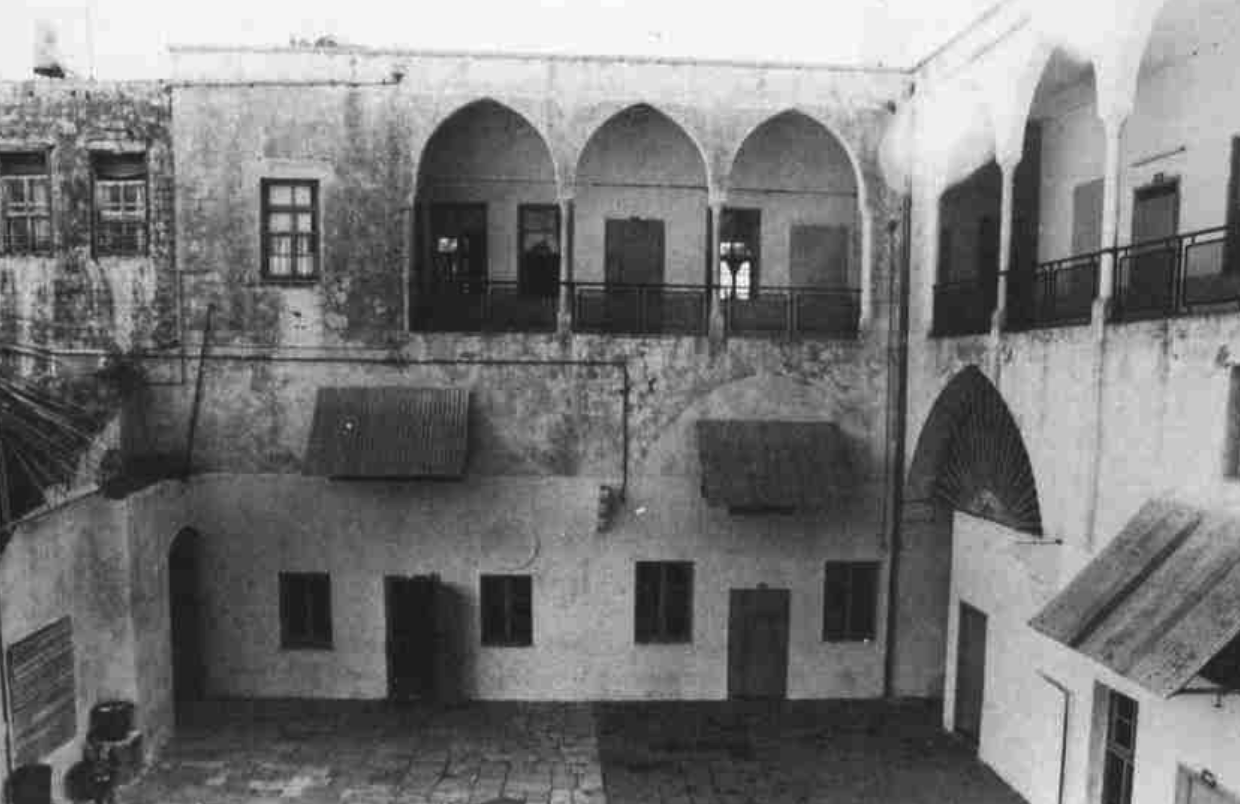
The Governorate in 'Akká, looking across to the room where Bahá'u'lláh was interrogated. Adib Taherzadeh: Revelation of Bahá'u'lláh Volume III
When Bahá'u'lláh entered the Governorate, Ṣáliḥ Páshá, the Governor, Salím Mulkí, the head of the Secretariat, and other officials present stood before Him. Bahá'u'lláh took a seat at the front of the room in complete silence until the Commandant abruptly attacked Him: “Is it proper that some of your followers should act in such a manner?” Unimpressed, Bahá'u'lláh immediately replied: “If one of your soldiers were to commit a reprehensible act, would you be held responsible, and be punished in his place?”
The Ottoman officials asked Bahá'u'lláh to state His name twice, and when they asked it a third time, with more respect, He consented to answer: “My name is Bahá’u’lláh (Light of God), and My country is Núr (Light). Be ye apprised of it.”
Bahá'u'lláh turned to the Muftí and rebuked him before reprimanding the entire gathering assembled at the Governorate in such vehement and exalted language, quoting verses from the Súriy-i-Múlúk, that no one dared respond to Him. Then, Bahá'u'lláh rose and left the interrogation for another room where He would be made to wait nearly four hours.
Shoghi Effendi, God Passes By.
H.M. Balyuzi, Bahá'u'lláh: The King of Glory, pages 326-327.
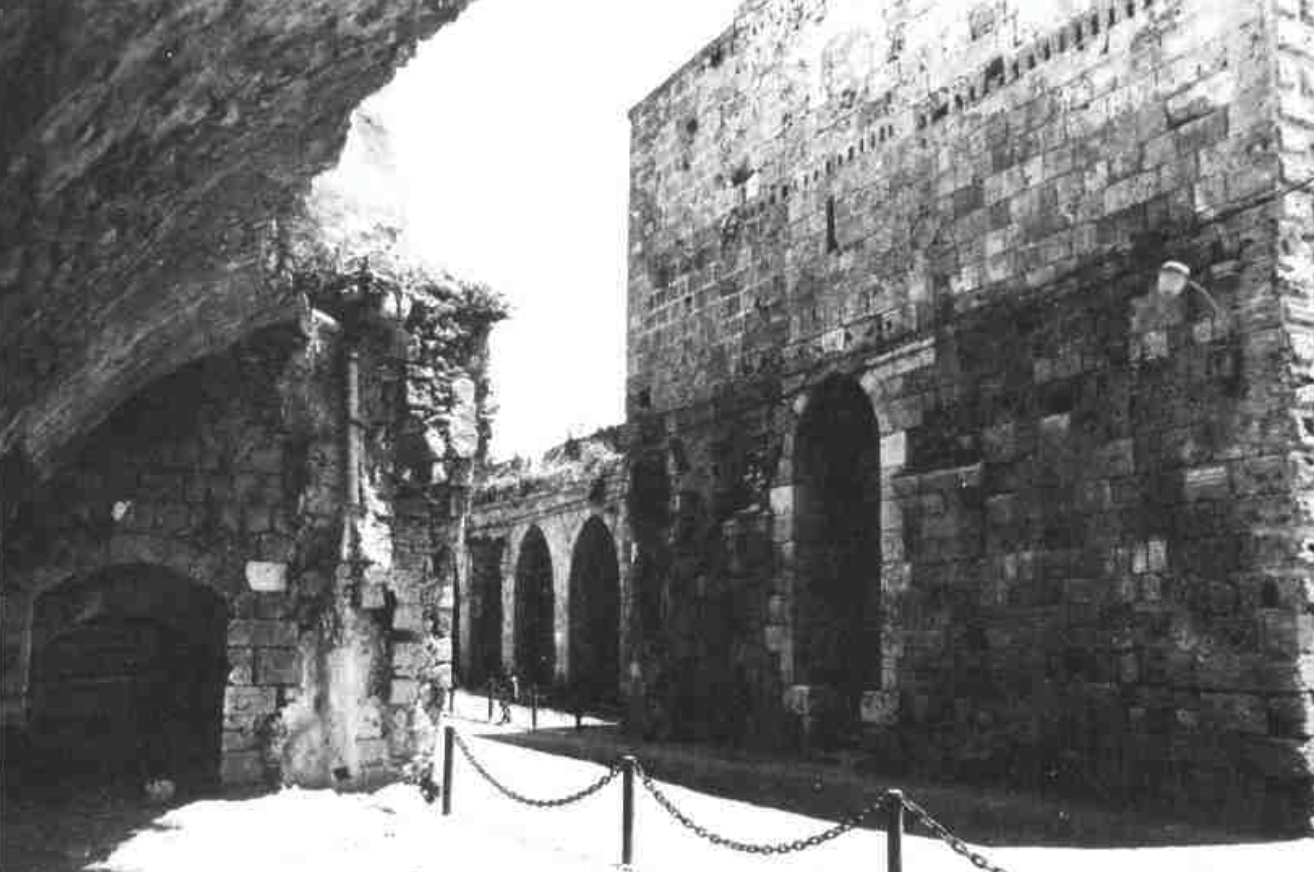
The Khán-i-Khávirdí, the caravanserai in 'Akká where Bahá'u'lláh was kept in custody for one night during the interrogation, it is adjacent to the Límán, where 'Abdu'l-Bahá was taken. Adib Taherzadeh: Revelation of Bahá'u'lláh Volume III
The Ottoman officials detained 'Abdu'l-Bahá’s half-brother, Muḥammad-‘Alí, Mírzá Áqá Ján and Bahá'u'lláh’s brother, Áqá Mírzá Muḥammad-Qulí and banned entry to or exit from a Russian steamer anchored off the coast of 'Akká.
Four hours after sunset, at around 21:30 (9:30 P.M.), Bahá'u'lláh, together and Muḥammad-‘Alí, were led to a room in the Khán-i-Shávirdí, the northern caravanserai in ‘Akká, and an extension to the prison.
‘Abdu’l‑Bahá was thrown into prison in the Limán, next door to where Bahá'u'lláh was detained, and was chained for the first night in a long pitch-black room, with a low, vaulted stone ceiling, extremely damp with slime-covered walls and a muddy, sticky floor. No outside light could come in except through the door when it was opened, and so it was pitch-black. The next day, He was allowed to rejoin Bahá'u'lláh.
Áqá Mírzá Muḥammad-Qulí was detained elsewhere, and Mírzá Áqá Ján was allowed to return to the house and bring what Bahá'u'lláh would need for the night, after which he was locked up in the Governorate jail.
Shoghi Effendi, God Passes By.
H.M. Balyuzi, Bahá'u'lláh: The King of Glory, pages 326-332.
Adib Taherzadeh, The Revelation of Bahá'u'lláh Volume 3: ‘Akká, the Early Years 1868-1877, pages 237-238.
Lady Blomfield, The Chosen Highway, page 252.
Wikipedia: Ottoman Syria’.
TIME
Sunset in ‘Akká on 22 January 1872 took place at 17:22 (5:22 P.M.). Four hours after sunset on that day would be sometime after 21:22 (9:22 P.M.) Source for the historical sunset: Google Search AI.
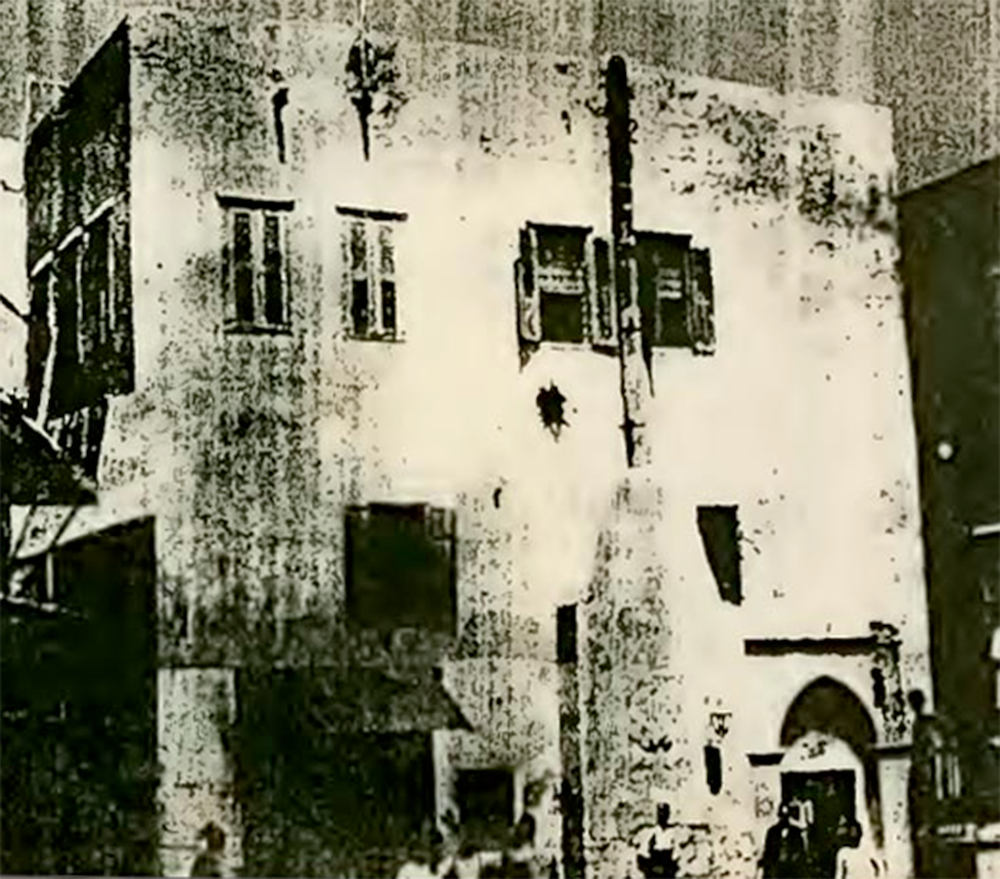
A very unusual photograph of the house of Údí Khammár, from The Historical Development of Genoa Square in Acre Israel from the Seventh Century to the Present Day, page 125, a thesis by Amy Suzanne Hollander available on Bahá'í Library Online. The image’s native weathered and distressed quality is an appropriate illustration for a most distressing episode for the women of the Holy Family, particularly Ásíyih Khánum.
The first night, while 'Abdu'l-Bahá was in chains in the Limán, Ottoman officials arrived and demanded keys from Him saying they needed to search Bahá'u'lláh’s house for weapons. Ásíyih Khánum and Bahíyyih Khánum were alone at home, the men having all been arrested, and 'Abdu'l-Bahá refused to give them the keys, but agreed to accompany them so they would not frighten His mother and sister.
'Abdu'l-Bahá was forced to walk from the prison in northeast 'Akká to the house of ‘Údí Khammár in the western part of the city with chains around His neck and feet, a total distance of about one kilometer (0.6 miles). When they reached the house, 'Abdu'l-Bahá tried to hide the chains from His mother, but Ásíyih Khánum saw them and wept bitterly.
Lady Blomfield, The Chosen Highway, pages 254-255.
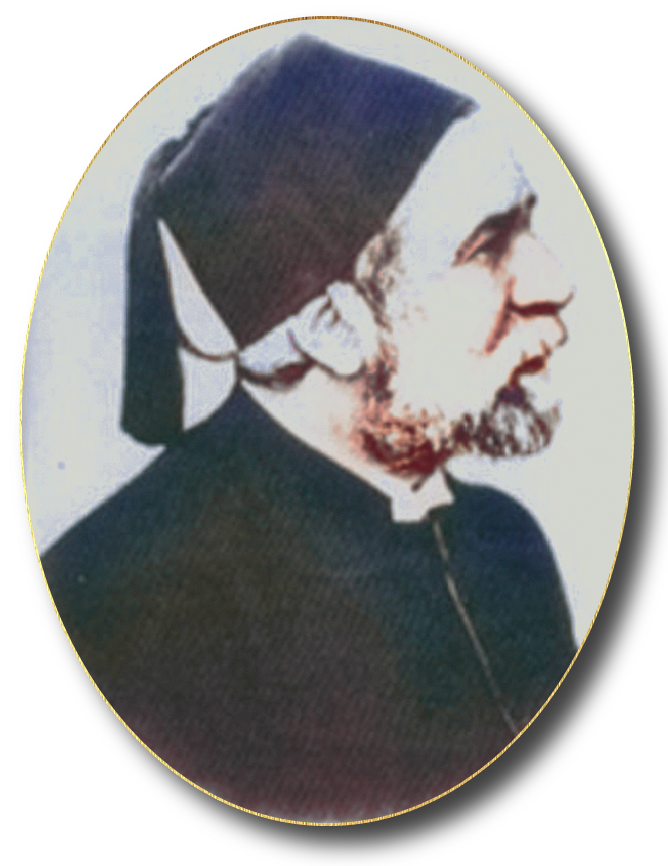
A very lightly colorized photograph of Subhí Páshá, also known as Abdüllatif Suphi Pasha and Sami Pashazade Subhi Pasha, who was Governor General of Syria from 1871 – 1873. He is featured in the story below, and was responsible, via a sternly-worded cable, for Ṣáliḥ Páshá’s improved attitude towards Bahá'u'lláh. Original black-and-white photograph from Wikimedia Commons.
Ṣáliḥ Páshá, the Governor (Mutaṣarrif) of ‘Akká, cabled Ṣubḥí Páshá, the General Governor (Valí) of Syria and apprised him of the situation, and the actions he had taken. Ṣubḥí Páshá reprimanded the Governor of 'Akká for his treatment of Bahá'u'lláh, and the next day, Ṣáliḥ Páshá transferred Bahá'u'lláh to better accommodations where He spent the nights of 23 and 24 January 1872.
On the afternoon of the third day, 25 January 1872, Bahá'u'lláh, 'Abdu'l-Bahá, Muḥammad-‘Alí, and Áqá Mírzá Muḥammad-Qulí, were once again summoned to the Governorate. Bahá'u'lláh was suffering from a slight fever, and reproached Ṣáliḥ Páshá for having acted against the edicts of God. The Governor informed Bahá'u'lláh that they were free to return home, and as Bahá'u'lláh rose to leave, so did the Governor and officials, humbly apologizing for their behavior.
Shoghi Effendi, God Passes By.
H.M. Balyuzi, Bahá'u'lláh: The King of Glory, pages 326-332.
Adib Taherzadeh, The Revelation of Bahá'u'lláh Volume 3: ‘Akká, the Early Years 1868-1877, pages 237-238.
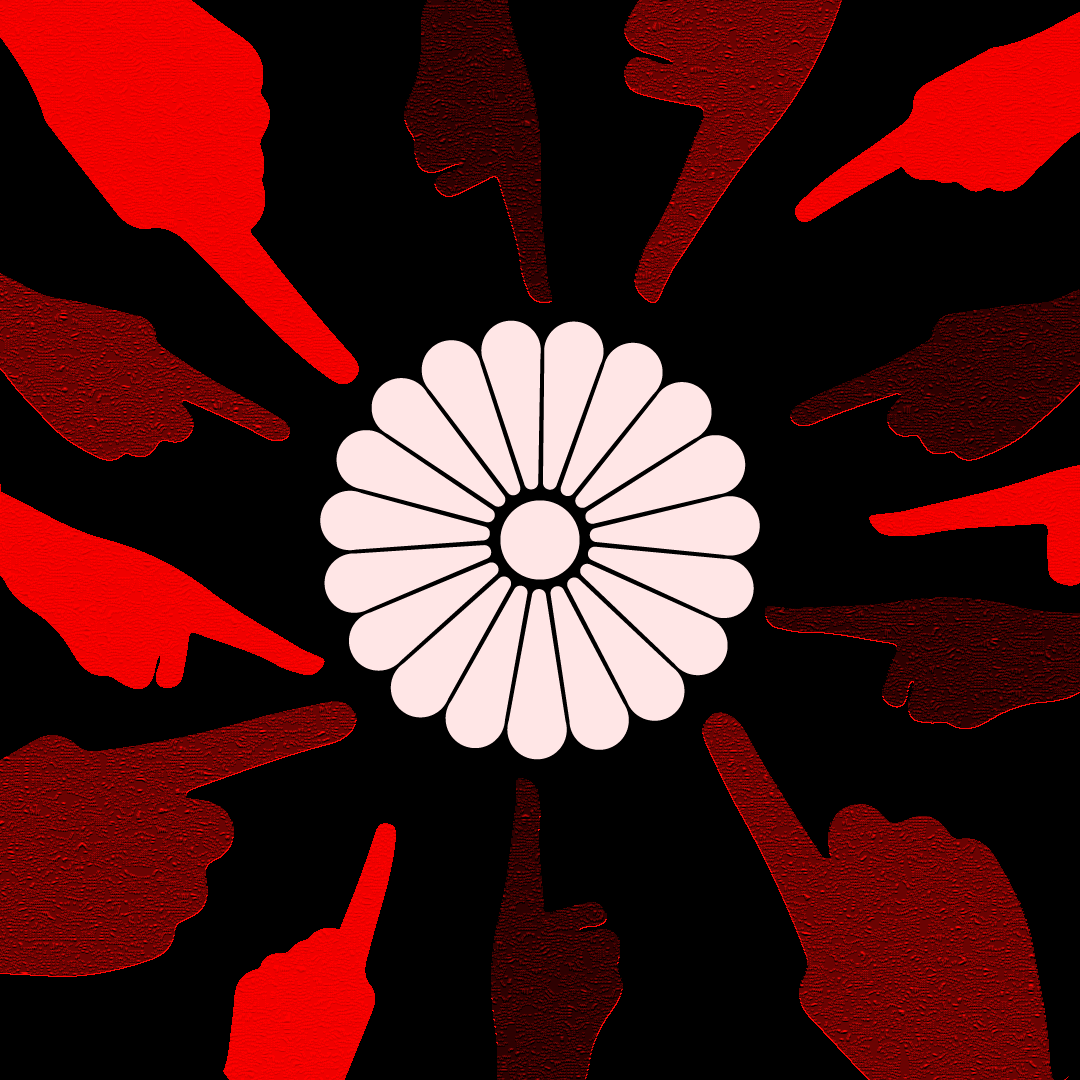
A delicate, flower-like pink 19-pointed rosace, inspired but customized from the Bahá'í World Centre graphic, represents the Center of the Covenant, the Bahá'í Faith, its reputation besmirched, and its followers and Prophet-Founder attacked, symbolized by the pointing fingers. © Violetta Zein.
In two separate Tablets, Bahá'u'lláh spoke of the behavior of believers as the only thing capable of shaming Him, comparing it to His captivity: “My captivity cannot harm Me. That which can harm Me is the conduct of those who love Me…and yet perpetrate what causeth my heart and My pen to groan,” and “My captivity can bring on Me no shame…That which can make Me ashamed is the conduct of such of My followers as profess to love Me, yet in fact follow the Evil One.”
The population of 'Akká had been so misinformed by the Azalís that they were already ill-disposed towards the Bahá'ís, but the murders fired an animosity towards all the followers of Bahá'u'lláh. The Bahá'ís found themselves openly insulted and accused of immorality, godlessness, atheism, terrorism, and heresy and their children were pursued, berated, and pelted with stones.
Ilyas ‘Abbúd, Bahá’u’lláh’s next-door neighbor, was now so terrified of his Neighbor that he reinforced the partition that separated his house from Bahá'u'lláh's.
Shoghi Effendi, God Passes By.
First and third excerpts: Bahá'u'lláh - Lawḥ-i-Saḥáb (Tablet of the Cloud); Partial Inventory ID: BH00739, quoted in Shoghi Effendi, God Passes By .
Second excerpt: Bahá'u'lláh, Gleanings from the Writings of Bahá'u'lláh, N° LX.
H.M. Balyuzi, Bahá'u'lláh: The King of Glory, page 331.
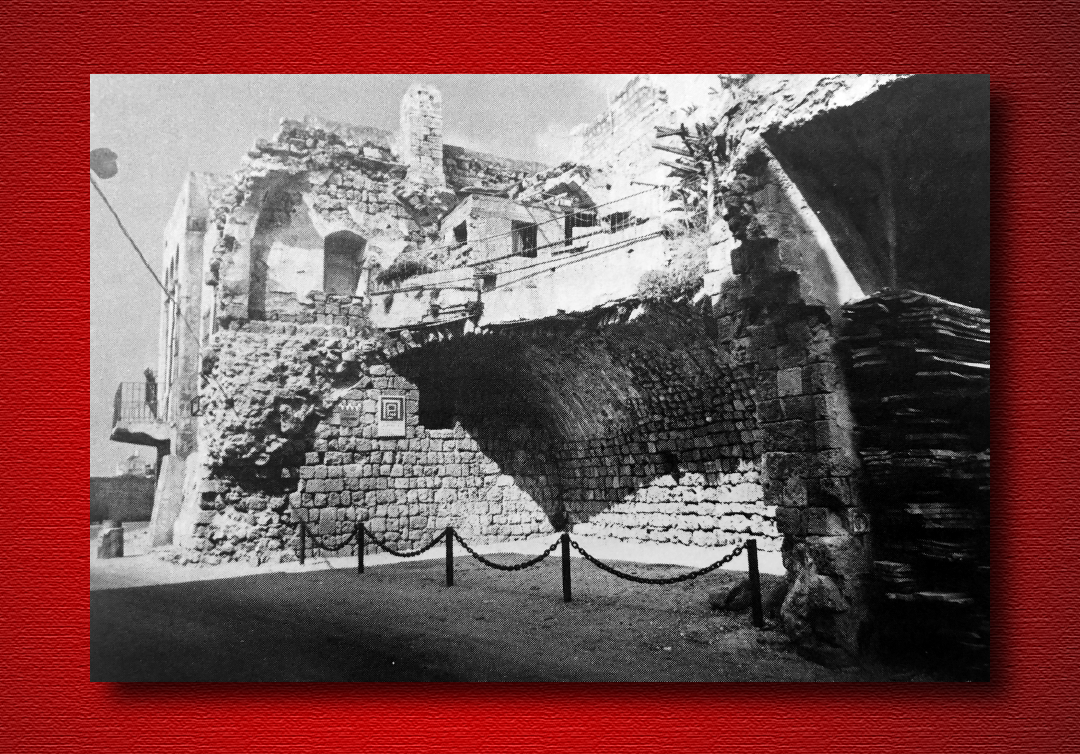
The Khán-i-Shávirdí, where the 16 Bahá'ís were imprisoned for six months, and the subject of the story below. The Khán-i-Shávirdí has severely deteriorated, and is not in good condition. Source: H.M. Balyuzi, Bahá'u'lláh: The King of Glory, page 329.
The seven Bahá'ís who had committed the heinous murders were imprisoned for seven years.
After the murders, sixteen innocent Bahá'ís were rounded up and imprisoned, including Ḥájí ‘Alí- 'Askar-i-Tabrizí who was overlooked and demanded to be incarcerated with his brethren. After six days, they were moved to the Khán-i-Shávirdí, where they were confined for six months, during which they were closely watched and treated harshly by Ottoman artillerymen.
Before their murder, the Azalís had poisoned the minds of many people against the Bahá'ís, including the artillerymen who now watched over their Bahá'í prisoners. As the men watched their prisoners, their prejudice and animosity gave way to admiration at the Bahá'ís' ever-present gentleness and exemplary behavior. Eventually these same guards expressed their disgust at the Ottoman officials who adamantly refused to free the innocent prisoners.
The Bahá'ís planted flowers in the yard, and kept the Khán-i-Shávirdí neat and tidy, each one taking a turn for cooking and cleaning, and they entertained the formerly hostile artillerymen and policemen for tea in the afternoons. Not long before their release, some of the prisoners were allowed to leave the Khán-i-Shávirdí to visit the believers and enter the presence of Bahá'u'lláh.
Shoghi Effendi, God Passes By.
H.M. Balyuzi, Bahá'u'lláh: The King of Glory, pages 326-332.
Adib Taherzadeh, The Revelation of Bahá'u'lláh Volume 3: ‘Akká, the Early Years 1868-1877, pages 237-238.
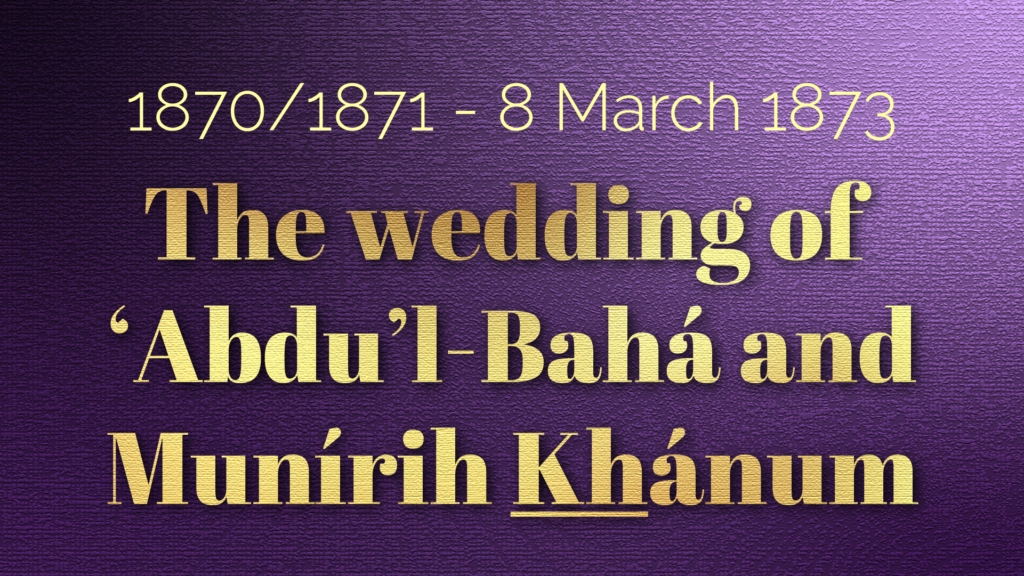
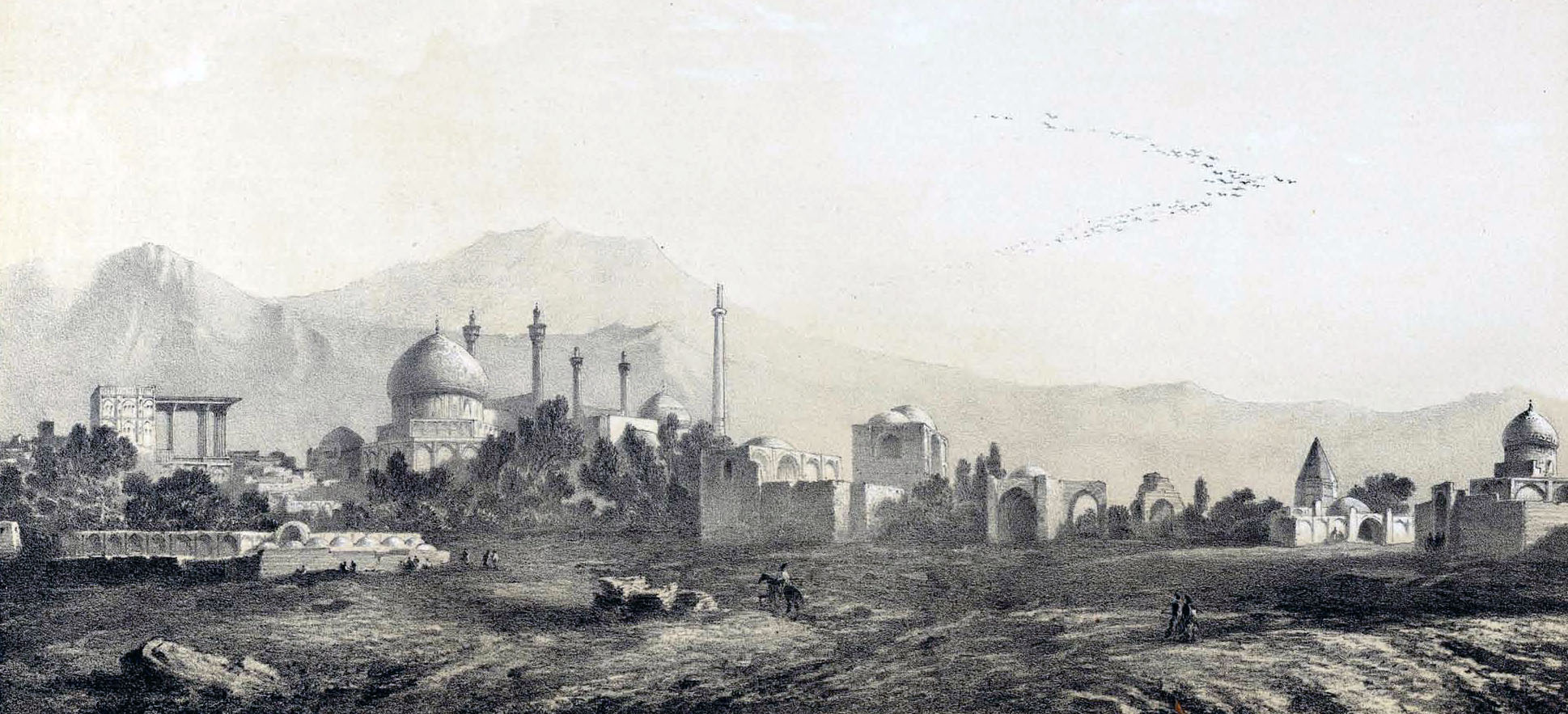
A view of Iṣfahán from the south in 1851, engraving by Eugène Flandin from his book Voyage en Perse avec Flandin. Source: Wikimedia Commons.
Around 1870/1871, Áqá Siyyid Mihdí was visiting Iṣfahán to teach the Faith, at the request of Bahá'u'lláh. At the time, Bahá'u'lláh’s eldest, saintly, and extremely handsome 26-year-old son was still unmarried, and His marital status was of the greatest interest to the Bahá'í communities of Persia. The Persian believers asked Siyyid Mihdí about it and he told them a dream Bahá'u'lláh had shared with him as He was pacing in His bírúní in ‘Akká:
“Áqá Siyyid Mihdí, last night I had a strange dream. I dreamt that the face of the beautiful girl in Tehran, whose hand in marriage we have asked from our brother Mirza Ḥasan for the Most Great Branch, gradually became darkened and indistinct. At the same time, another girl appeared with a luminous face and a luminous heart. I have chosen her for the Most Great Branch.”
Shamsu’ḍ-Ḍuḥá, an illustrious Bahá'í and one of Ṭáhirih’s companions in ‘Iráq, instantly knew the luminous girl in Bahá'u'lláh’s dream was her niece, Fáṭimih Khánum, deeply spiritual from childhood, pure and radiant. Fáṭimih Khánum was very distraught at her aunt’s certainty and begged her never to speak of the matter again.

A 19th century view of ‘Akká from the coast towards Haifa, much like what Munírih Khánum would have seen upon arriving, albeit from a slightly different angle. Ottoman Imperial Archives Twitter.
Shaykh Salmán, Bahá'u'lláh’s trusted courier, arrived in Iṣfahán some months after Áqá Siyyid Mihdí’s visit and informed Fáṭimih Khánum that Bahá'u'lláh had invited her to 'Akká for pilgrimage. Shaykh Salmán, Fáṭimih Khánum, and her brother arrived in 'Akká in the dead of night, after having followed Bahá'u'lláh’s detailed instructions every step of the way. The next morning, Bahá'u'lláh summoned Fáṭimih Khánum to His presence and told her: “We have received you into this prison at a time when the prison door is closed to all the believers, so that the power of God may become clear and evident to all.”
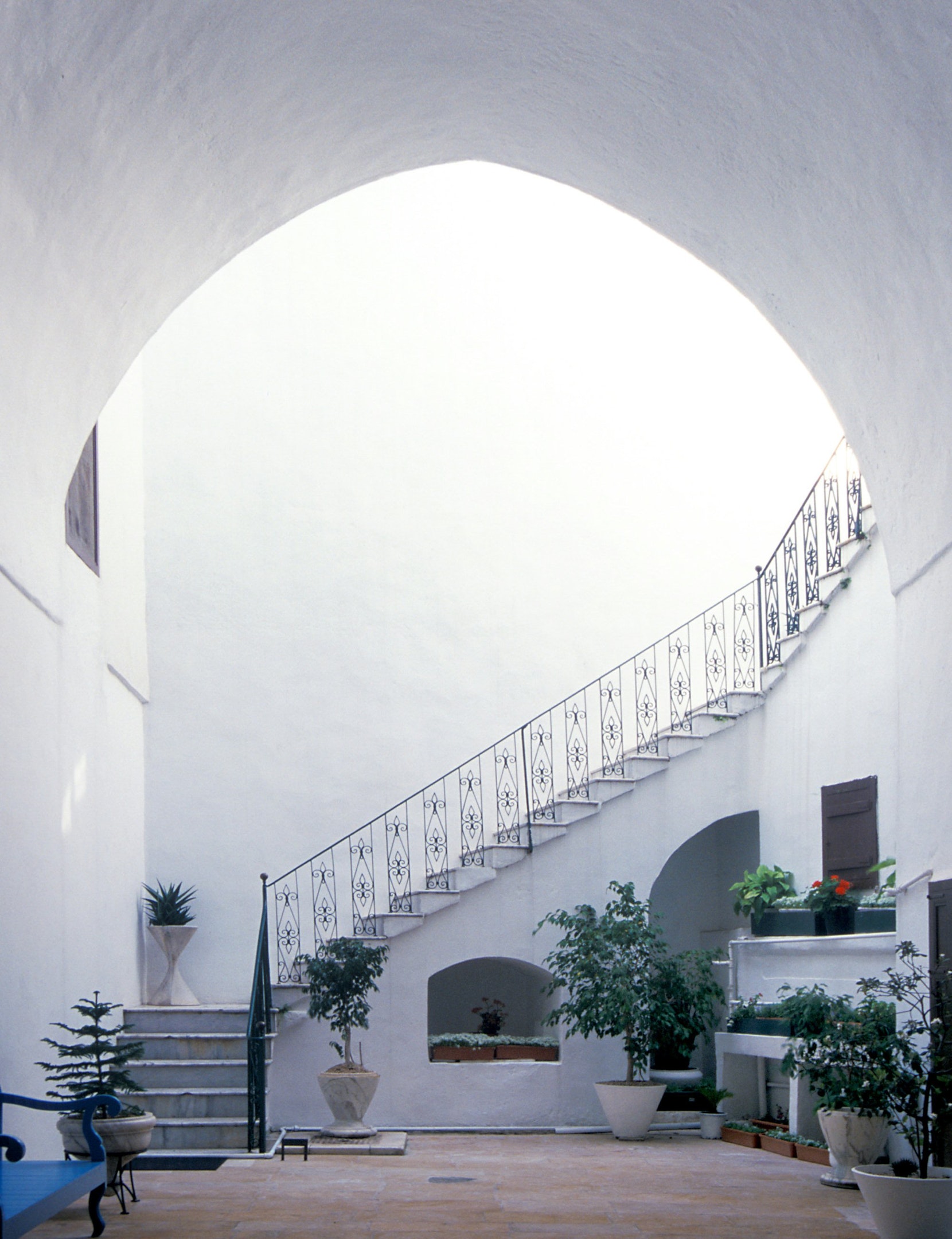
The courtyard of the house of ‘Abbúd, where Ilyás ‘Abbúd still lived at the time of the wedding of 'Abdu'l-Bahá and Munírih Khánum. This staircase leads to the upper floor, where Ilyás ‘Abbúd had a room furnished, and the wall broken down to open into the house of ‘Údí Khammár, as his wedding gift for 'Abdu'l-Bahá, offered to Bahá'u'lláh. Source: Bahá'í Media Bank.
For five months while her wedding was being prepared, Fáṭimih Khánum lived in Mírzá Músá’s house and attained Bahá'u'lláh’s presence several times, receiving messages and gifts from Bahá'u'lláh. One day, Mírzá Músá returned from the presence of Bahá'u'lláh with an unexpected present: “I have brought you a wonderful gift. You have been renamed Munírih (Luminous) by [Bahá'u'lláh].” And Bahá'u'lláh’s prophecy had finally been realized: Fáṭimih Khánum was now Munírih Khánum, the luminous girl with the luminous heart from His dream.
Ilyás 'Abbúd, who had become friendly towards Bahá'u'lláh and the Holy Family began asking why 'Abdu'l-Bahá’s wedding was being delayed. On 8 March 1873, he discovered that it was a simple matter of lack of space: there was no extra room for the young couple. ‘Abbúd immediately broke down the wall of a room in his own house to connect it with the house of ‘Údí Khammár and went to Bahá'u'lláh, offering Him the room as a gift and saying “I have had this room prepared for the Master.” Bahá'u'lláh accepted Ilyás 'Abbúd's kind gift and the wedding took place that same day, three hours after sunset (around 20:00 or 8:00 P.M.).
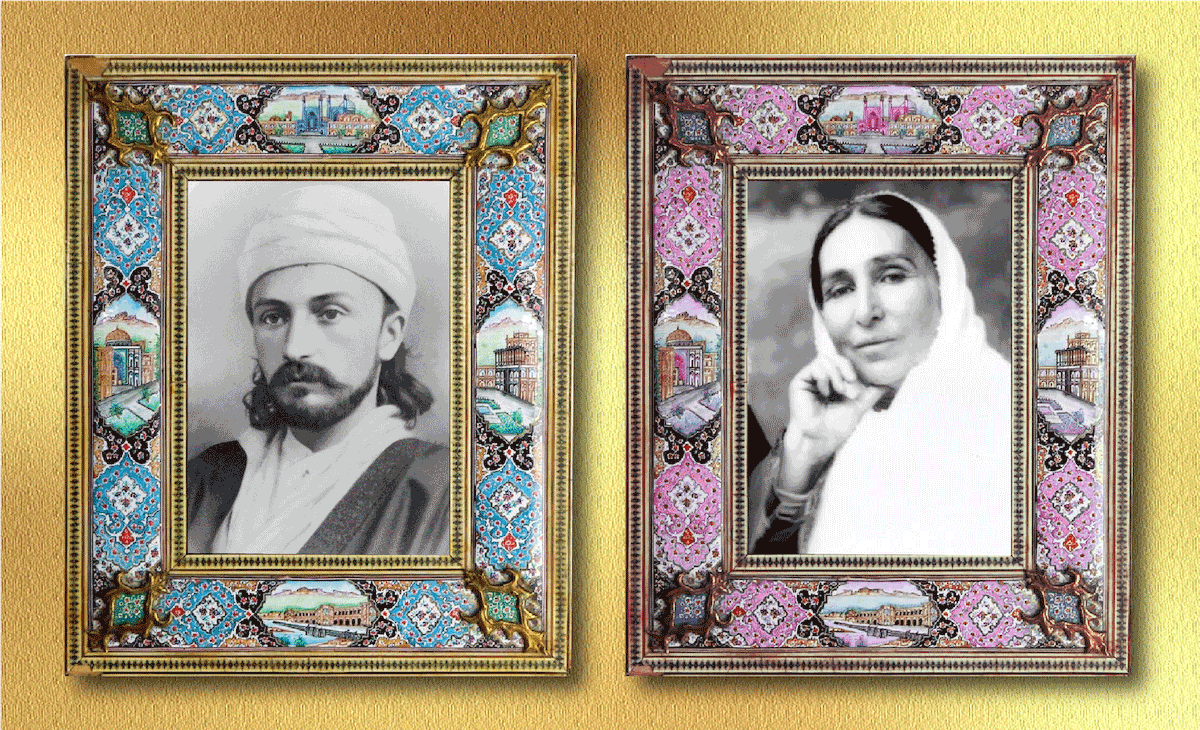
This is, by a small handful of years, what 'Abdu'l-Bahá and Munírih Khánum looked like when they were married at 28 and 26 years old. The photograph of 'Abdu'l-Bahá was taken four years before His wedding, in 1868. The photograph of Munírih Khánum was taken in the 1870s. Source for the photo of 'Abdu'l-Bahá: 'Abdu'l-Bahá in America: 1912-2012; Source for the photo of Munírih Khánum: Bahá'í Media Bank.
The wedding of 'Abdu'l-Bahá and Munírih Khánum was very simple. 'Abdu'l-Bahá's bride wore a white dress given to her by Bahíyyih Khánum, and there were only seven guests, including the wife and daughters of Ilyás 'Abbúd, and for refreshments, they drank tea. Bahá'u'lláh offered Munírih Khánum this blessing on the day of her wedding to His eldest son: “You have come! You are welcome! O My Leaf and My handmaiden! Verily, we chose thee and accept thee to serve my Most Great Branch, and this is by my grace, which is not equaled by all the treasures of earth and heaven ... How many were the girls in Baghdad and Adrianople, and in this Most Great Prison who hoped to attain to this bounty, and whose hopes were not fulfilled. You must be thankful for this most great bestowal and great favour.”
Maani, Baharieh Rouhani. Leaves of the Twin Divine Trees: An in-depth study of the lives of women closely related to the Báb and Bahá'u'lláh, pages 309-327.
Munírih Khánum, Memoirs and Letters, pages 24-25.
Lady Blomfield, The Chosen Highway, pages 84-90.
H.M. Balyuzi, Bahá'u'lláh: The King of Glory, pages 338-350.
DATE
Maani, Baharieh Rouhani. Leaves of the Twin Divine Trees: An in-depth study of the lives of women closely related to the Báb and Bahá'u'lláh, page 318.
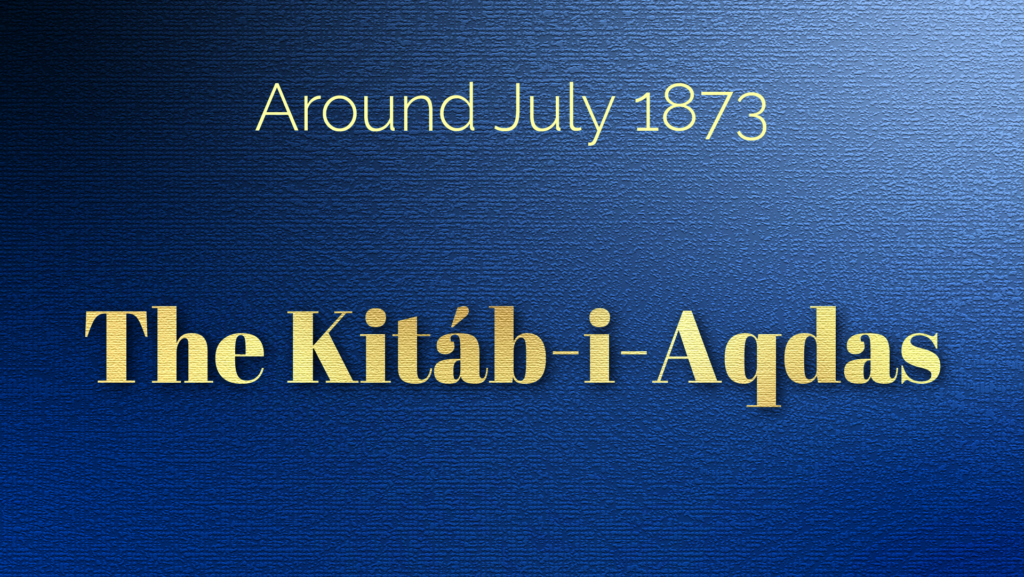
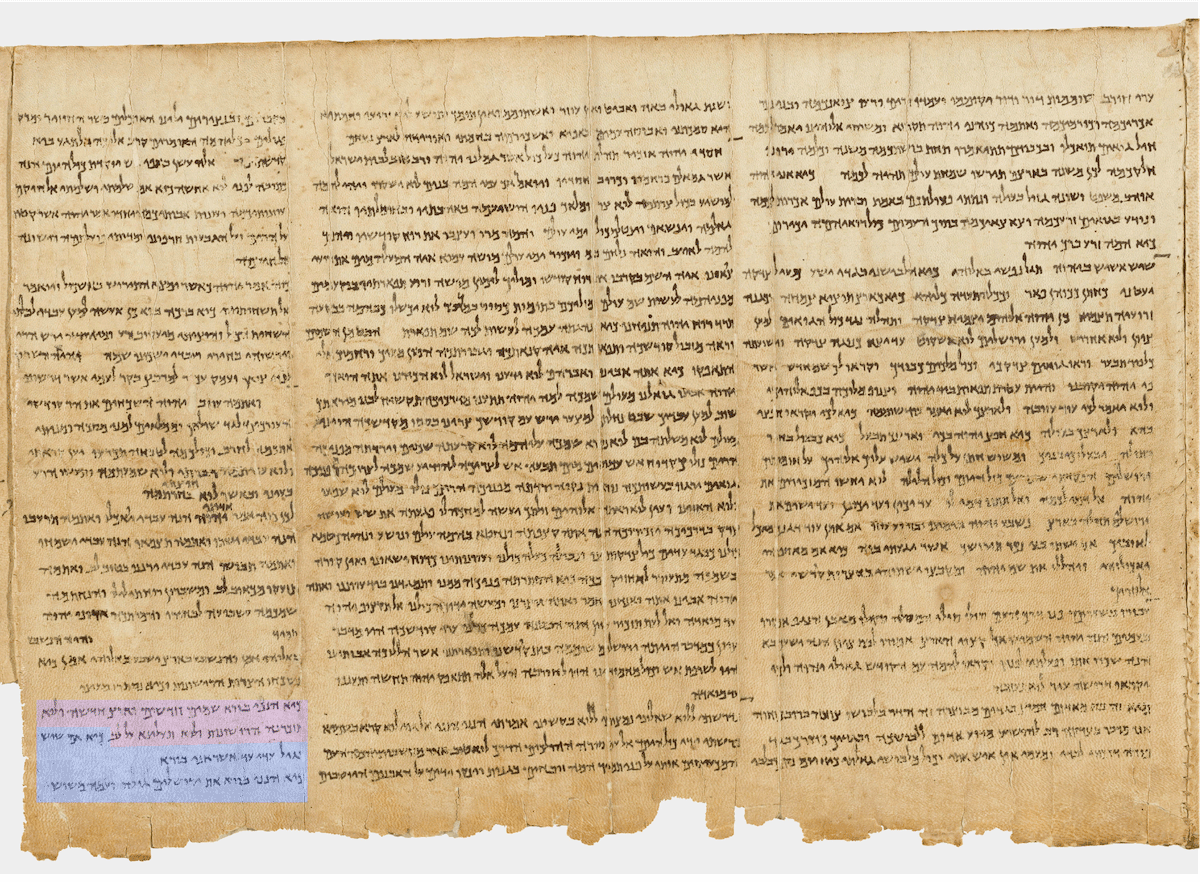
Columns 419, 50, 51, and 52 of the Great Isaiah Scroll. Isaiah 65:17-18 are the last two paragraphs of the last column, indicated with two different-hued color boxes. The Great Isaiah Scroll (1QIsaa) is one of the original seven Dead Sea Scrolls discovered in Qumran in 1947. It is the largest (734 cm) and best preserved of all the biblical scrolls, and the only one that is almost complete. The 54 columns contain all 66 chapters of the Hebrew version of the biblical Book of Isaiah. Dating from ca. 125 BCE, it is also one of the oldest of the Dead Sea Scrolls, some one thousand years older than the oldest manuscripts of the Hebrew Bible known to us before the scrolls' discovery. Source: Wikimedia Commons.
Almost twenty years before its Revelation, Bahá'u'lláh had alluded to the Kitáb-i-Aqdas (The Most Holy Book) in the Kitáb-i-Íqán, and prophesied in Revelation 21:1-3 according to Shoghi Effendi, where it is referred to as the “new heaven,” the “new earth,” “the Tabernacle of God,” the “Holy City,” the “bride,” and the “New Jerusalem, coming down from God.”
In the words of Shoghi Effendi, the Kitáb-i-Aqdas “may well be regarded as the brightest emanation of the mind of Bahá’u’lláh, as the Mother Book of His Dispensation, and the Charter of His New World Order.”
Bahá'u'lláh called the Kitáb-i-Aqdas the “Source of true felicity,” the “unerring Balance,” the “Straight path,” the “quickener of mankind,” the “river of mercy,” and the “Ark of His laws.”
Concerning the laws revealed in the Kitáb-i-Aqdas Bahá'u'lláh describes them as “the breath of life unto all created things,” as “the mightiest stronghold,” as the “fruits” of His “Tree,” as “the highest means for the maintenance of order in the world and the security of its peoples,” as “the lamps of His wisdom and loving-providence,” as “the sweet smelling savor of His garment,” as the “keys” of His “mercy” to His creatures.
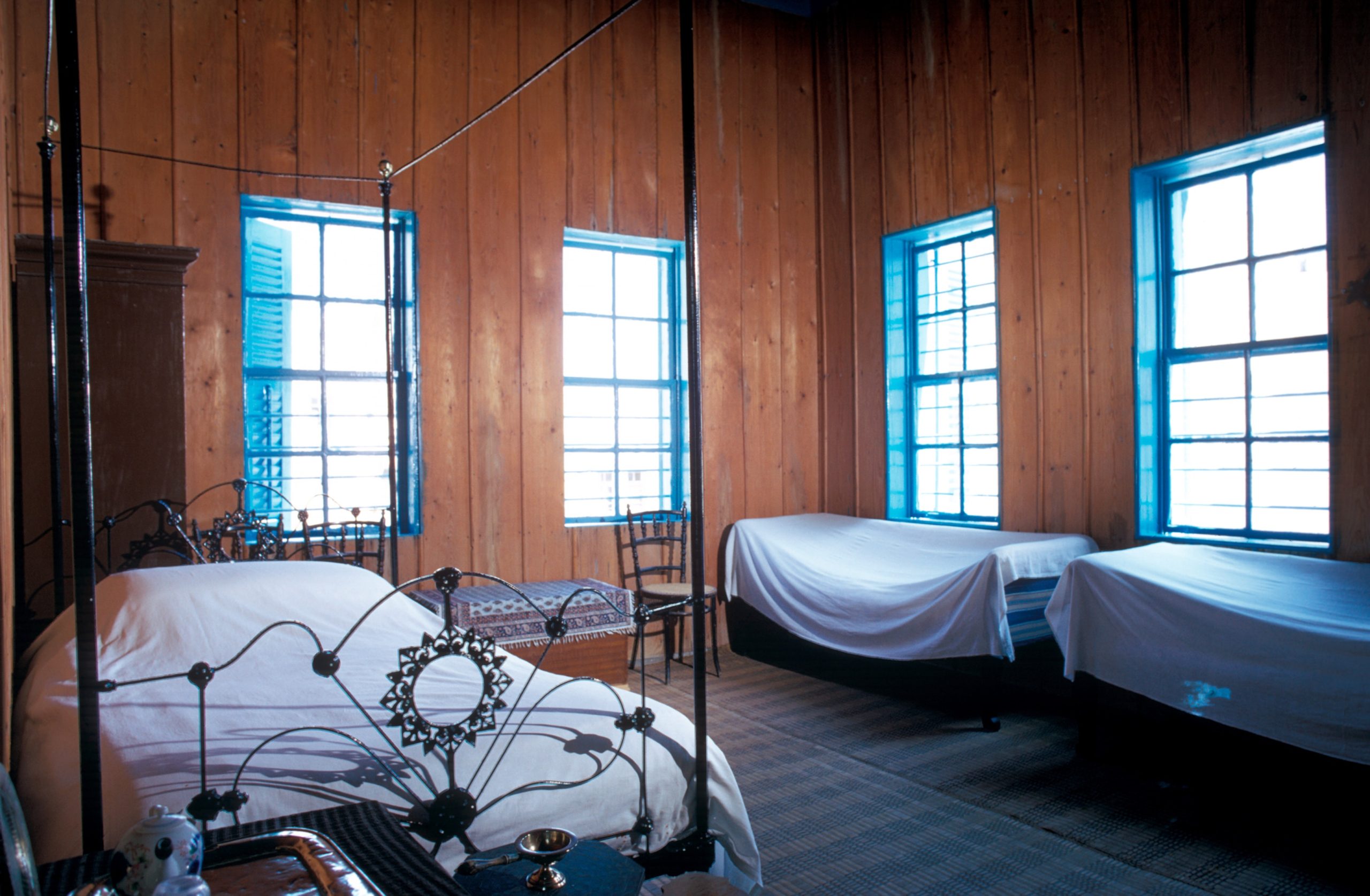
Bahá’u’lláh's room in the house of ‘Údi Khammár where He revealed the Kitáb-i-Aqdas. Source: Bahá'í Media Bank.
For a number years, Bahá'ís had been asking Bahá'u'lláh about the laws of the Bahá'í Dispensation, but Bahá'u'lláh had not found it timely to respond to their questions. In a sublime moment of victory following crisis, Bahá'u'lláh revealed the Kitáb-i-Aqdas around 11 July 1873, 18 months after the crisis of the Azalí murders, in His quarters in the southeastern corner of the house of ‘Údí Khammár.
The Holy Book of the Bahá'í Dispensation is unique among the world’s sacred Scriptures, as it was revealed entirely by the Prophet-Founder of its Faith, and its laws were revealed to last no less than one thousand years, enshrining the charter of the future World Order, clearly naming a successor and authorized Interpreter, and instituting the future administrative institutions meant to safeguard the integrity of the Bahá'í Faith.
When ‘Alí Muḥammad Varqá, one of His Apostles, asked Bahá'u'lláh, 19 years before His Ascension, whom He intended in this verse: "When the Mystic Dove will have winged its flight from its Sanctuary of Praise and sought its far-off goal, its hidden habitation, refer ye whatsoever ye understand not in the Book to Him Who hath branched from this mighty Stock," Bahá'u'lláh indicated that He had meant 'Abdu'l-Bahá.
The Kitáb-i-Aqdas also contains very significant summons to various leaders and kings of the earth. To the “Members of parliaments throughout the world,” Bahá'u'lláh enjoins to adopt a universal language.
Bahá'u'lláh calls on the “Rulers of America and the Presidents of the Republics therein,” to cleave to justice, fear and remembrance of God, announces the advent of the Promised One, counsels them to seize their opportunity in the Day of God, and bind the broken ones with the hands of justice and crush he oppressors.
To King William I of Prussia, Bahá'u'lláh makes His Proclamation but also warns the king about his pride and prophecies that his land would suffer retribution.
Bahá'u'lláh rebukes Emperor Francis-Joseph of Austria for not having sought Him out while on pilgrimage to Jerusalem and grieves for his waywardness, counseling him to open his eyes and recognize His claim.
Addressing Himself to the world’s religious leaders, Bahá'u'lláh gives several warnings and warns them not to judge the Kitáb-i-Aqdas according to their own standards.
Bahá'u'lláh addresses Himself in the Kitáb-i-Aqdas to several cities and regions, condemning “the throne of tyranny” established in Constantinople, prophesying its demise and the trials of its inhabitants, and assuring Ṭihrán, His native city, that God has chosen her to be “the source of the joy of all mankind.”
Bahá'u'lláh foretells that “the voice of the heroes of Khurásán” will be raised in glorification of their Lord, and that men “endued with mighty valor” will be raised up in Kirmán who will make mention of Him.
Lastly, Bahá'u'lláh offers a generous assurance to His wicked and treacherous half-brother Mírzá Yaḥyá who had caused so much anguish and sorrow, assuring him that the all-forgiving God would forgive all his past deeds, should he repent.
Shoghi Effendi, God Passes By.
Adib Taherzadeh, The Revelation of Bahá'u'lláh Volume 3: ‘Akká, the Early Years 1868-1877, pages 274-282.
Adib Taherzadeh, The Covenant of Bahá'u'lláh, Chapter 10: The appointment of 'Abdu'l-Bahá, on Bahá'í Library Online.
DATE
The Revelation of Bahá'u'lláh Volume 3: ‘Akká, the Early Years 1868-1877, page 279: “In a Tablet written by Mírzá Áqá Ján [Quoted by Fádil-i Mázindarání, Amr Va Khalq, volume I, page 10], Bahá'u'lláh's amanuensis, dated 15th of Jamádíyu'l-Avval 1290 (11 July 1873), it is stated that the Kitáb-i-Aqdas was revealed around that time.”
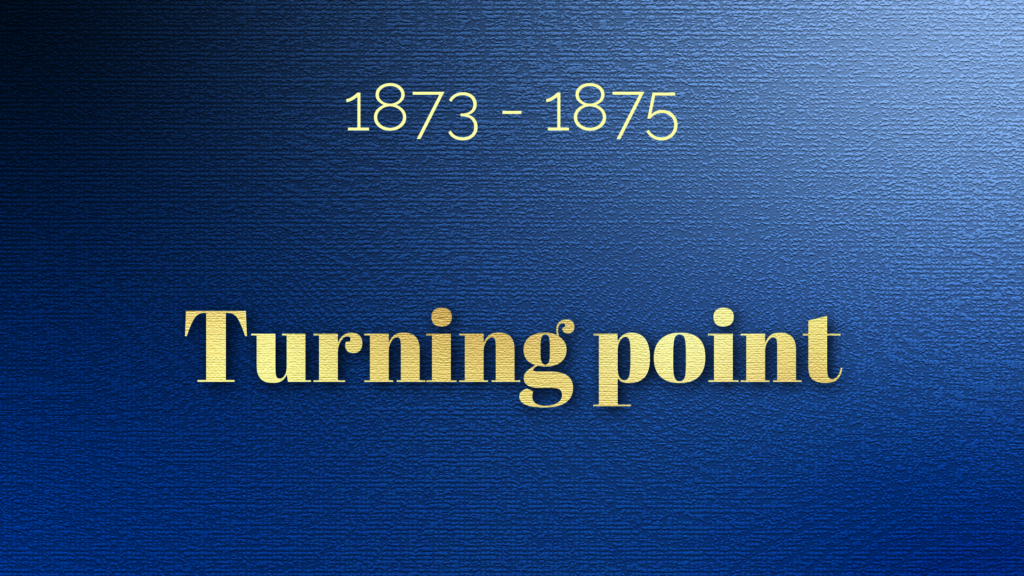

© Violetta Zein.
In the life of Bahá'u'lláh, periods of undeniable glory and majesty always followed devastating crises. The first phase of Bahá'u'lláh’s Proclamation began mere weeks after the final act in the Most Great Separation. The second phase of Bahá'u'lláh’s Proclamation took place a year after Bahá'u'lláh’s incarceration in the Most Great Prison. A period of relative freedom and the arrival of Bahá'í pilgrims was ushered in five months after the martyrdom of Mírzá Mihdí, and Bahá'u'lláh revealed the Kitáb-i-Aqdas, the Most Holy Book of the Bahá'í Dispensation, 18 months after the murder of the three Azalís.
The infographic above is a testament to these periods of glory and majesty in Bahá'u'lláh’s life until the present moment in His life, a moment that precedes years of splendor in Mazra’ih, Bahjí, and the surrounding countryside of 'Akká, from gardens to Druze villages.
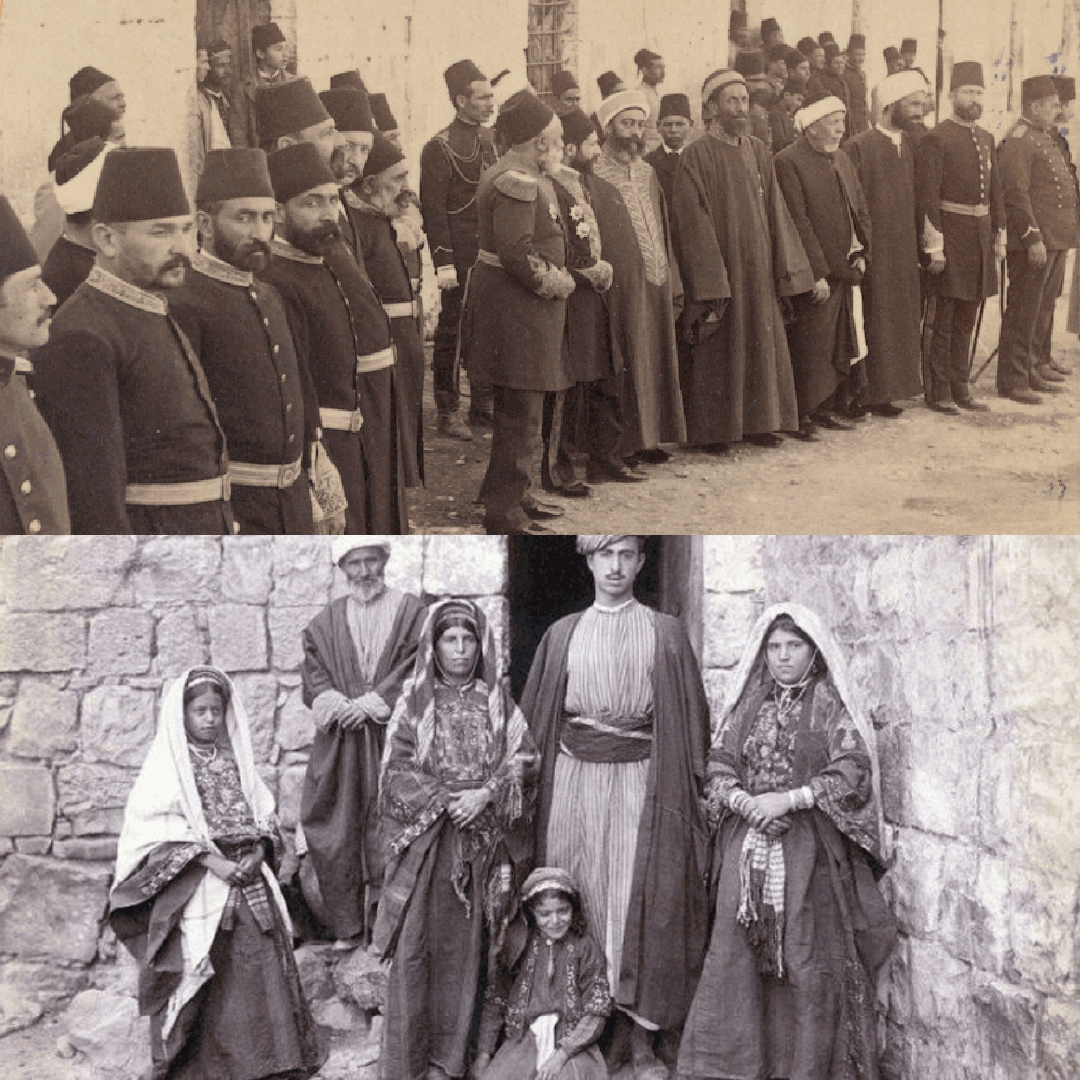
An approximate illustration of the people 'Abdu'l-Bahá dealt with on a daily basis, apart from Bahá'ís. These two images were taken about 25 years after the stories detailed in the section below. The top photograph shows the Mufti, Governor and other high Ottoman officials of Jerusalem, around 1900 Source: J.F. Jarvis, publishers. Library of Congress. The bottom image shows a Palestinian family in Ramallah, around 1900-1910. Source: Days of Palestine.
Bahá'u'lláh, the Holy Family, and most particularly 'Abdu'l-Bahá, had been living for years amidst the population of 'Akká, and not secluded in the Most Great Prison. 'Abdu'l-Bahá’s many interactions with merchants, officers, the poor and destitute, and judges, transformed their attitude to the Faith, by bringing them into close proximity with the Perfect Exemplar. The perfection of 'Abdu'l-Bahá’s character was transformative, and His deeds spoke for themselves. Gradually, the true spirit of Bahá'u'lláh’s teachings slowly penetrated through the indifference and prejudice of the people of 'Akká, and began to have an impact on them.
Most of the Ottoman officials who had prolonged the confinement of the 16 imprisoned Bahá'ís in the Khán-i-Shávirdí were dismissed, and another positive development that would soon take place was the reunion of the last remaining troublemaker in the Azalí community, Badrí-Ján, with her husband Mírzá Yaḥyá in Cyprus.
Shoghi Effendi, God Passes By.
H.M. Balyuzi, Bahá'u'lláh: The King of Glory, page 336.
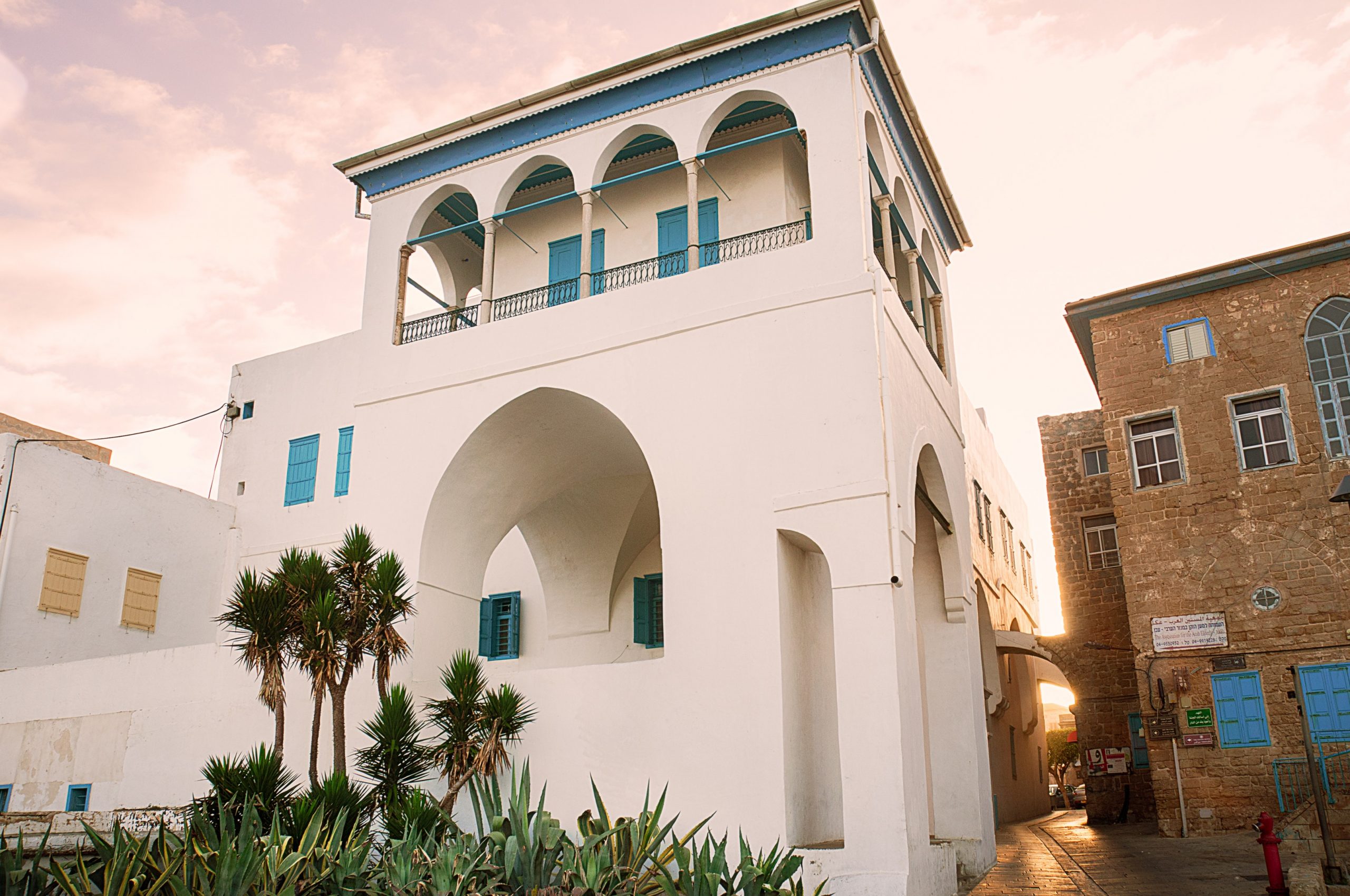
Modern view of the renovated house of 'Abbúd, with Bahá'u'lláh’s beautiful and pleasant balcony clearly visible. Bahá'í Media Bank.
Ilyas 'Abbúd became extremely devoted to Bahá'u'lláh and 'Abdu'l-Bahá. Sometime in late 1873, feeling ill, he left the city and rented his spacious home, to Bahá'u'lláh. The Holy Family moved in quickly, and two doorways, on the upper and lower floors, were opened between the house of ‘Abbúd and the house of ‘Údí Khammár, fusing them back into the single house they had originally been.
'Abdu'l-Bahá took the room Bahá'u'lláh had occupied in the house of ‘Údí Khammár, where He had revealed the Kitáb-i-Aqdas. His growing family with Munírih Khánum lived in what they called “the small house."
The house of ‘Abbúd allowed an increase of activity in the work of the Faith, providing enough room to receive pilgrims and visitors. There, Bahá'u'lláh continued to reveal supplementary ordinances to the Kitáb-i-Aqdas and many important Tablets, taking time to visit the Khán-i-Avámíd and other places in ‘Akká.
With this move, 'Abdu'l-Bahá's services to the people of 'Akká also reached a new level. He rented a separate bírúní, which served as a type of office for him, across Genoa square from the house ‘Údí Khammár. There, from dawn until late in the evening, He counseled and assisted the people of 'Akká, and met, listened, and advised with officials and clerics of the city
H.M. Balyuzi, Bahá'u'lláh: The King of Glory, pages 334-335.
David S. Ruhe, Door of Hope: The Bahá’í Faith in the Holy Land, page 47.
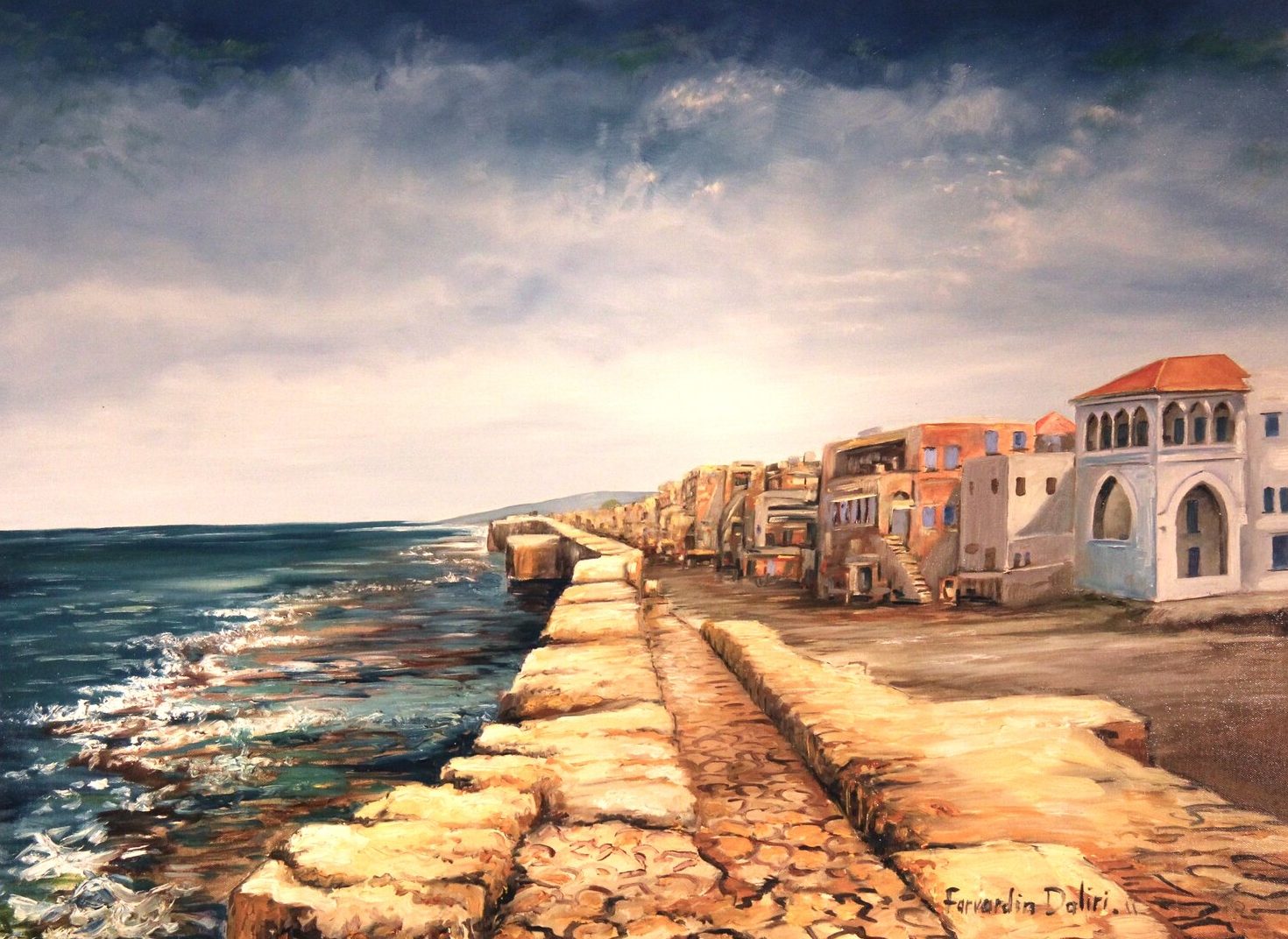
Beautiful painting show what 'Akká would have looked like at the time Bahá'u'lláh moved into the house of 'Abbúd, showing both His balconied room, and the sea view He so enjoyed. © Farvardin Daliri, used with permission. Source: Farvardin Daliri.
Bahá'u'lláh moved into a spacious, many-windowed, high-ceiling corner room in the southwest corner of the top floor, with a wraparound covered balcony and a spectacular view of the Mediterranean Sea. Ásíyih Khánum’s room was next door to Bahá'u'lláh’s. In this room, Bahá'u'lláh continued revealing ordinances to supplement the Kitáb-i-Aqdas and many important Tablets, and would at times visit the Khán-i-Avámíd and other places in ‘Akká.
H.M. Balyuzi, Bahá'u'lláh: The King of Glory, pages 334-335.
David S. Ruhe, Door of Hope: The Bahá’í Faith in the Holy Land, page 47.
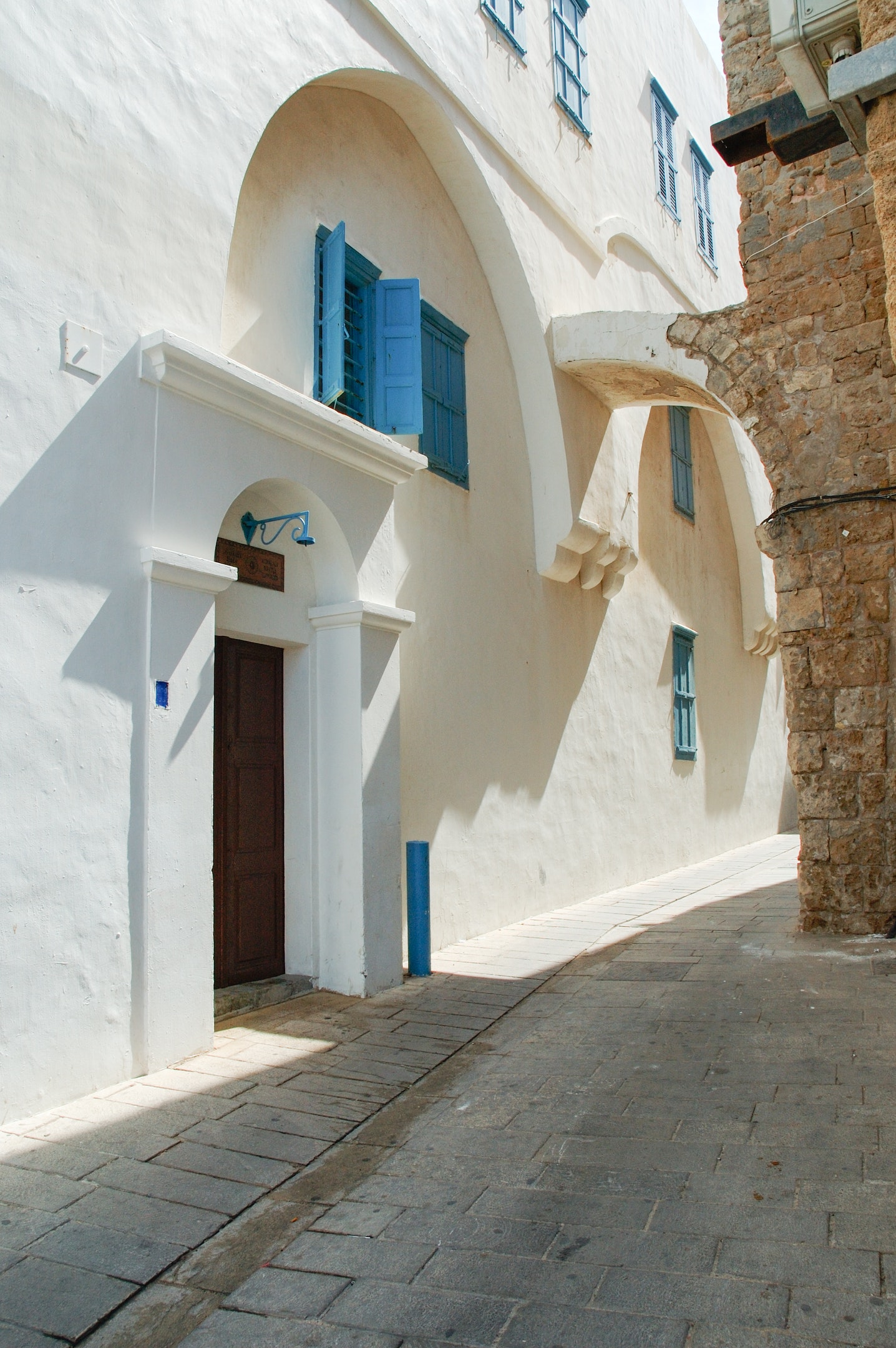
For this section on reverence and honor shown to Bahá'u'lláh, a photograph of the entrance of the house of ‘Abbúd, whose threshold was often crossed by many of the people in the story below. Source: Bahá'í Media Bank. Copyright © Bahá’í International Community.
The Muftí of ‘Akká, Shaykh Maḥmúd, had become a devoted believer, and was the one who had begged for the honor of washing and shrouding the martyred body of Mírzá Mihdí. Enthusiastic about his newfound religion, Shaykh Maḥmúd compiled a list of Islámic traditions relating to the city of ‘Akká.
As the years passed with Bahá'u'lláh residing amongst the people of Ottoman Palestine, highly erudite men, and even ‘ulamás from as far away as Syria, felt compelled to testify to their recognition of Bahá'u'lláh’s rising power and majesty.
‘Azíz Páshá, who had been attached to 'Abdu'l-Bahá while He lived in Adrianople, was now the Governor of the city and made the trip to 'Akká twice for the sole purpose of paying his respects to Bahá'u'lláh, and meeting with 'Abdu'l-Bahá.
By this point in His life, Bahá'u'lláh almost never granted personal interviews, but His influence was widely acknowledged, and the people of ‘Akká openly stated that He alone was responsible for the improved quality of the climate and water of the city, and that their lives had improved with Bahá'u'lláh’s continued presence among them. Those who had berated Him now referred to Him as “august leader,” or “his highness.”
Shoghi Effendi, God Passes By.
H.M. Balyuzi, Bahá'u'lláh: The King of Glory, pages 333-338.
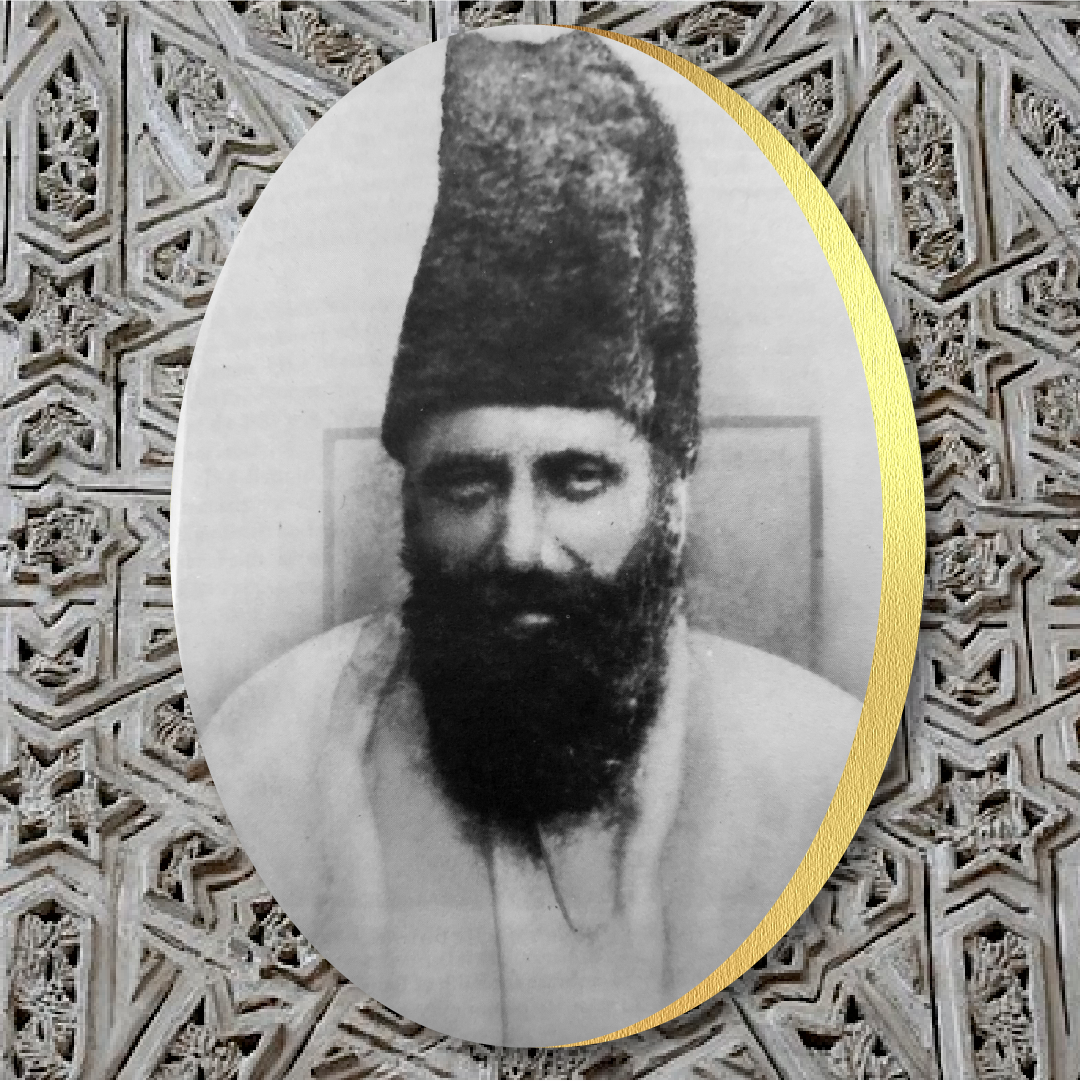
Ḥakím Masíḥ, the first Bahá'í converted from the Jewish community of Persia. Source: Adib Taherzadeh, The Revelation of Bahá'u'lláh Volume 3: ‘Akká, the Early Years 1868-1877, page 268, available online here.
The three main religious minorities in the majority Sh’íah Persia of the 19th century were the Zoroastrians, the Jews and the Christians, but the Persian Jews and Zoroastrians were heavily persecuted. At a time when most people considered the Bahá'í Faith related to Islám in some way, the conversion of Persian Jews and Zoroastrians to the Bahá'í Faith was a noteworthy event.
The first Persian Jew to become a Bahá'í was named Ḥakím Masíḥ, a highly-skilled physician appointed to the court of Muḥammad Sháh. Ḥakím Masíḥ was the only physician willing to treat the son of Ismu'lláhu'l-Aṣdaq, a Bahá'í imprisoned in the Siyáh-Chál.
While treating his son, Ḥakím Masíḥ spent many hours at Ismu'lláhu'l-Aṣdaq’s feet, learning all he could about the Bahá'í Faith, and soon became a believer, convinced of the truth of Bahá'u'lláh’s Claim.
When Bahá'u'lláh learned of Ḥakím Masíḥ’s conversion, He revealed several exalted Tablets in his honour. Through Ḥakím Masíḥ’s conversion, other Persian Jews entered the Faith and Bahá'u'lláh revealed many Tablets in honour of Persian believers of Jewish background.
Adib Taherzadeh, The Revelation of Bahá'u'lláh Volume 3: ‘Akká, the Early Years 1868-1877, pages 253-274.
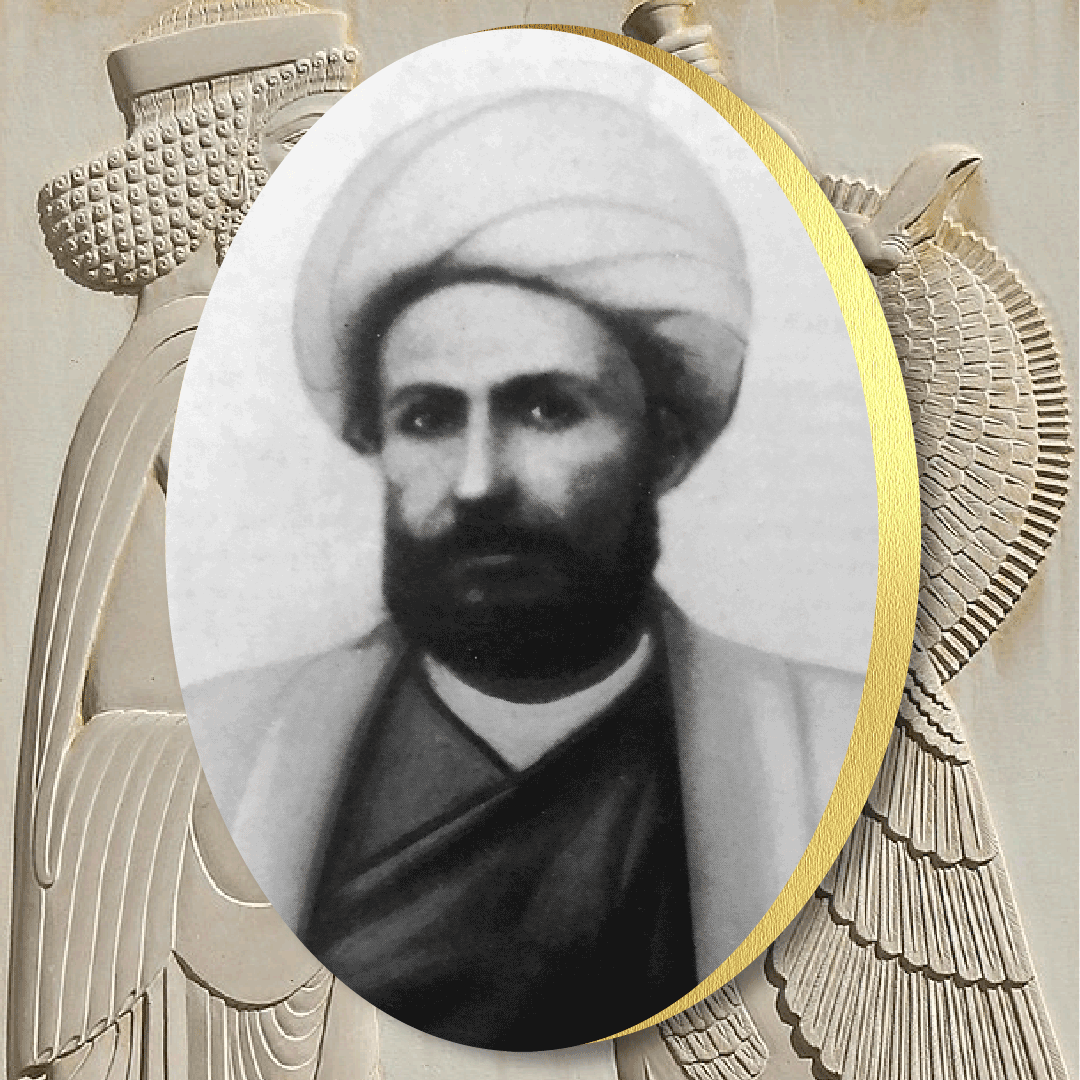
Kay-Khusraw-i-Khudádád, believed to be the first to embrace the Bahá'í Faith from the Zoroastrian community. Source: Adib Taherzadeh, The Revelation of Bahá'u'lláh Volume 3: ‘Akká, the Early Years 1868-1877, page 269, available online here.
Kay-Khusraw-i-Khudádád was originally from Yazd and living in Káshán as a merchant. He was a well-known member of the Zoroastrian community, a member of a “Council of Zoroastrians.”
While in Káshán, Kay-Khusraw-i-Khudádád saw a Bahá'í tortured and executed, a traumatic scene which prompted him to investigate the Faith, which he soon embraced. Most early Bahá'ís from the Zoroastrian community, declared as a result of his teaching work.
Bahá'u'lláh revealed many Tablets in Pure Persian (containing no words of Arabic origin) for Bahá'ís who converted from Zoroastrianism or Zoroastrians who were friends of the Faith, including the famous Lawḥ-i-Mánikchí Ṣáḥib, and the Lawḥ-i- Haft Pursish (Tablet of Seven Questions).
To listen to one of the most celebrated excerpts of the Lawḥ-i-Mánikchí Ṣáḥib recited in its original Pure Persian with English subtitles, click on the graphic below, and to learn more about Pure Persian, read the post on our website.
Adib Taherzadeh, The Revelation of Bahá'u'lláh Volume 3: ‘Akká, the Early Years 1868-1877, pages 253-274.
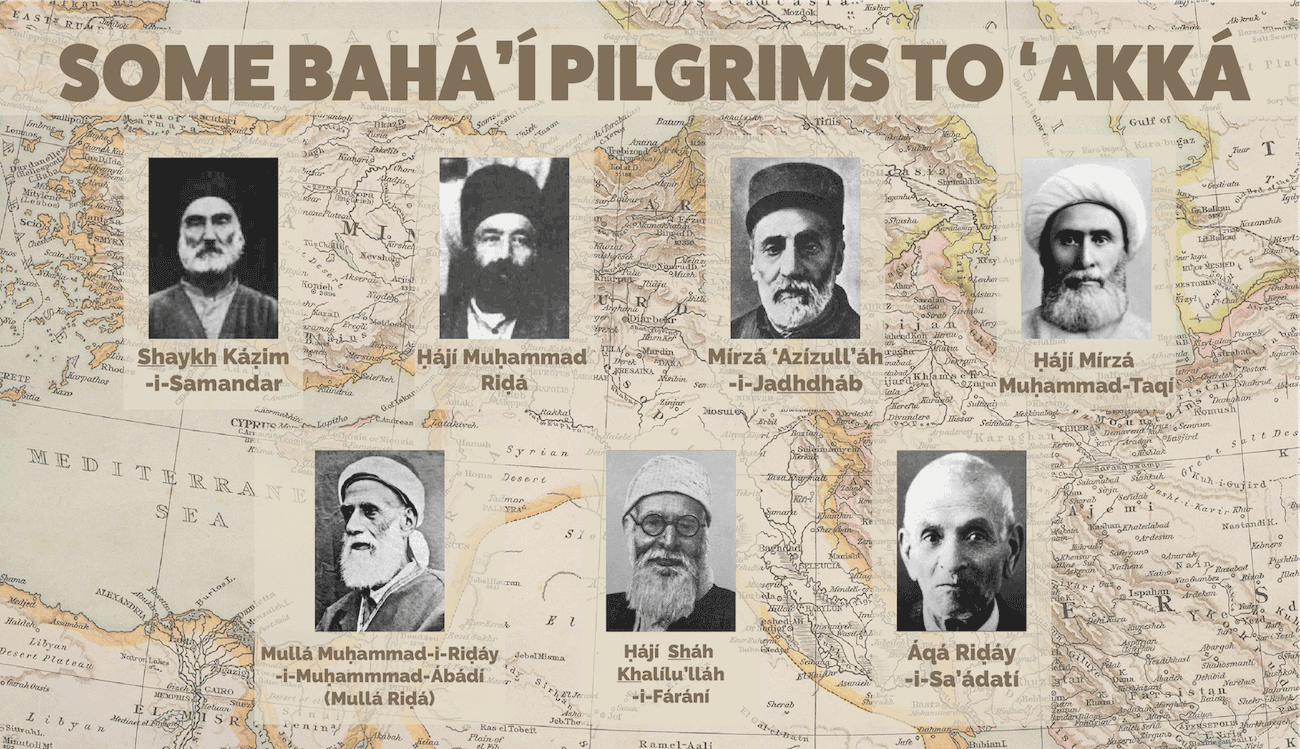
Most of our information about the experience of entering Bahá'u'lláh’s presence come from early pilgrims to ‘Akká. In the graphic above are portrayed seven early Bahá'ís who came on pilgrimage to the Holy Land and met Bahá'u'lláh, further information about each is available at the link provided: Shaykh Káẓim-i-Samandar; Ḥájí Muḥammad Riḍá, Mírzá ‘Azízulláh-i-Jadhdháb; Ḥájí Mírzá Muḥammad-Taqí; Mullá Muḥammad-i-Riḍáy-i-Muḥammad-Ábádí (Mullá Riḍá); Ḥájí Sháh, Adib Taherzadeh, The Revelation of Bahá'u'lláh Volume 3: ‘Akká, the Early Years 1868-1877, page 162; Khalílu’lláh-i-Fárání; Áqá Riḍáy-i-Sa’ádatí, Adib Taherzadeh, The Revelation of Bahá'u'lláh Volume 3: ‘Akká, the Early Years 1868-1877, page 174.
By the mid-1870s, thanks in part to Aḥmad Big Tafwíq who had allowed larger numbers of pilgrims to enter 'Akká, more and more Bahá'í pilgrims came to the Holy Land and prostrated themselves at Bahá'u'lláh’s feet. The institution of pilgrimage was born, and this section aims to paint a portrait of the act of entering Bahá'u'lláh’s presence for those early pilgrims.
Most pilgrims described entering Bahá'u'lláh’s presence and being overpowered by His transcendental majesty, often the only aspect of being near Him any could recall. Some felt as though they were in the presence of the Sun of Glory, the Manifestation of grandeur and majesty itself, the King of Kings, the definition of poise and dignity.
Bahá'u'lláh invariably welcomed pilgrims with His loving kindness and showered them with His care and compassion, making humorous remarks to put them at ease, but most pilgrims found themselves unable to utter more than ten words, some rendered mute, while others stuttered, whether they were eminently learned or illiterate, faithful or devious, wise or foolish.
Adib Taherzadeh, The Revelation of Bahá'u'lláh Volume 3: ‘Akká, the Early Years 1868-1877, pages 248-249.
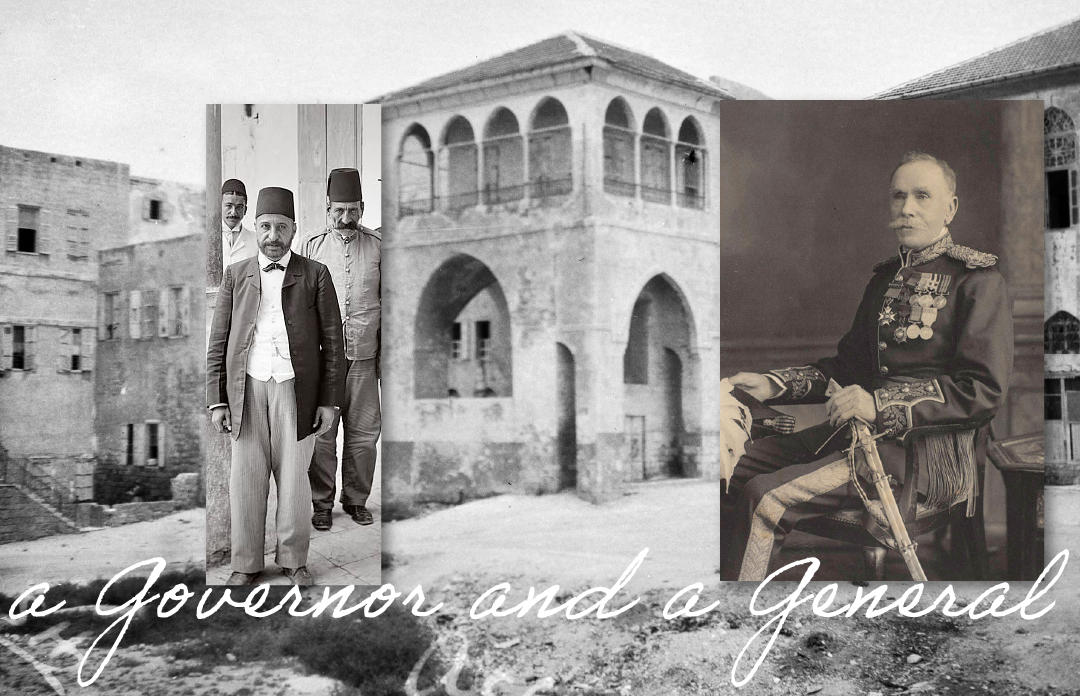
In this section, where an Ottoman Governor and a European meet Bahá'u'lláh, and are overwhelmed by His presence, is a symbolic illustration of the two men, personified by an Ottoman Governor of Nazareth (Library of Congress) and a Major General of the British Army, (The National Army Museum), on either side of the house of ‘Abbúd, where they encountered Bahá'u'lláh (Bahá'í Media Bank, Copyright © Bahá’í International Community)
It was exceedingly rare for Bahá'u'lláh to grant audiences to people who were not Bahá'ís, and as the years went on, Bahá'u'lláh was less and less inclined to give audiences of any kind. A European general and the Governor of ‘Akká were granted a rare private audience with Bahá'u'lláh, and the general was so awed that he “remained kneeling on the ground near the door.” Bahá'u'lláh indicated to the men where they could sit, but the two men were unable to rise, and remained absolutely silent during the audience. After about ten minutes, they requested permission to leave.
Adib Taherzadeh, The Revelation of Bahá'u'lláh Volume 3: ‘Akká, the Early Years 1868-1877, pages 249-250.
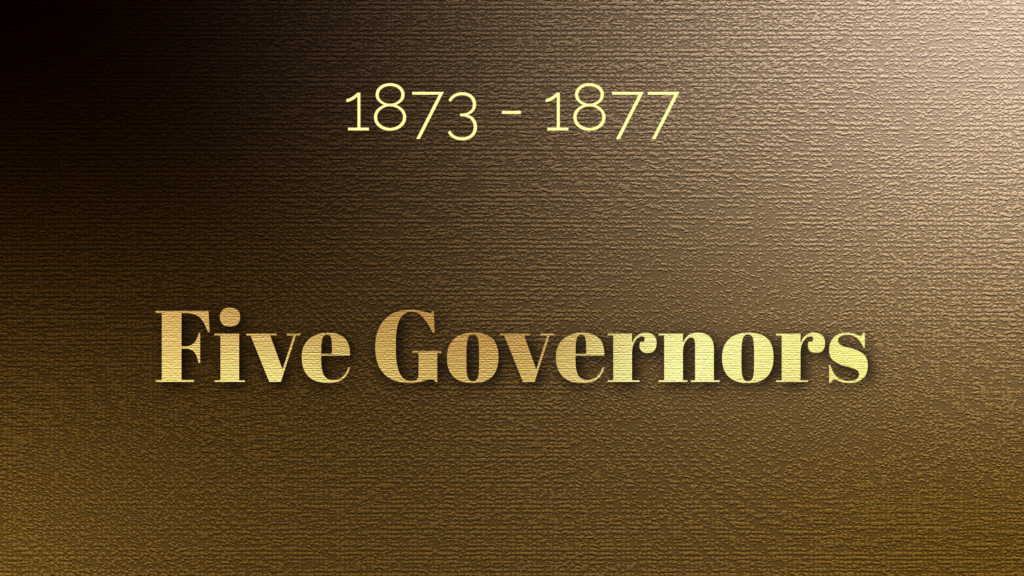
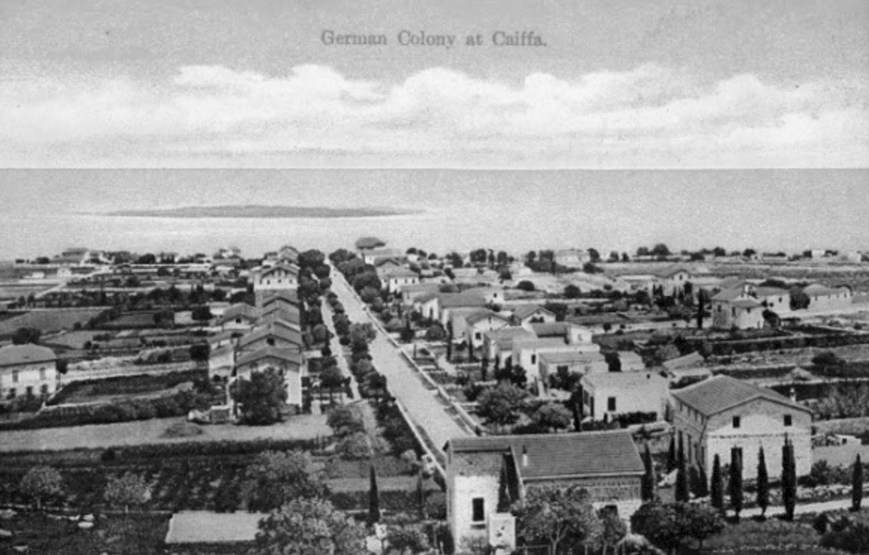
Vintage postcard showing the German Templer colony in Haifa, with the straight, wide avenue, and the handsome, well-built houses bordering it.
David Hardegg met 'Abdu'l-Bahá in 'Akká on at least two occasions, on 2 June 1871 and in October 1872. The interview he had desired with Bahá'u'lláh never materialized, because Bahá'u'lláh was at the time in seclusion following the murder of the three Azalís seven months prior. Sometime after this, Bahá'u'lláh revealed, in His words “a sublime and most-holy Tablet” for him.
This Tablet, in response to a letter from David Hardegg is called the Lawḥ-i-Hirtík (Tablet to David Hardegg). Bahá'u'lláh states that in that Tablet “was established that which enableth every righteous one to attain salvation and every wayfarer to reach the goal,” lamenting that Hardegg “did not attain even a drop of the ocean of its significances." Tragically, in Bahá'u'lláh’s eyes the German Templers were people who had failed to understand or respond to His message, though Bahá'ís and 'Abdu'l-Bahá maintained cordial relationships with them, and He Himself had contact with them on His three subsequent visits to Haifa.
Bahá'u'lláh opens the Lawḥ-i-Hirtík stating “Thy sealed letter arrived before the Wronged One. Therefrom did We catch a fragrance of thy sincerity towards God,” and calls David Hardegg to meditate on the Word of God, praying God will assist him to perceive the truths hidden in this Tablet as the first disciples of Jesus Christ recognized the truth. Bahá'u'lláh speaks to Hardegg about the divines at the time of Jesus Christ who denied Him while a fisherman responded to His call. Bahá'u'lláh does not explicitly speak to His own station, but expounds upon that of Jesus Christ, saying “He [Jesus] verily, is the Light of Oneness among mankind and the sign of the Ancient of Days among the peoples.”
It is clear from one of the last heartbreaking verses of this Tablet that Bahá'u'lláh was still experiencing the aftermath of the Azalí murders: “This Bird is ensnared betwixt the talons of oppression and hypocrisy, and seest no nest wherein he might dwell nor any retreat unto which he might wing his way. In such a state doth He summon mankind unto everlasting life.”
Partial Inventory ID: BH01217
Commentary and provisional translation on the Lawḥ-i-Hirtík by Stephen Lambden at Huyrqalya: PDF Download Link: Lawḥ-i-Hirtík (Tablet to David Hardegg).
Adib Taherzadeh, The Revelation of Bahá'u'lláh Volume 3: ‘Akká, the Early Years 1868-1877, pages 28-31.
DATE
The Tablet was revealed after David Hardegg’s attempt to visit Bahá'u'lláh in October 1872, and while Bahá'u'lláh was residing in the house of ‘Údí Khammár, which He left in late 1873.
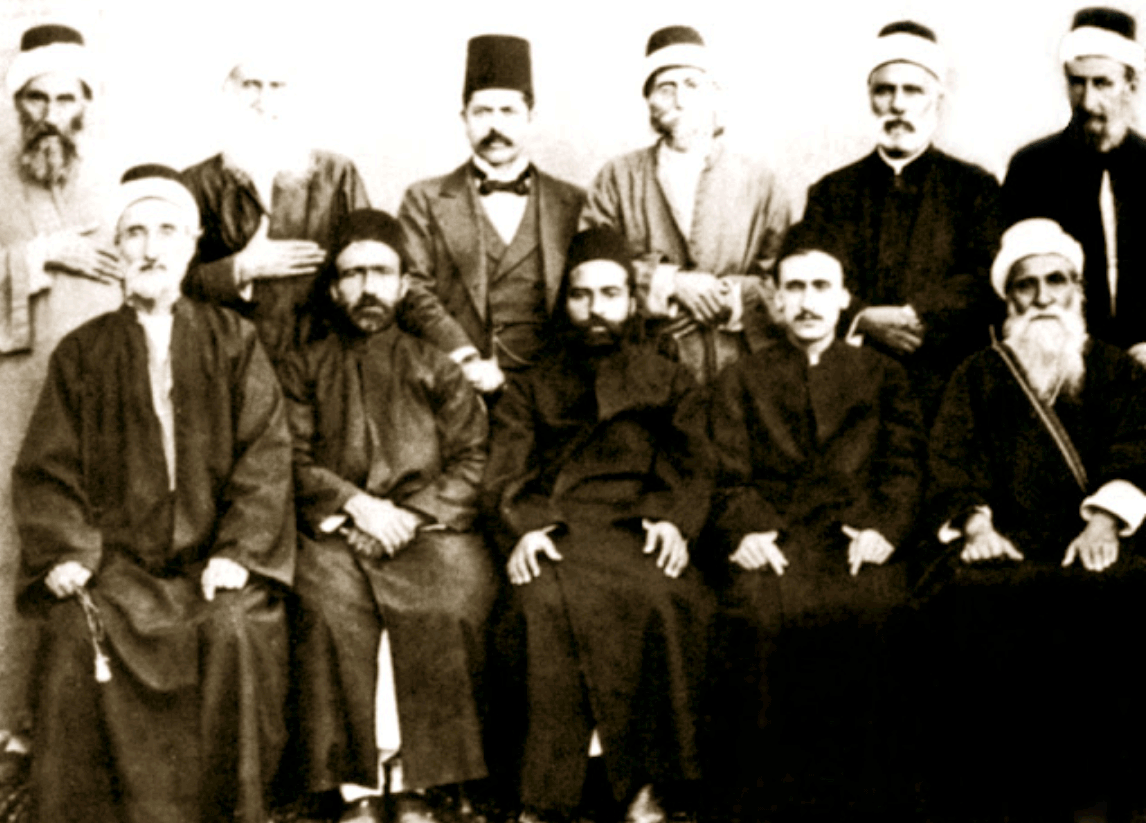
In an homage to Governor Aḥmad Big Tafwíq allowing the increasing influx of pilgrims arriving into ‘Akká is this photograph of eminent Bahá'ís at the time of Bahá'u'lláh: Standing from left to right: Ḥájí Mírzá Ḥaydar-‘Alí, Jamál Effendí, Mírzá Abu'l-Qásim-i-Iṣfahání, Mishkín-Qalam, Muḥammad-Riḍáy-i-Shírází Qannad, Mírzá Jaʻfar. Seated from left to right: Mírzá Maḥmúd-i-Káshání, Mírzá Abu'r-Ra’úf, Mírzá Muḥṣin Afnán, Mírzá Hádí Afnán (the father of Shoghi Effendi), and Zaynu'l-Muqarrabín. Source: Worldwide Community of Baha'u'llah.
The arrival of Aḥmad Big Tafwíq, the kind and fair new Governor, greatly contributed to the widespread change in attitude towards Bahá'u'lláh and the Bahá'ís. Aḥmad Big Tafwíq became immensely fond of Bahá'u'lláh and 'Abdu'l-Bahá, and eventually sent his son to the Master for instruction. In contradiction to the text of the Sulṭán’s edict, the Governor allowed a greater influx of pilgrims, including the very devout Mullá Ṣádiq-i-Khurásání and the father of Badí, both survivors of the struggle of Ṭabarsí.
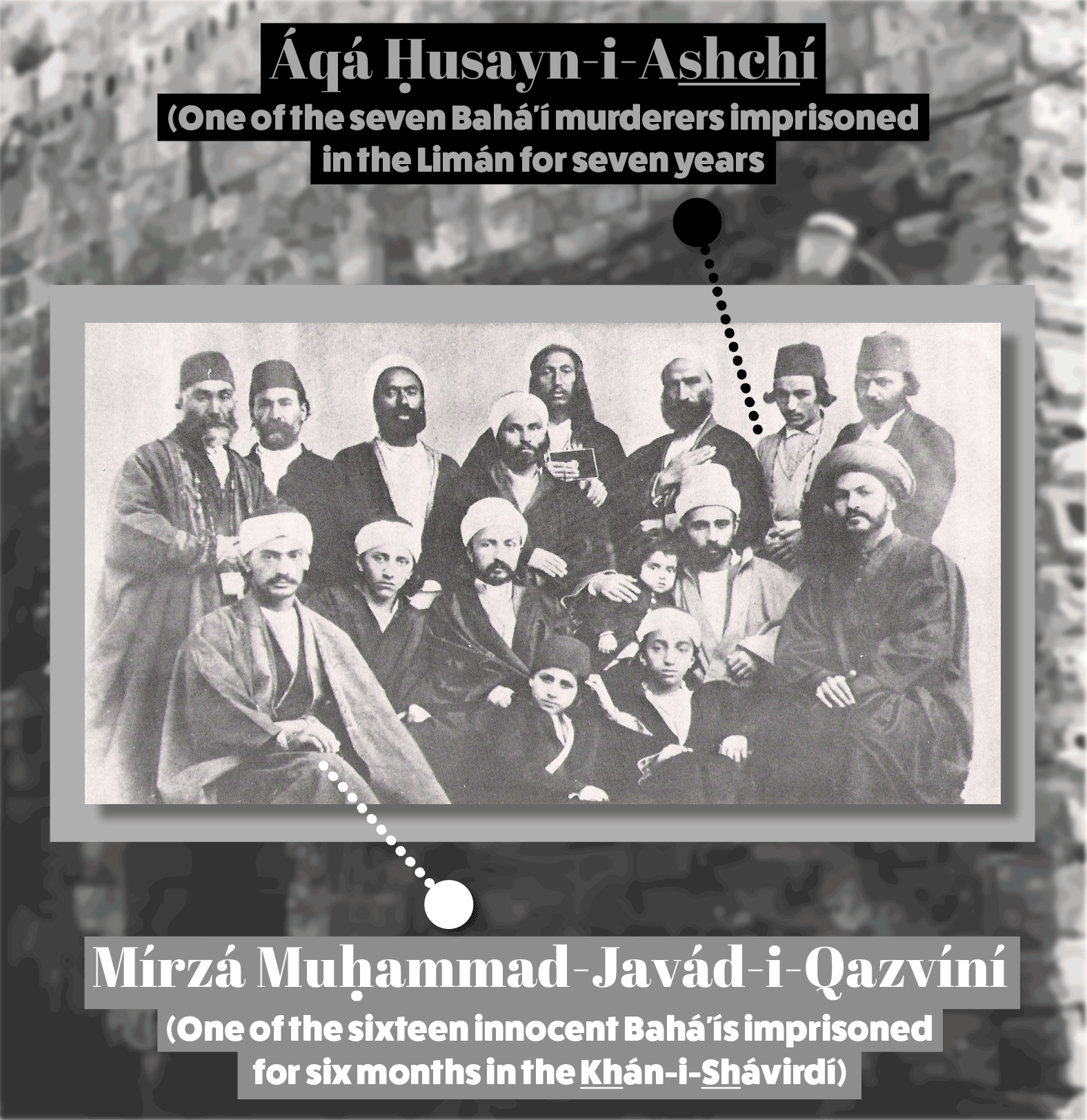
There are two photographs of the early believers in Adrianople taken in 1868, one without 'Abdu'l-Bahá present, and this one, with 'Abdu'l-Bahá and Mírzá Mihdí. In this photograph, standing in the back, second from the extreme right is, Áqá Ḥusayn-i-Ashchí, one of the seven murders of the three Azalís and imprisoned for seven years in the Limán, but given permission to continue serving the Holy Family in the mornings. And seated, first from the left in white turban and light-colored ‘ábá is Mírzá Muḥammad-Javád-i-Qazvíní, one of the sixteen innocent Bahá'ís imprisoned in the Khán-i-Shávirdí for six months. The background of the graphic, is the blurred wall of the Khán-i-Shávirdí.
After several intercessions by Ilyás ‘Abbúd on his behalf, Aḥmad Big Tafwíq entered the presence of Bahá'u'lláh one day in the late afternoon. The Governor refused Ilyás ‘Abbúd’s offer of a hookah, water pipe, not wanting to smoke in front of Bahá'u'lláh. Bahá'u'lláh requested Aḥmad Big Tafwíq review the cases of the detained Bahá'ís, the seven imprisoned on charges of murder, and the 16 innocent believers detained in the Khán-i-Shávirdí.
The artillerymen of the caravanserai had finally become fed up with the authorities’ indecisiveness regarding the innocent Bahá'í prisoners. They went to the Governorate with a few of the Bahá'ís and said: “We are soldiers, not gaolers. If these men are criminals then take them away and put them in prison. If not, let them go in peace to their homes. We refuse to act any longer as their keepers.” Past Governors of ‘Akká had customarily asked for 300 pounds per person before releasing anyone from the Khán-i-Shávirdí, so it was astounding when Aḥmad Big Tafwíq allowed all 16 Bahá'ís detainees to return to their homes without levying a tax. The seven Bahá'ís guilty of murder, however, served out their sentence.
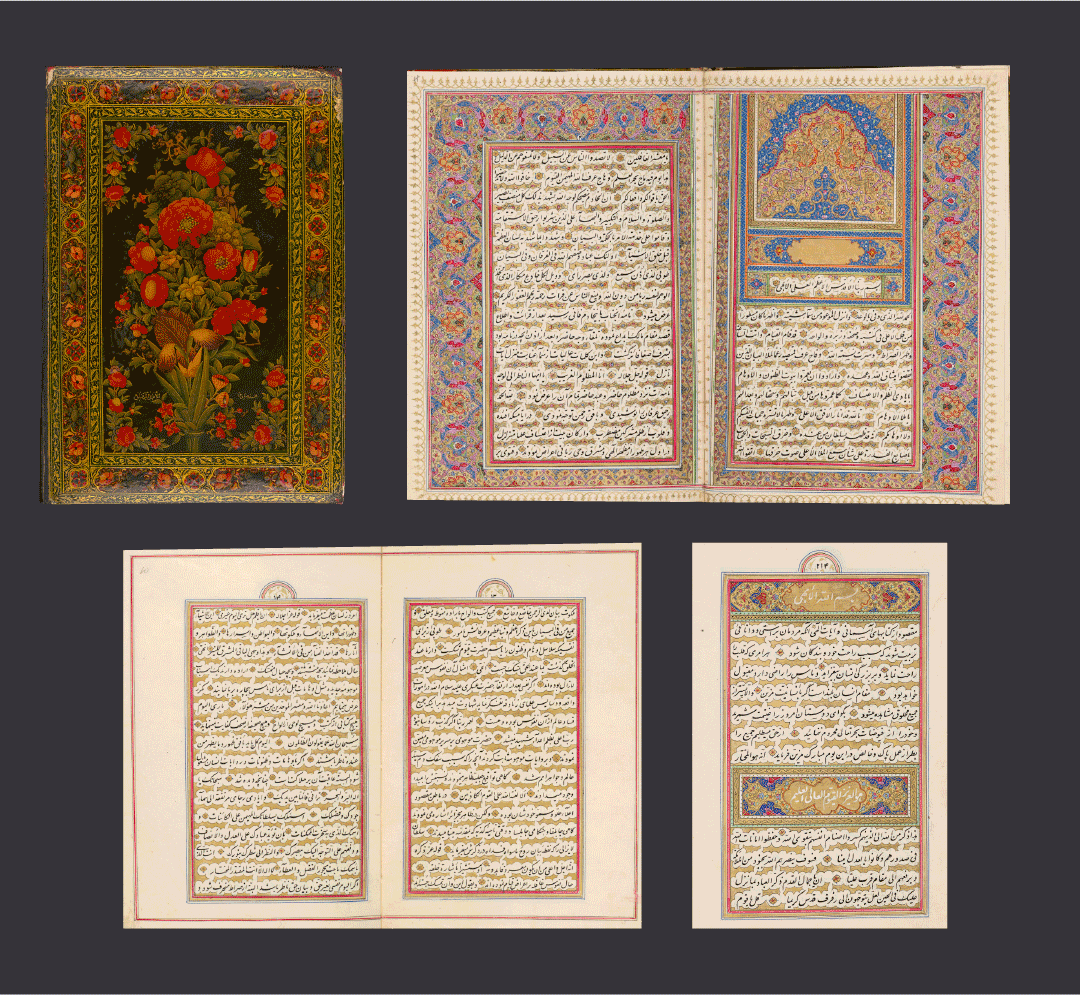
As an illustration of Aḥmad Big Tawfíq’s love for Bahá'u'lláh and desire to have all his Writings illuminated, a copy of the Majmú‘iy-i-Mubárakih (Compilation of Blessed Writings), 26 of Bahá'u'lláh’s most important works, in an exceptionally decorated volume bound in a traditional lacquer binding (first image top left), illuminated by the calligrapher was Mírzá ‘Alí-Akbar Mílání Muḥibbu's-Sulṭán, and presented to the British Museum by Hippolyte Dreyfus-Barney on behalf of ‘Abdu’l-Bahá. Top right and bottom left: Part of an untranslated Tablet (Partial Inventory ID: BH00008), Bottom right: Top of page: Gleanings from the Writings of Bahá'u'lláh, N° CI, Bottom of page: Untranslated Tablet (Partial Inventory ID: BH00782). Many thanks to Adib Masumian for correcting the transliteration and identifying all the Tablets. Source: British Library.
Aḥmad Big Tafwíq became so devoted to 'Abdu'l-Bahá that he refused to enter His presence without first removing his shoes, out of respect.
Badrí-Ján, the estranged wife of Mírzá Yaḥyá, went to Aḥmad Big Tafwíq and accused Bahá'u'lláh of having ordered the murder of the three Azalís, trying to discredit Him completely in the eyes of the new Governor. As definite proof of her accusations, she gave him a copy of the Súriy-i-Mulúk (Surah of the Kings) and other Tablets, a gift which backfired completely.
Access to Bahá'u'lláh’s Writings further kindled Aḥmad Big Tafwíq’s devotion, and, according to Bahá'u'lláh, the Governor told 'Abdu'l-Bahá they had convinced him of the truth of the Bahá'í Faith. Aḥmad Big Tafwíq would eventually order all the Writings of Bahá'u'lláh in his possession to be transcribed in the best calligraphic style.
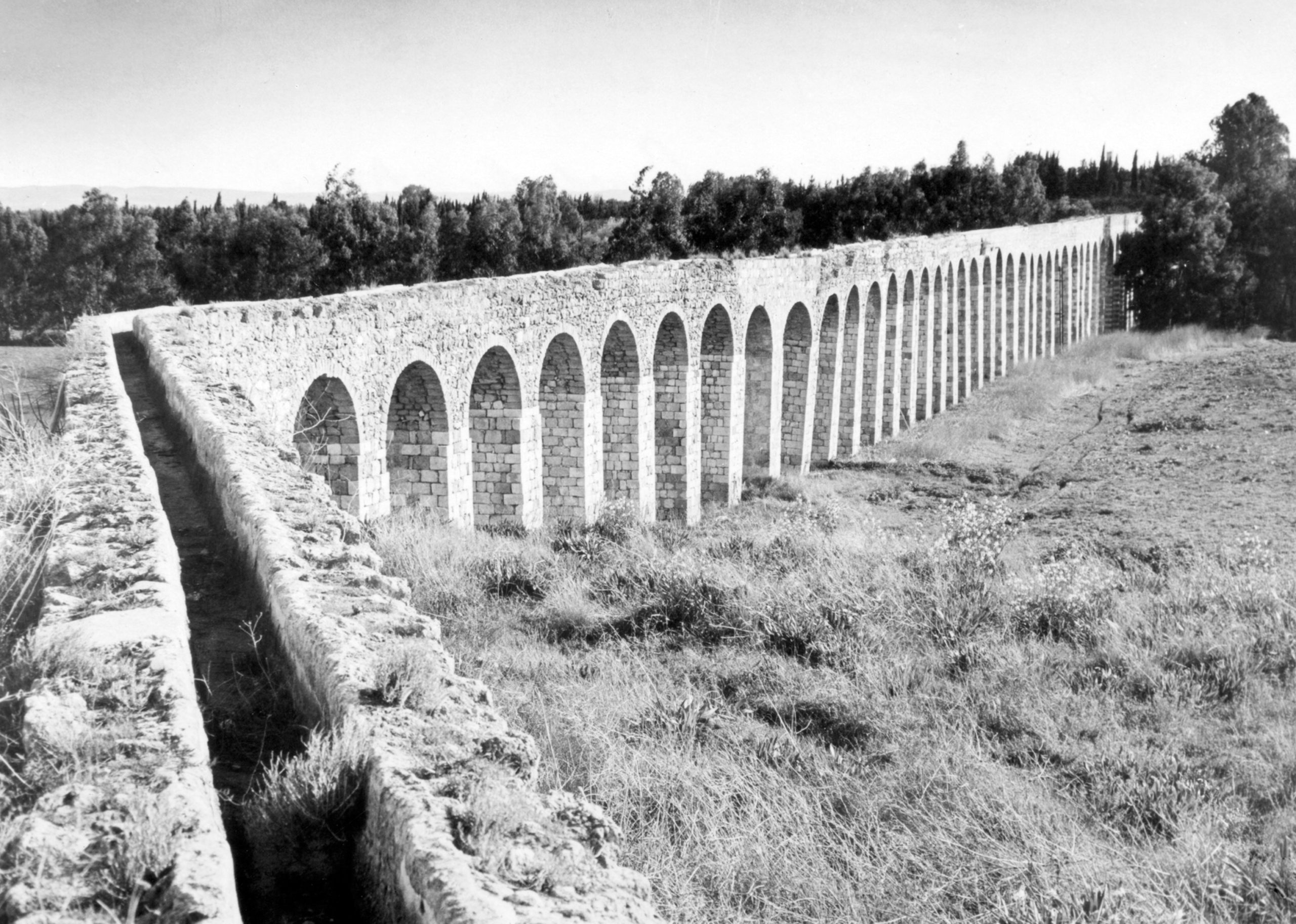
1968 photograph showing the aqueduct, built in 1815 to carry water to ‘Akká. This aqueduct replaced the previous one, which had been destroyed by Napoleon. By the time of Bahá’u’lláh's arrival, it had fallen into disrepair, and this is the subject of the story below, where Aḥmad Big Tafwíq promises to repair the aqueduct for Bahá'u'lláh. Source: Bahá'í Media Bank. Copyright © Bahá’í International Community.
Áqá 'Aẓím-i-Tafrishí, the water-carrier for the Bahá'í exiles, used to make many exhausting trips to a well half-an-hour’s walking distance to ‘Akká to bring better-tasting water for the Bahá'í exiles. One day, Bahá'u'lláh told Áqá ‘Aẓím that God would raise up a person to repair the Aqueduct.
In one of His audiences with Bahá'u'lláh, Aḥmad Big Tafwíq begged to be allowed to render Him some service, and Bahá'u'lláh suggested he begin repairing the aqueduct, the only source of fresh water in 'Akká, which had fallen into disrepair over the last thirty years. Aḥmad Big Tafwíq immediately started the work on the aqueduct, though it would not be completed until three Governors later, under the governorship of Fayḍí Páshá, but Bahá'u'lláh’s prophecy to Áqá ‘Aẓím had come to pass.
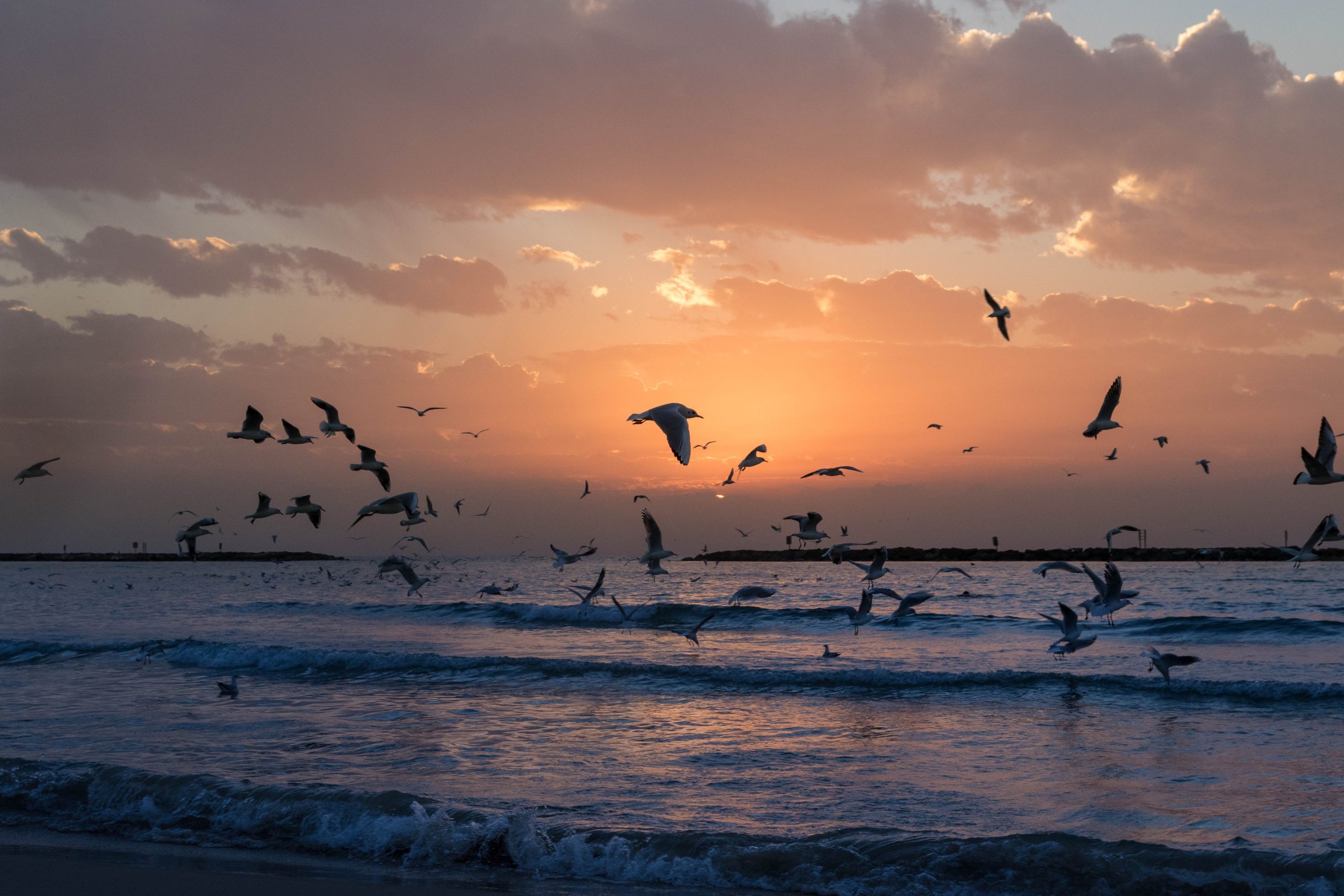
The Mediterranean Sea off the coast of Israel (in Tel Aviv, south of 'Akká, but it's symbolic), in memory of the long farewells of that kind Governor, Aḥmad Big Tafwíq. Photo by Adam Grabek on Pexels.
By the time Aḥmad Big Tafwíq left the Governorship of 'Akká in 1875, rumors circulated around the city that his favorite counselors were the Bahá'ís. Rumors such as these explain why Bahá'u'lláh and 'Abdu'l-Bahá were careful not to bestow special attention on him, when he was Governor.
However, when the two years of Aḥmad Big Tafwíq’s governorship had elapsed, They expressed their affection to him freely. The Holy Family offered Aḥmad Big Tafwíq a. legendary farewell, showering him with such warm and generous hospitality that the people of ‘Akká were astonished. 'Abdu'l-Bahá set up a tent by the Mediterranean Sea near the house of ‘Abbúd, where the Governor could receive His friends. The Holy Family provided lunches and dinners under that tent until the day he left, and every day, Aḥmad Big Tafwíq continually expressed his sorrow at his coming separation from Bahá'u'lláh and 'Abdu'l-Bahá.
Before leaving, Aḥmad Big Tafwíq requested an illuminated copy of the Greatest Name, which Bahá'u'lláh’s son Mírzá Muḥammad ‘Alí, a gifted calligrapher, penned for him.
SOURCES FOR THE PREVIOUS FIVE SECTIONS ON AḤMAD BIG TAFWÍQ
Shoghi Effendi, God Passes By.
H.M. Balyuzi, Bahá'u'lláh: The King of Glory, pages 333-337.
Adib Taherzadeh, The Revelation of Bahá'u'lláh Volume 3: ‘Akká, the Early Years 1868-1877, pages 24-25.
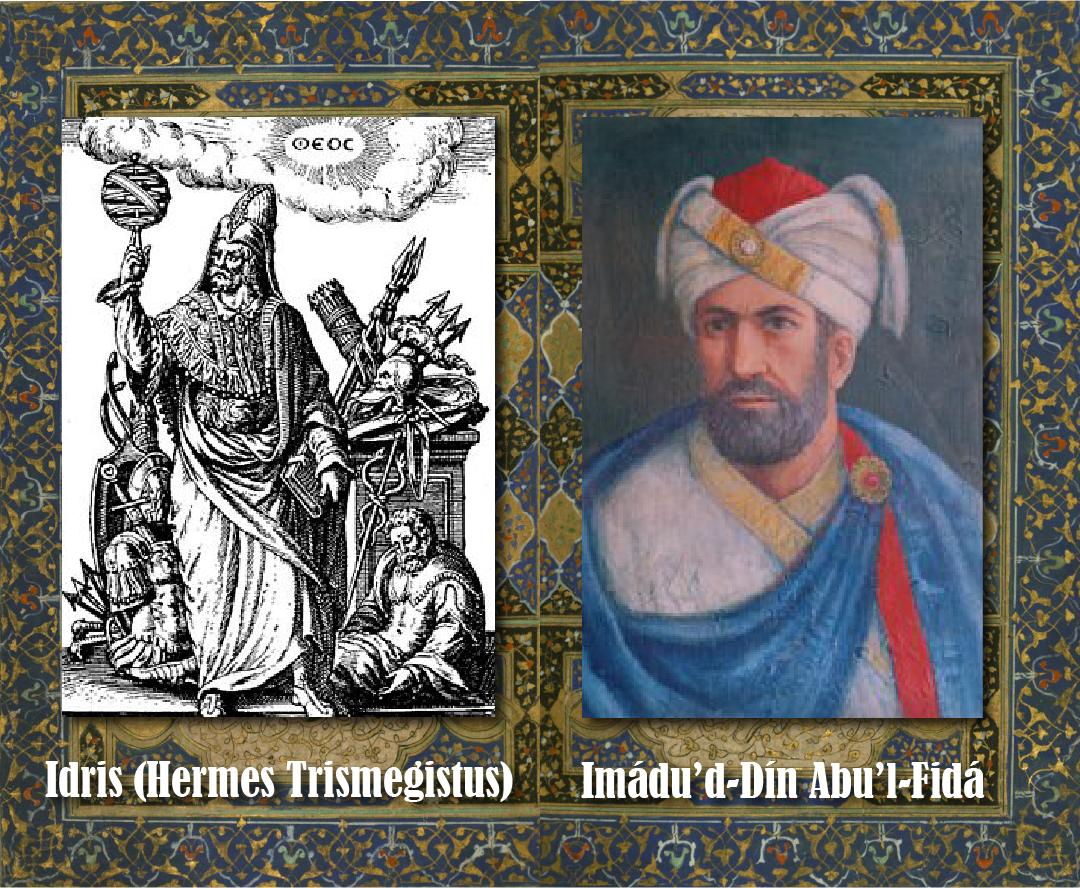
An illustration of note 3 and note 4 of the Lawḥ-i-Ḥikmat on Bahá'í Reference Library, where Bahá'u'lláh’s discussion of Hermetic philosophy and Idrís (Hermes Hermes Trismegistus), and Bahá'u'lláh’s references to the work of Muslim historians Abu’l-Fatḥ-i-Sháhristání and Imádu’d-Dín Abu’l-Fidá. Black and white engraving of Idrís (Source), Painting of Imádu’d-Dín Abu’l-Fidá (Source), on a background created from the double-page illuminated frontispiece from Walters manuscript W.605 by Abu’l-Fatḥ-i-Sháhristání, (Source), all from Wikimedia Commons.
Nabíl-i-Akbar arrived in 'Akká in 1873 – 1874, and on this pilgrimage, Bahá'u'lláh revealed an important Tablet in his honor called the Lawḥ-i-Ḥikmat (Tablet of Wisdom).
The Lawḥ-i- Ḥikmat (Tablet of Wisdom) stands out for its philosophical terminology and references to ancient Greek philosophers. In it, Bahá'u'lláh gives meaningful explanations regarding the origin of creation and the influence of the Word of God, yet mourns the condition of the world and its people.
In the Lawḥ-i-Ḥikmat, Bahá'u'lláh offers teachings for the spiritualization of humanity, and the ushering in of a new age in which acquiring spiritual and divine virtues will be every person’s aim in life.
Perhaps one of Bahá'u'lláh’s most celebrated exhortations is from Lawḥ-i-Ḥikmat: “Let each morn be better than its eve and each morrow richer than its yesterday. Man’s merit lieth in service and virtue and not in the pageantry of wealth and riches. Take heed that your words be purged from idle fancies and worldly desires and your deeds be cleansed from craftiness and suspicion.”
Partial Inventory ID: BH00223
Bahá'u'lláh, Lawḥ-i-Ḥikmat (Tablet of Wisdom).
Adib Taherzadeh, The Revelation of Bahá'u'lláh Volume 4: Mazra’ih and Bahjí 1877-1892, pages 33-49.
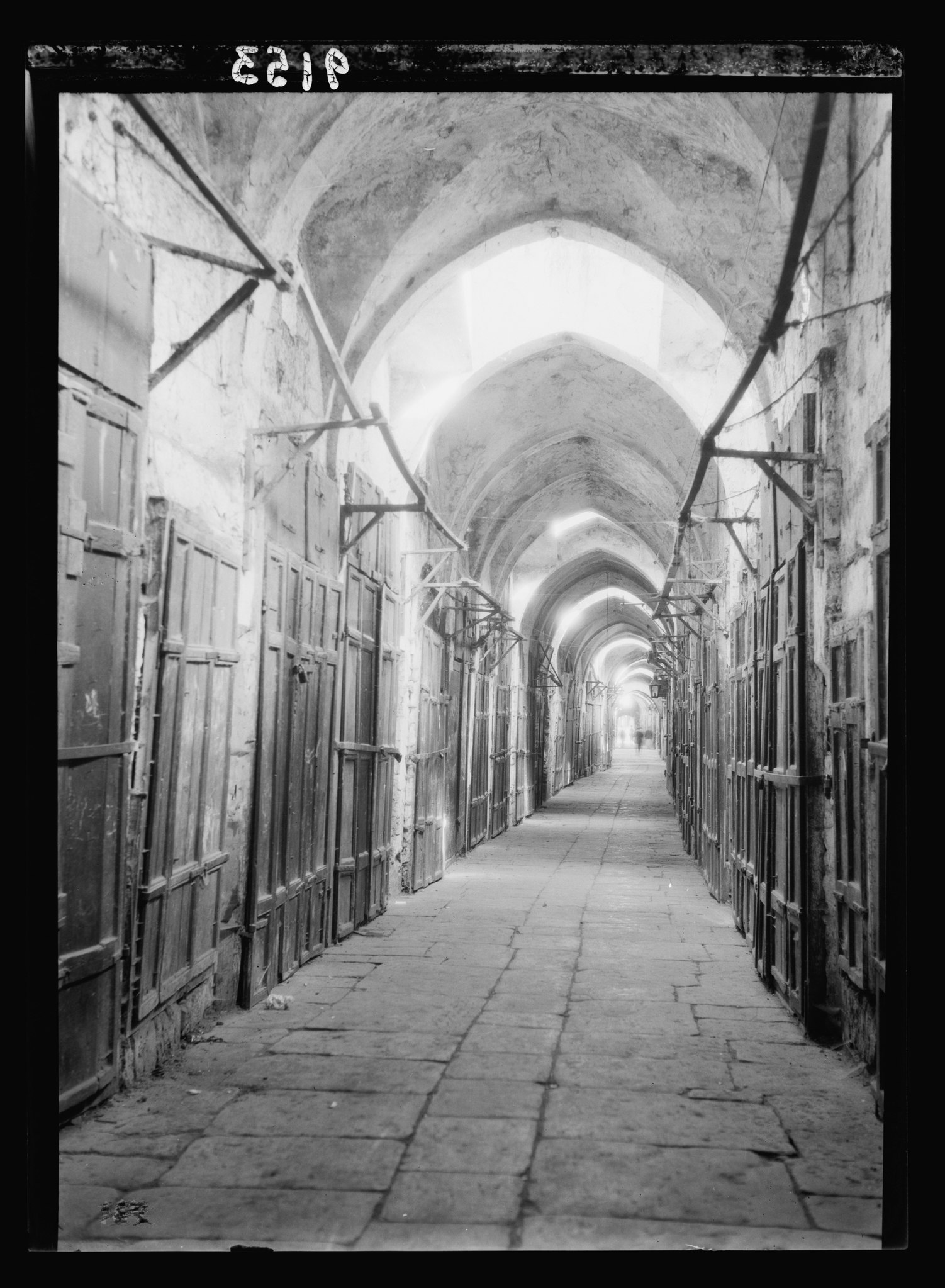
This is an illustration of what the shuttered Bahá'í shops in the ‘Akká bazaar would have looked like: this photograph shows a deserted bazaar in Jerusalem during in 1936. Source: Wikimedia Commons, originally from the G. Eric and Edith Matson Photograph Collection Library of Congress.
‘Abdu’r-Raḥmán Páshá, replaced Aḥmad Big Tafwíq as Governor and was his opposite in every way. He was a treacherous, duplicitous man who smiled at 'Abdu'l-Bahá, while plotting against Him with the enemies of the Faith. He sent report after report to higher Ottoman authorities, requesting the Bahá'í exiles to be segregated from the rest of the population, complaining that they had gained too much freedom, and were even running profitable businesses and shops.
When Constantinople sent word that prisoners of the Ottoman empire could not open shops and engage in business activities, ‘Abdu’r-Raḥmán Páshá decided to walk through the bazaar and shut down all Bahá'í-owned shops and businesses, certain that such a public act would destroy their reputation in 'Akká.
That night, the Muftí of ‘Akká, Shaykh ‘Alíy-i-Mirí, went to 'Abdu'l-Bahá and told Him about the Governor’s plan, suggesting Him to bribe the man. Instead, 'Abdu'l-Bahá went to Bahá'u'lláh for advice, who ordered all the Bahá'ís who worked in the bazaar to keep their shops closed the next morning.
Very early the next morning, ‘Abdu’r-Raḥmán Páshá confidently walked into the bazaar, surrounded by fawning officials and enemies of the Faith, only to find that all the Bahá'ís shops were closed. The Governor waited in the bazaar for an hour or two.
Around this time, Iskandar Effendi, the head of the telegraph office, rushed into the house of ‘Abbúd, pushing the curtain back with his walking stick. When Bahá'u'lláh received the message of the clerk’s arrival, He smiled and told 'Abdu'l-Bahá: “Go downstairs, Áqá [Master]! He has good news. No one can frustrate God in His purpose.”
H.M. Balyuzi, Bahá'u'lláh: The King of Glory, pages 353-354.
Adib Taherzadeh, The Revelation of Bahá'u'lláh Volume 3: ‘Akká, the Early Years 1868-1877, pages 410-411.
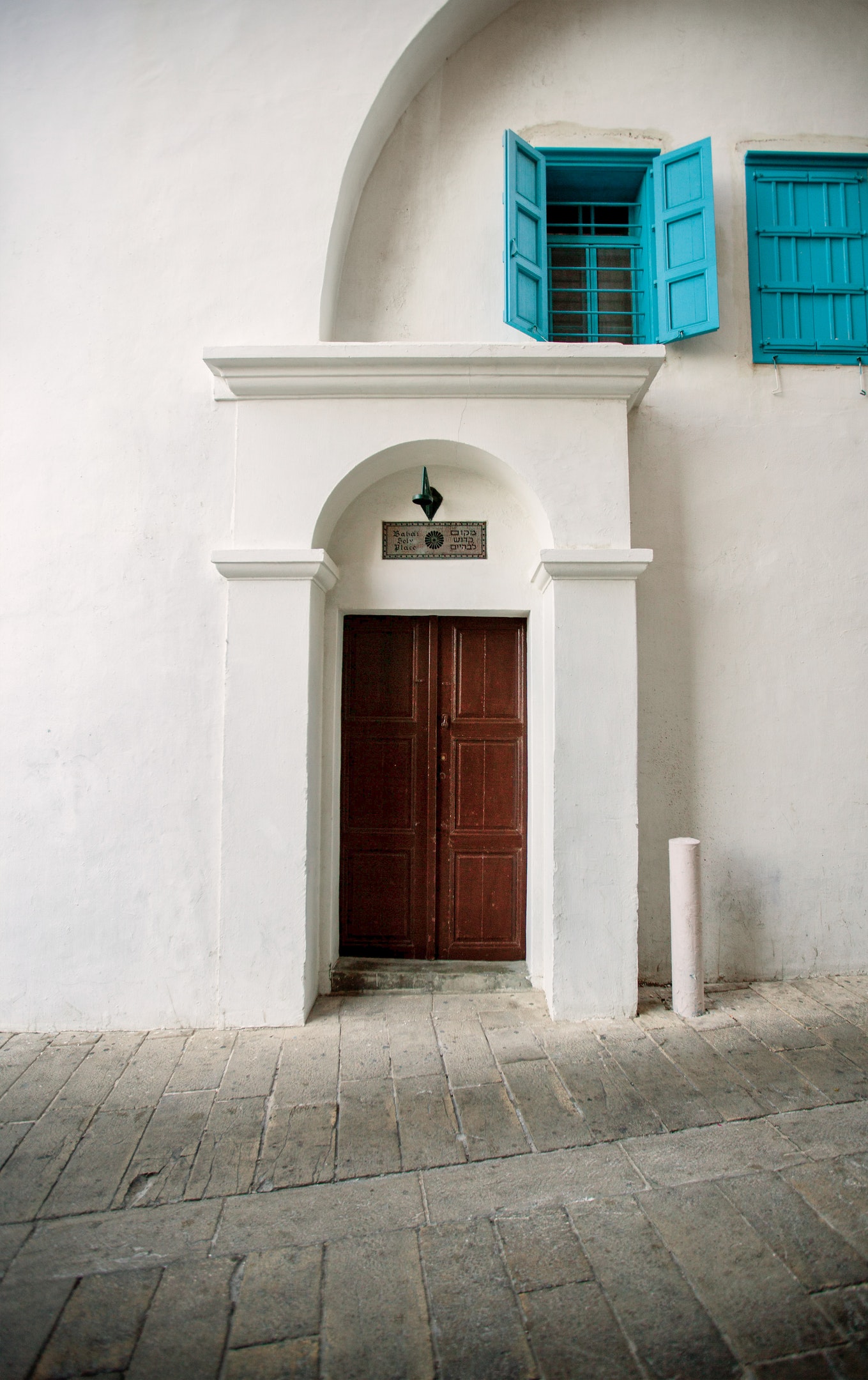
The front door of the house of ‘Abbúd, through which bursts Iskandar Effendi, the head of the ‘Akká telegraph office with momentous news! Source: Bahá'í Media Bank, Copyright © Bahá’í International Community
'Abdu'l-Bahá came down to the bírúní and Iskandar Effendi eagerly showed him an undelivered telegram he had just received from Raf’at Big, ‘Abdu’r-Raḥmán Páshá’s superior in Damascus. The cable was addressed to the Muftí, Shaykh ‘Alíy-i-Mirí, and ordered the immediate dismissal of ‘Abdu’r-Raḥmán Páshá.
‘Abdu’r-Raḥmán Páshá was still in the bazaar, waiting, when the telegram was delivered to Shaykh ‘Alíy-i-Mirí, who informed ‘Abdu’r-Raḥmán Páshá of his dismissal as Governor of ‘Akká, the temporary appointment of As'ad Effendi in his place. In his telegram, Raf’at Big also asked the Muftí to convey his greetings to 'Abdu'l-Bahá.
In total disbelief, the Muftí told 'Abdu'l-Bahá: “I am almost on the verge of losing my mind over this episode. Please tell me, what did Bahá'u'lláh say late that evening when you informed Him of the plot?” 'Abdu'l-Bahá replied that Bahá'u'lláh had ordered the believers not to open their shops that morning, counseling them to leave their affairs in the hands of God.
in an untranslated Tablet, Bahá'u'lláh describes Abdu’r-Raḥmán Páshá as the embodiment of Satan, one who ruled over God in 'Akká and affirms that God assisted him in his evil schemes for some time, before taking hold of the Governor with the hands of might and power.
H.M. Balyuzi, Bahá'u'lláh: The King of Glory, pages 353-354.
Adib Taherzadeh, The Revelation of Bahá'u'lláh Volume 3: ‘Akká, the Early Years 1868-1877, page 412-413.
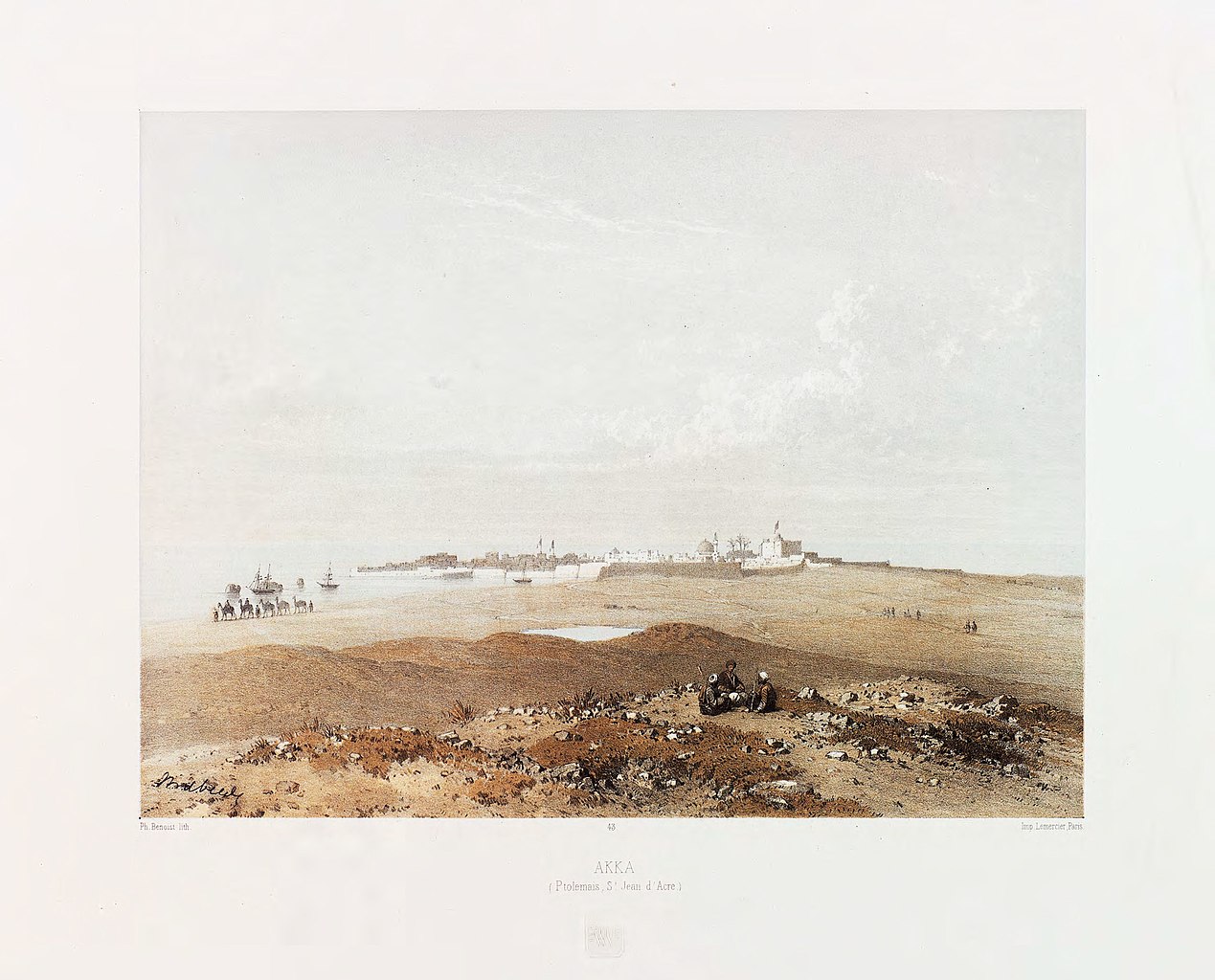
1857 watercolor of the peninsula of ‘Akká seen from land, with the Mediterranean sea spanning from the west to the east. Source: Wikimedia Commons, originally from Charles William Meredith van de Velde's Le Pays d'Israel.
During his interim term as Governor, As'ad Effendi was especially tasked to investigate ‘Abdu’r-Raḥmán Páshá’s reports regarding the Bahá'ís, and the condition of the exiles, a duty he wished to discharge impartially. He repeatedly requested to meet Bahá'u'lláh, and Ilyás ‘Abbúd pleaded in his favor. When he was finally allowed into Bahá'u'lláh’s presence, As’ad Effendi was humble and reverent, kissing the hem of His garment and begging for His blessings and confirmations.
H.M. Balyuzi, Bahá'u'lláh: The King of Glory, page 354.
Adib Taherzadeh, The Revelation of Bahá'u'lláh Volume 3: ‘Akká, the Early Years 1868-1877, page 413.
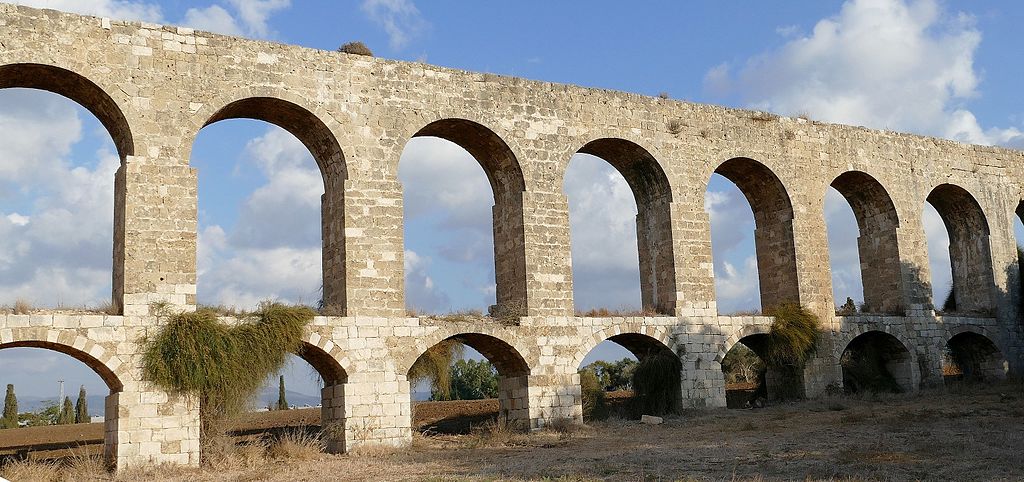
A portion of the aqueduct of ‘Akká. Source: Wikimedia Commons.
Fayḍí Páshá was the next Governor of 'Akká, and his term only lasted two months. He was a well-known personality in Constantinople’s government circles and known as a man of action. Though his tenure in office was short, he was very friendly towards the Bahá'ís and accomplished a great deal for education in ‘Akká.
Fayḍí Páshá became an ardent admirer of 'Abdu'l-Bahá, and one day, noticing that Muslim divines were holding religious discussions in the mosque, he expressed his displeasure that 'Abdu'l-Bahá was not present, something the divines told him was prohibited by the Sulṭán’s edict. When Fayḍí Páshá noticed 'Abdu'l-Bahá never left the walls of ‘Akká, he sent word that He should feel free to visit localities outside the city. In the short time he was Governor, Fayḍí Páshá’s admiration and support greatly elevated the prestige of the Faith.
Ever the man of action, Fayḍí Páshá also used his short term in office to complete repairs to the aqueduct. He noticed the work had stopped and drafted municipal workers to complete the project, supervising it himself, and completing six months’ work in just six days. After 30 years, fresh water finally flowed to ‘Akká again and one hundred and one cannon shots were fired to celebrate the momentous occasion.
One day, ‘as 'Abdu'l-Bahá was recounting Fayḍí Páshá’s activities to Bahá'u'lláh in some detail and praising his steadfastness and sincerity. Bahá'u'lláh said: “Áqá [Master]! this Páshá is a great personality. A man as great as he will not be allowed to remain here very long. You will find that he will be summoned to Istanbul suddenly by a telegram. If there were a few personalities such as this among the Ottoman rulers, the Government would have made good progress.”
An hour later, the chief of the telegraph office showed 'Abdu'l-Bahá a cable from Constantinople, recalling Fayḍí Páshá. Before taking his leave, the benevolent Governor offered the Bahá'ís his continued support, telling them to send him a telegram if they ran into any difficulties in his absence. Back in Constantinople, he had nothing but kind words to say about Bahá'ís in the gatherings he attended.
H.M. Balyuzi, Bahá'u'lláh: The King of Glory, pages 354-355.
Adib Taherzadeh, The Revelation of Bahá'u'lláh Volume 3: ‘Akká, the Early Years 1868-1877, pages 24-25 and pages 413-414.
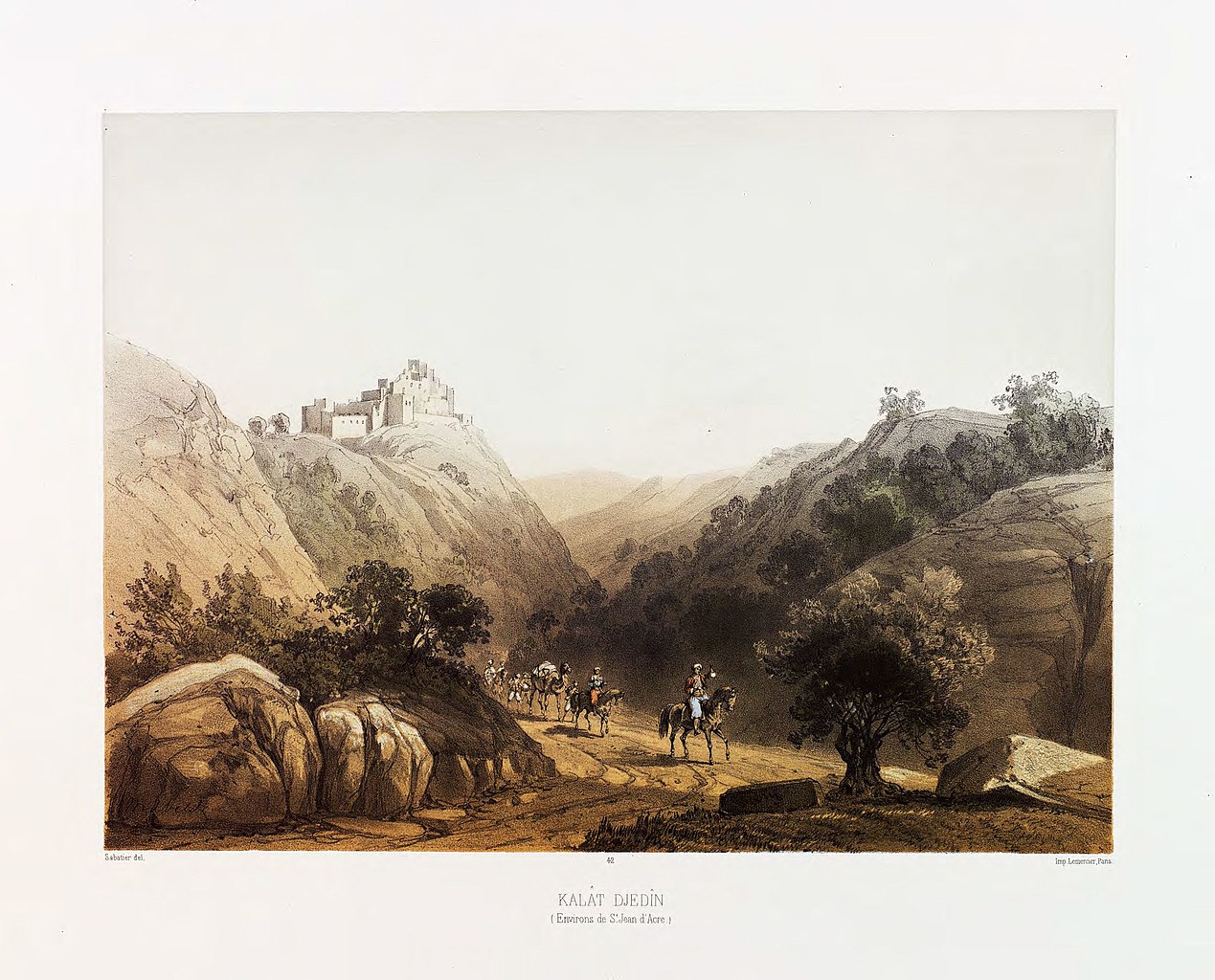
1857 watercolor of Kalat-Djedin, in the outskirts of ‘Akká. In the story below, Governor Muṣṭafá Ḍiyá Páshá indicated to Bahá'u'lláh He was free to leave the boundaries of the city. Source: Wikimedia Commons, originally from Charles William Meredith van de Velde's Le Pays d'Israel.
Ibráhím Páshá Ḥaqqí, was the next Governor of 'Akká, an honest man, also very friendly towards the Bahá'ís. After him, Muṣṭafá Ḍiyá Páshá was appointed Governor and remained at his post for a number of years, unlike his four predecessors. Muṣṭafá Ḍiyá Páshá showed even more goodwill towards the Bahá'ís than the previous governors.
He was so impressed with 'Abdu'l-Bahá and the Bahá'í community, that he intimated Bahá'u'lláh was free to leave the boundaries of ‘Akká and move to the countryside, an offer Bahá'u'lláh refused as it went against the Sulṭán’s edict.
H.M. Balyuzi, Bahá'u'lláh: The King of Glory, page 355.
Adib Taherzadeh, The Revelation of Bahá'u'lláh Volume 3: ‘Akká, the Early Years 1868-1877, pages 24-25 and page 414.
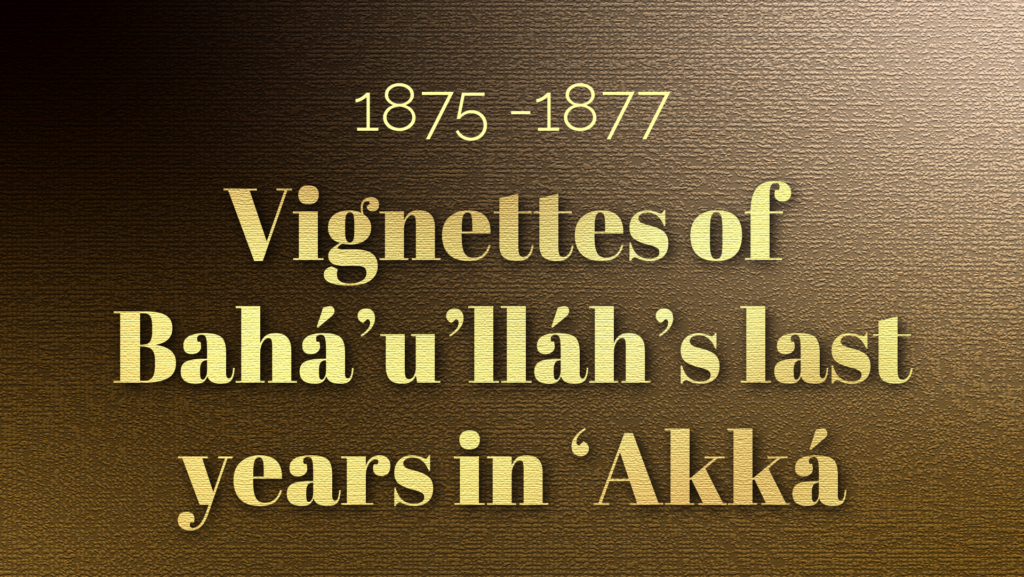
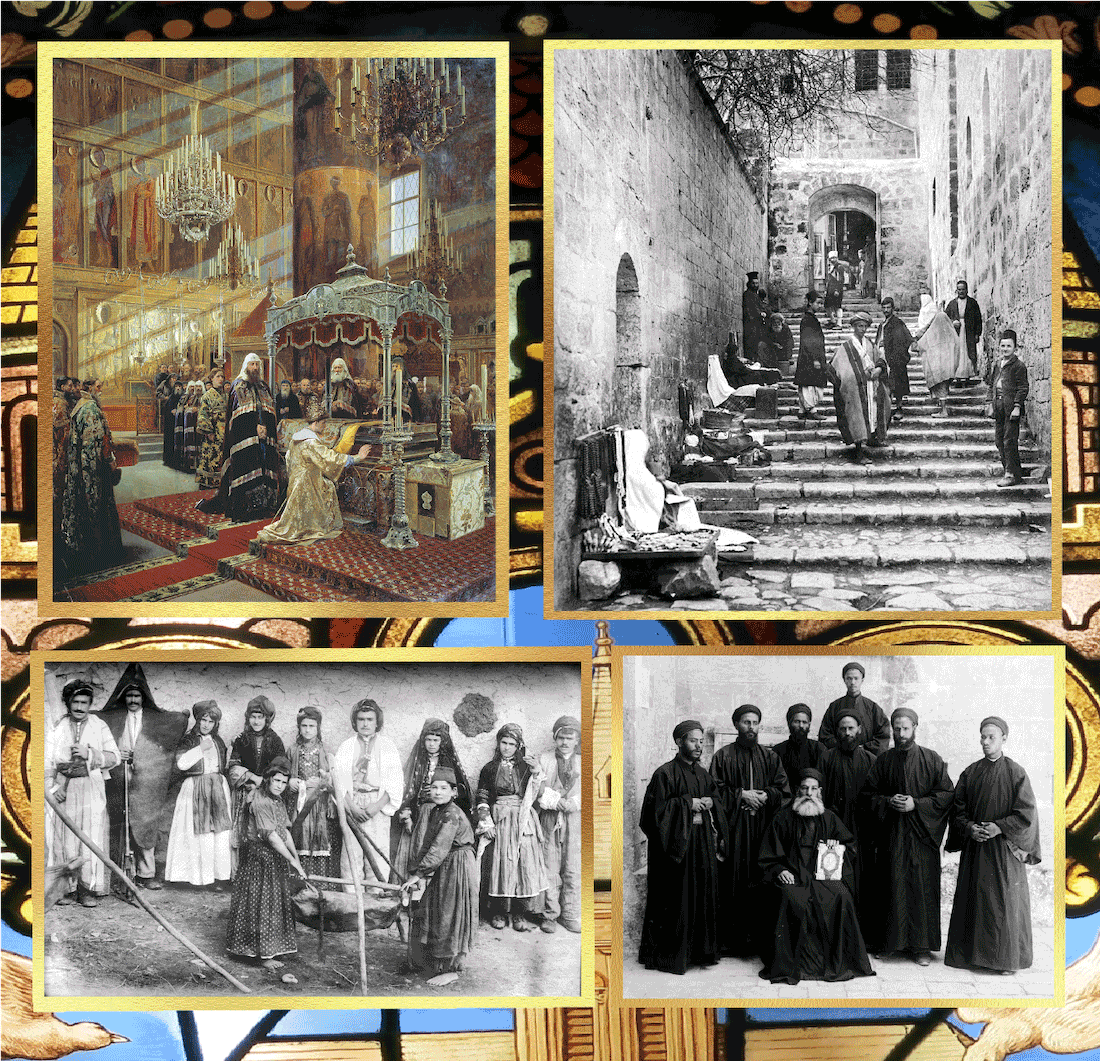
Four vignettes of 19th century Christianity around the world, on a background of a 19th century stained glass window from the church of Saint-Pierre-Saint-Paul in Colombes in France (Source): Young Czar Alexis praying before relics of Philip in the presence of Patriarch Nikon (Source), Street in the Christian neighborhood in Jerusalem, in 1870 (Source), Christian family making butter, Mawana, Persia (Source), Coptic monks between 1898 and 1914 (Source). All images from Wikimedia Commons.
The Lawḥ-i-Aqdas (Tablet to the Christians) is considered to be Bahá'u'lláh’s first proclamatory Tablet to the Christian people, in which he unequivocally declares His station as the Father whose coming Jesus Christ had prophesied, through Whom the Spirit of Truth has been manifested to humanity. In this Tablet, Bahá'u'lláh addresses the Christians as “'followers of the Son,” admonishing them for not having recognized Him as the Jews “who rejected” Jesus Christ.
Bahá'u'lláh also addresses the ecclesiastical order of Christianity, priests, bishops and monks, announcing to them the joyful news of His Revelation, and summoning them to come out of their churches and proclaim His Cause to all mankind.
In this Tablet, Bahá'u'lláh prophecies the rapid growth of the Bahá'í Faith in the West: “In the East the Light of His Revelation hath broken; in the West the signs of His dominion have appeared.” The Lawḥ-i-Aqdas concludes with a lengthy, poetic, and soul-stirring passage enshrining the tokens of God’s bounty to mankind beginning with the verses: “Say: Blessed the slumberer who is awakened by My Breeze. Blessed the lifeless one who is quickened through My reviving breaths. Blessed the eye that is solaced by gazing at My beauty….”
Bahá'u'lláh, Lawḥ-i-Aqdas (The Most Holy Tablet/The Tablet to the Christians).
Adib Taherzadeh, The Revelation of Bahá'u'lláh Volume 4: Mazra’ih and Bahjí 1877-1892, pages 227-235.
DATE
University of California Merced: Hurqalya Publications: Bahá'u'lláh Bibliography I: Persian and Arabic
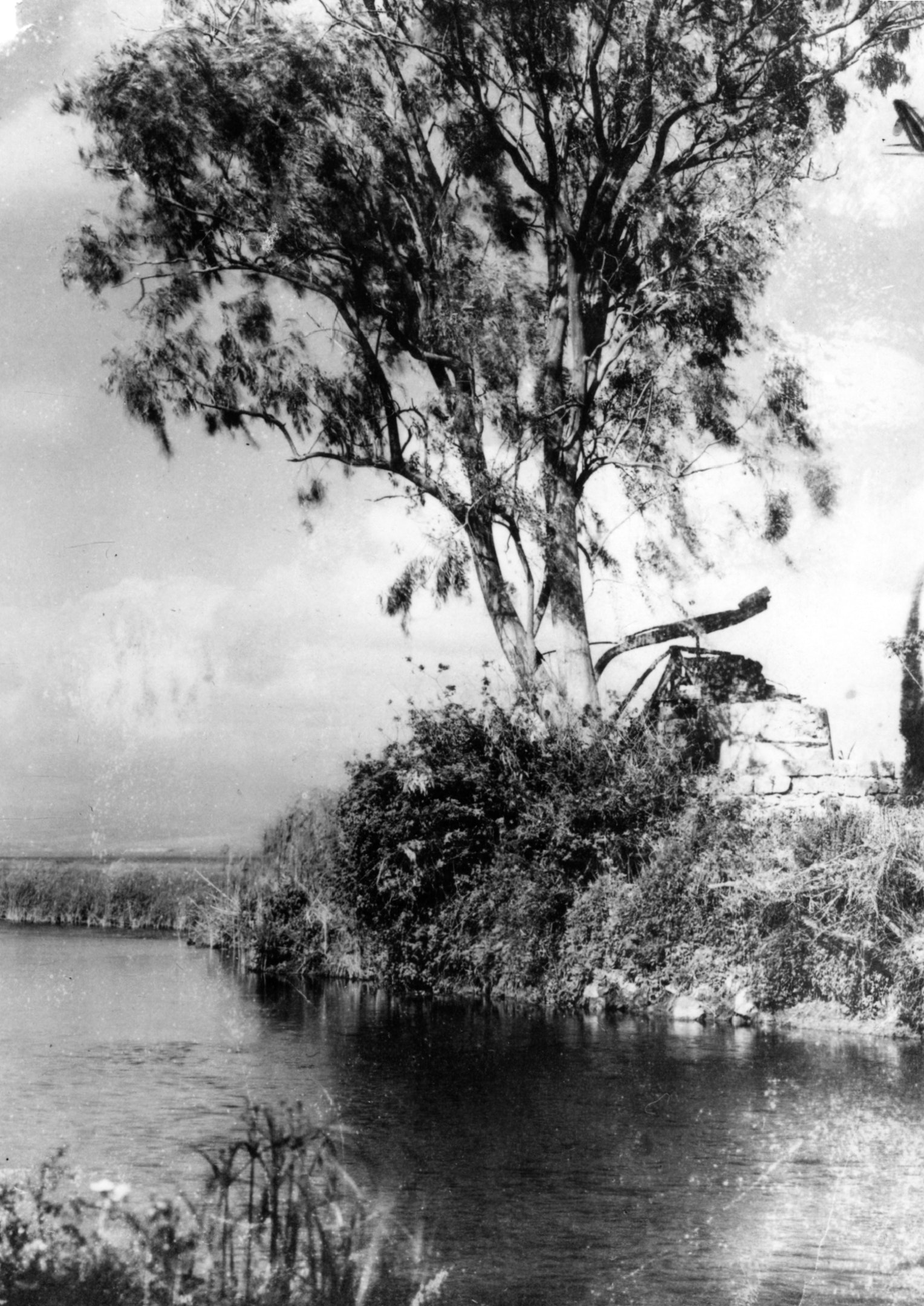
Water pump at the Riḍván Garden in the 1920s. Bahá'í Media Bank, Copyright © Bahá’í International Community.
'Abdu'l-Bahá began meticulously preparing Bahá'u'lláh’s move to the countryside of ‘Akká. Bahá'u'lláh had not set foot outside the desolate stone walls of 'Akká for nearly a decade and His only physical exercise had been pacing the stone floor of His bedchamber. In 1875, 'Abdu'l-Bahá took the first major step in making Bahá'u'lláh’s retirement in nature a reality: He rented a garden.
The Na‘mayn (Two yeses) was a little river that ran one kilometer (0.6 miles) outside of ‘Akká, a little river with a prophetic name: in Islamic tradition, on the Last Day, when God called out"Am I not your Lord?" the response "Yes!" would be called out twice. The river emptied itself close to the Mediterranean, but in its final little meanderings, it hugged a little green knoll, a verdant isle, which 'Abdu'l-Bahá rented for Bahá'u'lláh, and baptized the Riḍván (Paradise) garden, in homage to the Riḍván garden of Baghdád.
At the time, there was only one structure in the Riḍván garden, a simple one-room house for the gardener and caretaker. 'Abdu'l-Bahá oversaw the planting of fruit trees to beautify the garden before Bahá'u'lláh’s visited it.
David S. Ruhe, Door of Hope: The Bahá’í Faith in the Holy Land, page 91.
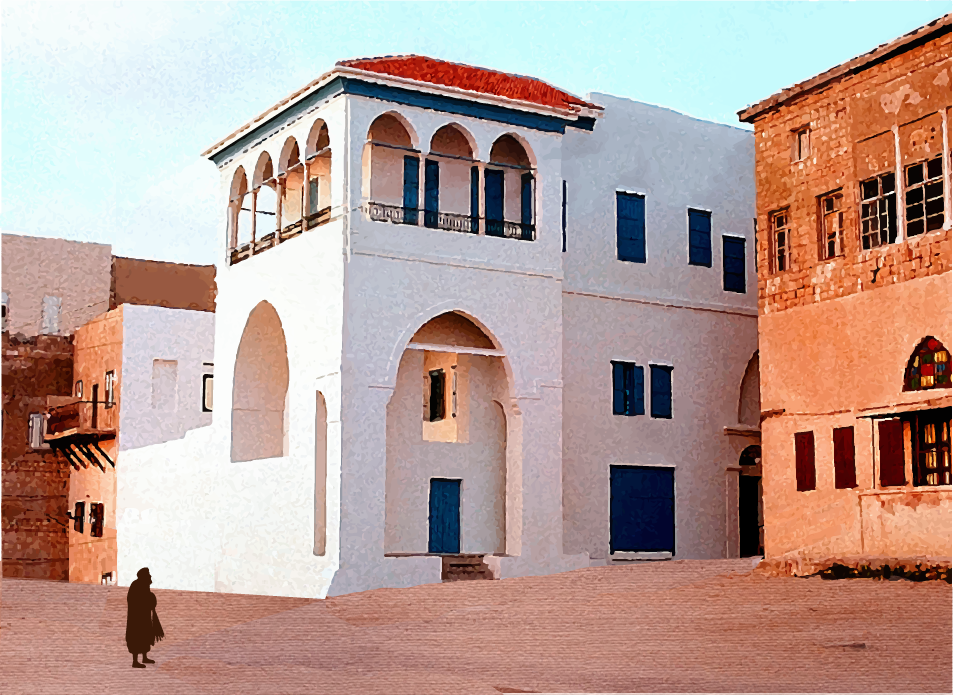
An artistic recreation of the house of ‘Abbúd with a clean-swept street. Source of the original image for inspiration of the recreation: Bahá'í Historical Facts. © Violetta Zein.
Muḥammad-Hádíy-i-Ṣaḥḥáf was a celebrated bookbinder and manuscript illuminator from Iṣfahán. His journey from Persia to attain Bahá'u'lláh’s presence was dreadful and filled with extreme hardship, until he arrived in 'Akká and became a prisoner of the Ottoman empire.
Muḥammad-Hádíy-i-Ṣaḥḥáf stationed Himself below the house of ‘Abbúd, kept the street outside Bahá'u'lláh’s house spotless and gleaming. At the time, the streets of 'Akká were covered in earth, so Muḥammad-Hádíy swept the area around the house of ‘Abbúd, then sprinkled water to pat it down and keep the dirt from turning to dust. He was so constant and thorough that the square in front of the house of ‘Abbúd was always immaculate. Bahá'u'lláh would often gaze at it from His balcony, and say, smiling: “Muḥammad-Hádí has turned the square in front of this prison into the bridal bower of a palace. He has brought pleasure to all the neighbors and earned their thanks.”
Once Muḥammad-Hádí’s sweeping, sprinkling and tidying was done, he would turn to his other occupation, illuminating and binding the various books and Tablets revealed by Bahá'u'lláh. From time to time, Bahá'u'lláh, a smile on His lips, would speak to Muḥammad-Hádí, expressing to him kindness and grace.
'Abdu'l-Bahá, Memorials of the Faithful: Muḥammad-Hádíy-i-Ṣaḥḥáf
Adib Taherzadeh, The Revelation of Bahá'u'lláh Volume 3: ‘Akká, the Early Years 1868-1877, pages 402-403.
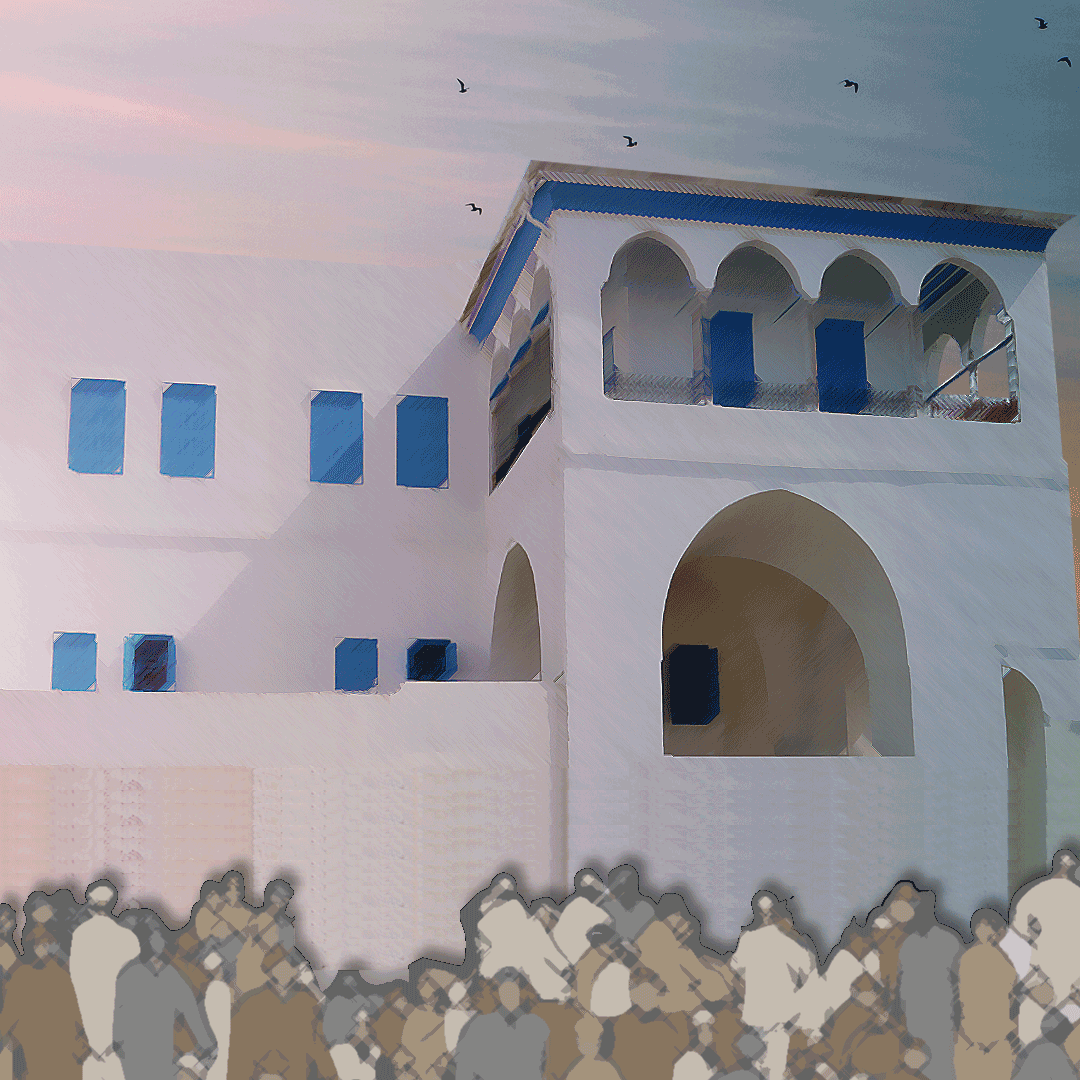
Artistic illustration of Bahá'í believers in ‘Akká, gathered together and waiting at sunset for Bahá'u'lláh to appear on the balcony of the house of ‘Abbúd and summon someone to His presence. Original photo from which the reconstruction was designed: Photograph of the house of ‘Abbúd by Zairon on Wikimedia Commons. © Violetta Zein.
By early 1877, Ḥájí Mírzá Ḥaydar-'Alí had been released from prison in the Sudan and was living in ‘Akká, and recounted a beautiful scene in the 'Akká Bahá'í community in his memoirs.
Bahá'u'lláh often walked on the outdoor veranda which wrapped around His room on the upper floor of the house, where He could be in the fresh air and gaze out at the Mediterranean Sea, between three hours before and three hours after sunset.
In early 1877, there were about 100 Bahá'ís in ‘Akká, residents and pilgrims combined, and most evenings the believers would gather in the street below Bahá'u'lláh’s balcony at the appointed time. Some stood, others sat and some believers walked around the house while they waited and gazed at Bahá'u'lláh, pacing.
Bahá'u'lláh would signal some believers to come up, and they rushed to enter His presence, leaving their companions’ hearts filled with joy for their honor. After his audience, the individual would be so transported that it would take him some time to regain awareness, recognize his companions and speak to them. Few of them remembered what Bahá'u'lláh had said to them, and no one was ever able to adequately describe what being in Bahá'u'lláh’s presence was truly like.
Adib Taherzadeh, The Revelation of Bahá'u'lláh Volume 3: ‘Akká, the Early Years 1868-1877, pages 401-102.
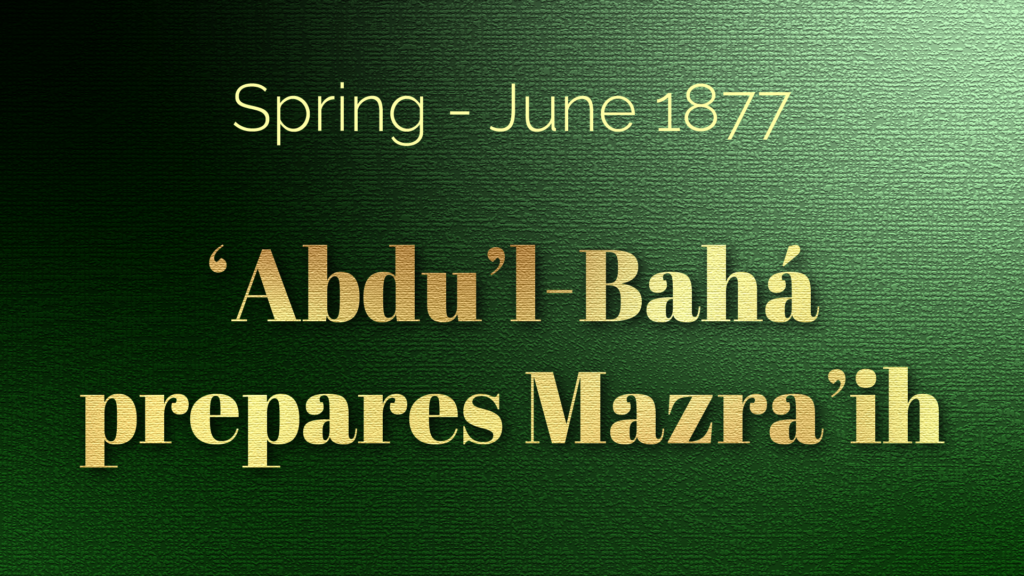

Six gorgeous photographs of Mázindarán, the northern region of Iran. Photographers, top to bottom, left to right: Moj taba Hoseini on Unsplash, Mh Afrogh on Unsplash, Mojtaba Mohtashami on Unsplash, kasra on Unsplash, Mehdi MeSSrro on Unsplash and dash masoud on Unsplash
Mazindárán, Bahá'u'lláh's ancestral home, was a staggeringly beautiful corner of Persia, with breathtaking vistas of greenery, awe-inspiring landscapes created by the high mountains in close proximity to the Caspian sea, and delightful rivers winding through valleys filled with fragrant citrus groves. Bahá'u'lláh loved oriental gardens and their fragrant flowers and shrubs, lush, heavy rosebushes with nightingales warbling, and as a youth spent much of the spring and summer outdoors, in the beautiful open countryside of His home district of Núr.
Bahá'u'lláh grew up surrounded by this inexhaustible reservoir of beauty, and even in His childhood was a great lover of nature, spending as much time as He could outdoors. Then, at the age of 35, He was thrown into the Siyáh-Chál and exiled for the next sixteen years until He was banished to a gloomy prison-city with not a single tree or blade of grass. He was a prisoner and He was deprived of the beauty of God’s creation, something that caused Him great suffering.
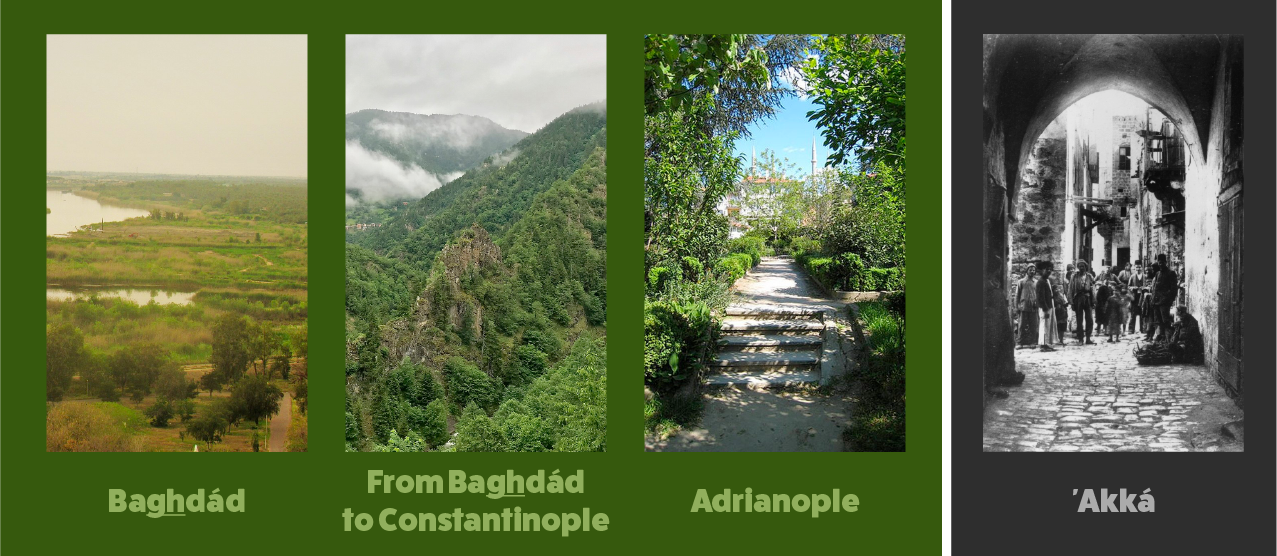
The stark contrast between the greenery Bahá'u'lláh was able to enjoy, His trials and tribulations notwithstanding in Baghdád, on the banks of the Tigris (Wikimedia Commons), on His long between Baghdád and Sámsún (Wikimedia Commons), and in Adrianople (Wikimedia Commons). These places all appear vivid and bright compared to the grey and stone which Bahá'u'lláh gazed on for nine years in the prison-city of ‘Akká (Bahá'í Media Bank, Copyright © Bahá’í International Community.)
For its lack of greenery and access to nature, ‘Akká was the worst and most depressing out of Bahá'u'lláh's four exiles. In Baghdád, Bahá'u'lláh was free to walk along the River Tigris in the open air and pitch His tent in Mazra'iy-i-Vashshásh for days at a time. During His long march to Constantinople, He crossed raging rivers and traveled through heavily-wooded forests, climbing up and down mountains and hills. In Adrianople, the believers rented a vast garden for Him, and He enjoyed a garden in His own home. The house of ‘Abbúd had a view of the sea, but it did not have a garden, and 'Akká, was devoid of any trees, plants. or flowers.
One day, Bahá'u'lláh made a passing remark to a believer saying “I have not gazed on verdure for nine years. The country is the world of the soul, the city is the world of the bodies.” Bahá'u'lláh’s comment made its way to 'Abdu'l-Bahá, and one can only imagine how heartbreaking it must have been for him to hear His Father longing to be surrounded by the beauty of nature. 'Abdu'l-Bahá took it upon Himself to take Bahá'u'lláh out of 'Akká, and into the countryside, where He could be surrounded by verdure.
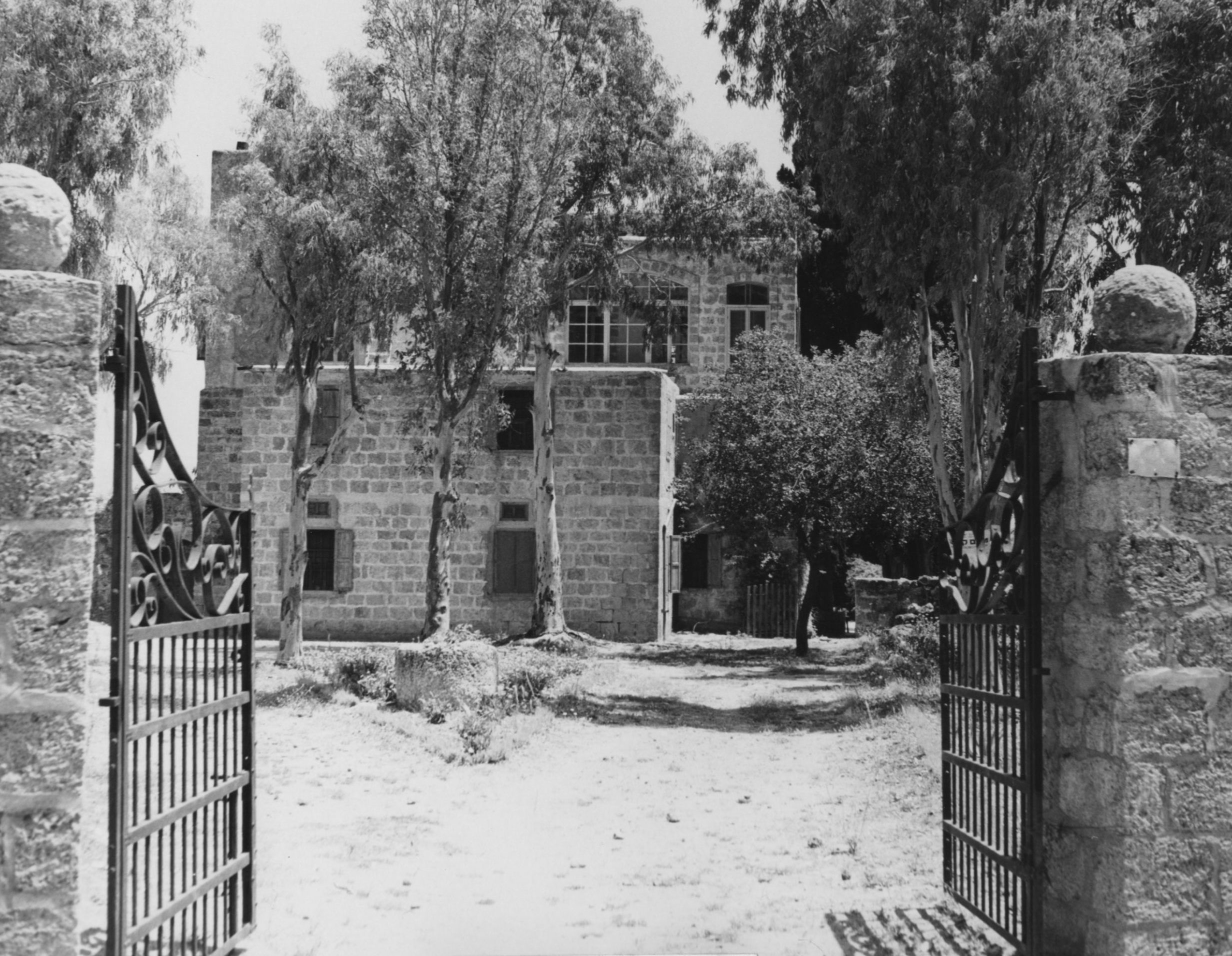
The entrance of the mansion of Mazra'ih in 1952. Bahá'í Media Bank, Copyright © Bahá’í International Community.
'Abdu'l-Bahá found the perfect place. Mazra'ih was a lovely little mansion in the countryside of 'Akká, with a stream surrounded by gardens. Mazra’ih was about 6.5 kilometers (4 miles) away from ‘Akká, and had been abandoned by its invalid owner, Muḥammad Páshá Ṣafwat, who found it too remote. He agreed to rent it to 'Abdu'l-Bahá, who had the rental agreement drawn up for five years in advance.
'Abdu'l-Bahá hired laborers to repair Mazra‘ih, had a bath built, hired a gardener, and prepared a carriage to take Bahá'u'lláh, an extremely rare luxury in 'Akká in 1877.
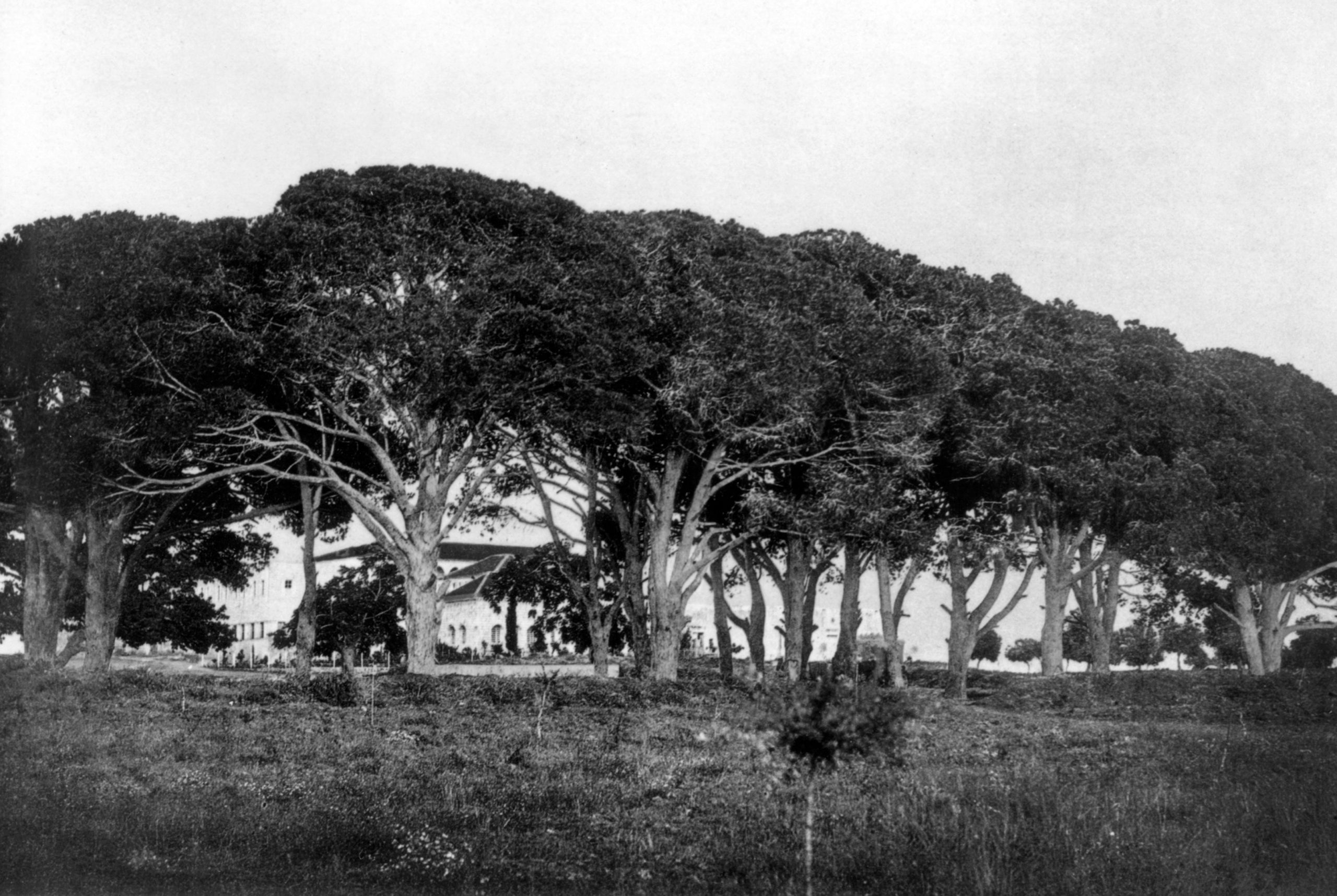
A 1900s photograph of the pines of Bahjí on the land of the Jamál brothers, site of the banquet organized by 'Abdu'l-Bahá, which was a clear sign that Bahá’u’lláh could leave the boundaries of ‘Akká. Bahá'í Media Bank, Copyright © Bahá’í International Community.
'Abdu'l-Bahá’s preparations were very careful and included testing whether or not He and Bahá'u'lláh would be allowed outside the walls of 'Akká, since He had so far done all the work, including managing the repairs to Mazra’ih, from inside the city. He first tested the guards at the Land Gate of 'Akká, as He walked to Mazra’ih, and they did not stop Him.
It was time for the second test, this time with ‘Akká officials. On a Spring day of 1877, 'Abdu'l-Bahá organized a lovely banquet under the pines near Bahjí, ‘Údí Khammár’s palatial mansion. He spread a table, shaded by the towering trees, and hosted notables and officials of 'Akká. In the evening, after the pleasant banquet, they all returned to 'Akká together.
It was abundantly clear that the Sulṭán’s edict confining the Bahá'ís strictly to the walls of ‘Akká was a dead letter, and the banquet confirmed for 'Abdu'l-Bahá that no one would stop Bahá'u'lláh from living at Mazra’ih. All He had to do now was convince Bahá'u'lláh to leave 'Akká, but He would need help.
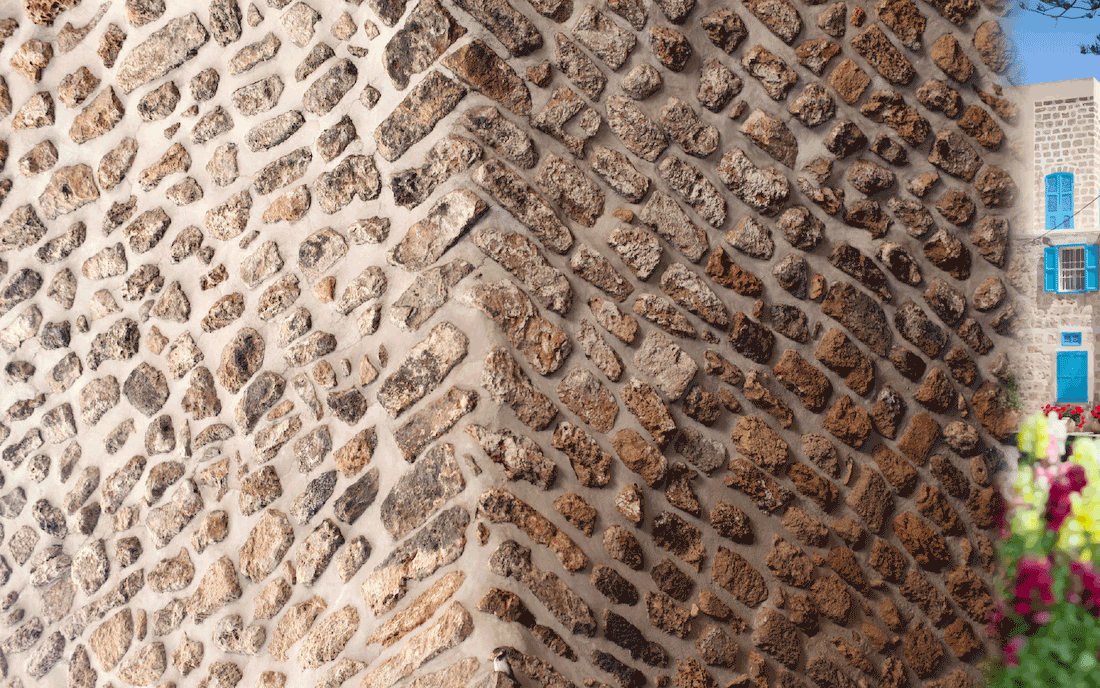
A symbolic interpretation of Bahá'u'lláh’s refusal to go beyond the walls, even as 'Abdu'l-Bahá offers Him the greenery and peace at Mazra’ih: the stone detail is from the land gate of ‘Akká (Bahá'í Media Bank), behind which Bahá'u'lláh chooses to remain, and beyond the gate, the small colorful portion is a detail of the greenery at Mazra’ih ( Bahá'í Media Bank, Copyright © Bahá’í International Community.)
The first time, 'Abdu'l-Bahá went to Bahá'u'lláh, offering to bring Him to Mazra’ih in the carriage He had prepared, saying: “The palace at Mazra’ih is ready for you, and a carriage to drive you there.” Bahá'u'lláh refused, responding: “I am a prisoner.” 'Abdu'l-Bahá asked Bahá'u'lláh to please consider leaving ‘Akká and living in Mazra’ih, and was met with a second refusal: “I am a prisoner.” The third time 'Abdu'l-Bahá asked, Bahá'u'lláh denied Him again with a single word: “No!”
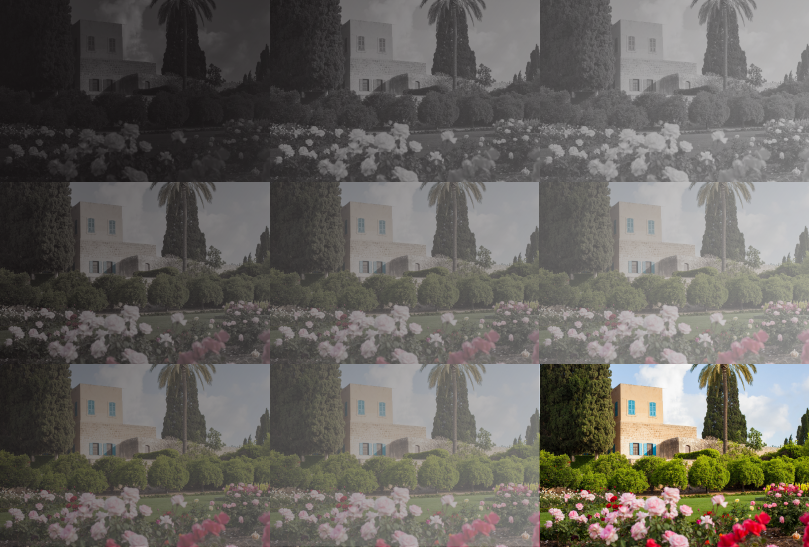
Nine progressively more color-saturated photographs of Mazra’ih culminating in the fully-saturated mansion in all its loveliness, to symbolize the repeated attempts of 'Abdu'l-Bahá and the Muftí of ‘Akká to convince Bahá'u'lláh to dwell in the little paradise and leave the gloomy city of ‘Akká. Many times, Bahá'u'lláh repeated “I am a prisoner.” Original photograph: Bahá'í Media Bank, Copyright © Bahá’í International Community.
'Abdu'l-Bahá enlisted the help of Shaykh ‘Alíy-i-Mírí, the Muftí of 'Akká, a deeply kind man devoted to Bahá'u'lláh, and scripted his encounter with Bahá'u'lláh, instructing him: “You are daring. Go tonight to His Holy Presence, fall on your knees before Him, take hold of His hands and do not let go until He promises to leave the city!”
The Shaykh went straight to Bahá'u'lláh and sat close to His knees. Then, as scripted by 'Abdu'l-Bahá, he took Bahá'u'lláh’s hands in his, and kissed them asking: "Why do you not leave the city?" Bahá'u'lláh gave the Muftí the same response He had given His Son: "I am a prisoner." The Shaykh exclaimed, almost offended: "God forbid! Who has the power to make you a prisoner? You have kept yourself in prison. It was your own will to be imprisoned, and now I beg you to come out and go to the palace. It is beautiful and verdant. The trees are lovely, and the oranges like balls of fire!"
To each and every entreaty the Muftí made, Bahá'u'lláh said: "I am a prisoner, it cannot be." This went on for an hour, with the Muftí was magnificently and devotedly stubborn, kissing Bahá'u'lláh’s hands, and pleading, until in the end, Bahá'u'lláh consented with two words: "Khaylí khub” (very good). The Muftí immediately shared the happy news with 'Abdu'l-Bahá, filled with joy and excitement.
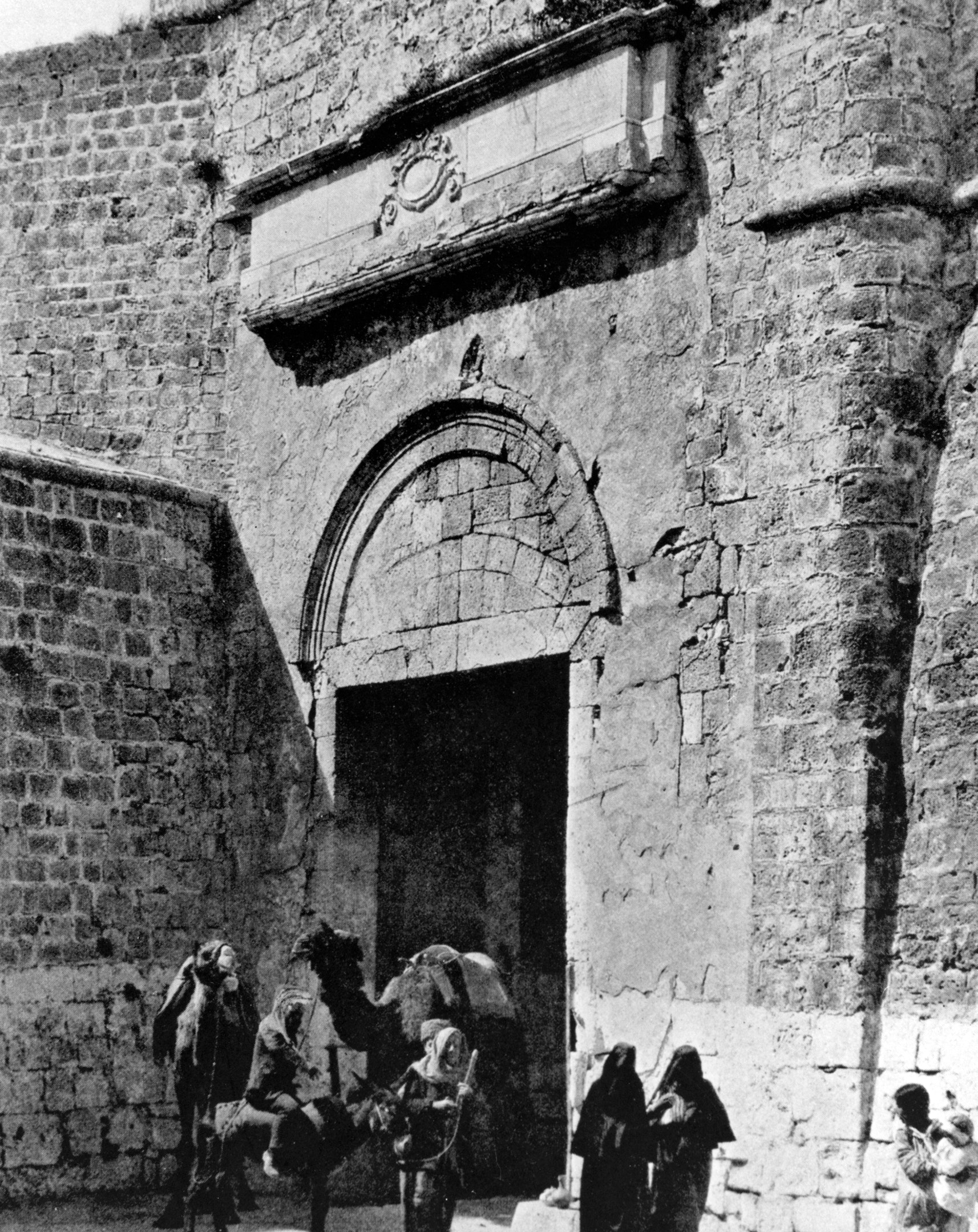
Bahá’u’lláh, who had entered ‘Akká through the sea gate in August 1968, left the city of ‘Akká for the first time in nine years in June 1877 through the land gate, seen here from outside the city walls around 1921. Bahá'í Media Bank, Copyright © Bahá’í International Community.
The very next day and nine years after Bahá'u'lláh had entered ‘Akká through the Sea Gate, 'Abdu'l-Bahá took the carriage He had carefully prepared, and drove the Blessed Beauty to Mazra’ih through the Land Gate in great dignity. No one objected or tried to stop Them.
For the first time in almost a decade, Bahá'u'lláh was beyond the walls of the prison-city of 'Akká, He would live in a lush garden surrounded by verdure, far from the turmoil and oppressive atmosphere of ‘Akká. The final and glorious chapter of Bahá'u'lláh’s ministry had just begun.
SOURCES FOR THIS SECTION
Shoghi Effendi, God Passes By.
H.M. Balyuzi, Bahá'u'lláh: The King of Glory, pages 357-359.
David S. Ruhe, Door of Hope: The Bahá’í Faith in the Holy Land, pages 83-85.
Adib Taherzadeh, The Revelation of Bahá'u'lláh Volume 3: ‘Akká, the Early Years 1868-1877, pages 414-415.
HOW THE DATE WAS OBTAINED
The date of between 3- 10 June 1877 for the liberation of Bahá'u'lláh from ‘Akká was obtained from the note on page 235 in David S. Ruhe, Door of Hope: The Bahá’í Faith in the Holy Land.
̉
